
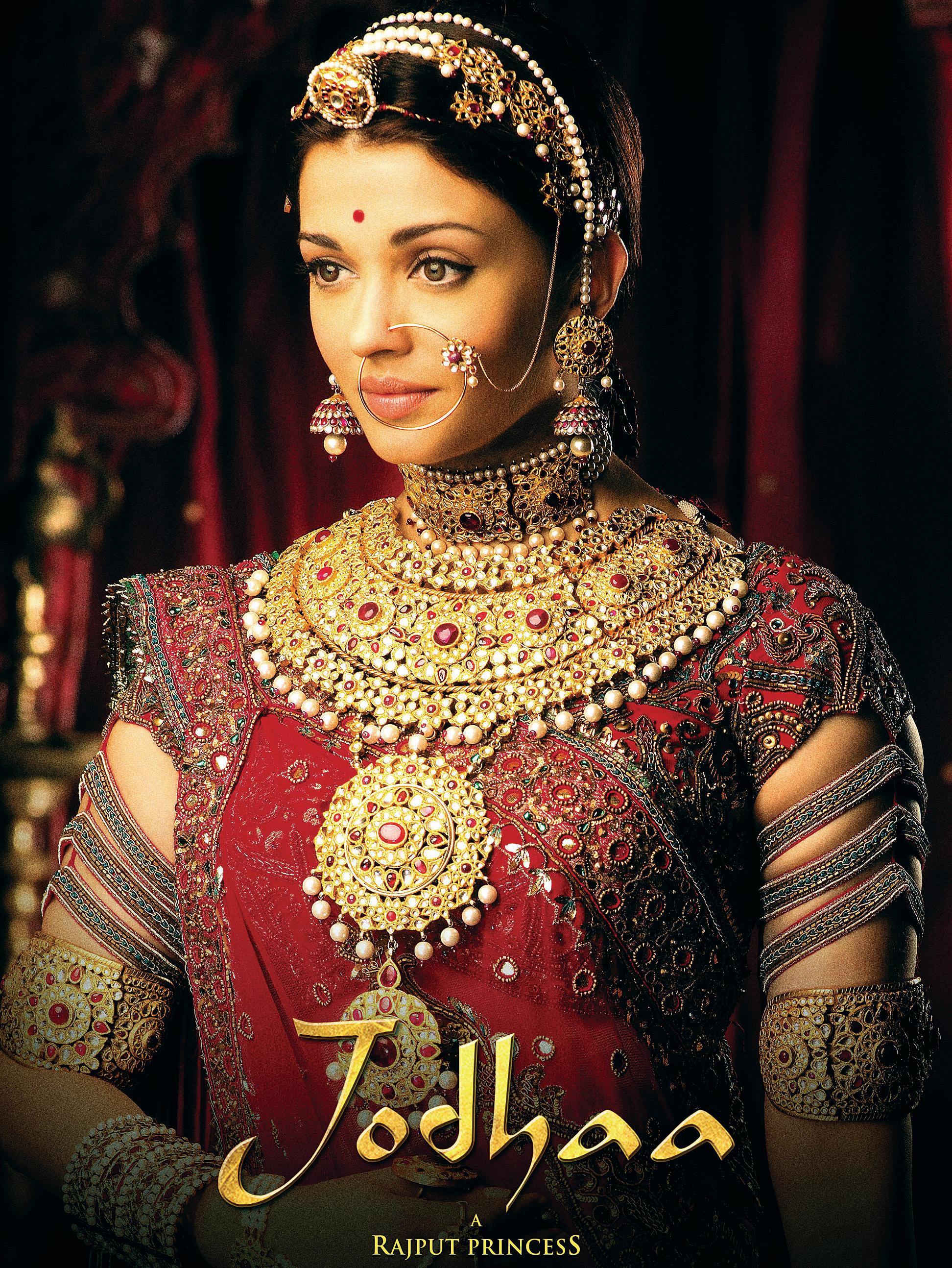


FREE Vol. 18 No. 12 (2) • September (2) 2011 • www.indianlink.com.au • FORTNIGHTLY SYDNEY Level 24/44 Market St, Sydney 2000 • GPO Box 108, Sydney 2001 • Ph: 18000 15 8 47 • email: info@indianlink.com.au Sydney • Melbourne • Adelaide • Brisbane • Perth • Canberra A fascinating analysis by film expert Rachel Dwyer The Biopic in Bollywood

2 <> SEPTEMBER (2) 2011 INDIAN LINK

SEPTEMBER (2) 2011 <> 3 NATIONAL EDITION

4 <> SEPTEMBER (2) 2011 INDIAN LINK
INDIAN LINK
PUBLISHER
Pawan Luthra
EDITOR
Rajni Anand Luthra
ASSISTANT EDITORS
Sheryl Dixit, Gaurav Pandey
MELBOURNE
Preeti Jabbal
CONTRIBUTORS
Uttam Mukherjee, Priyanka Tater, Farzana Shakir, Usha Ramanujam Arvind, Sai Narayan, Shraddha Arjun, Sunny Cherian, Sukrit Sabhlok, Noel G deSouza, Malli Iyer, Sandip Hor, Shafeen Mustaq, Ritam Mitra, Minal Khona, Rani Jhala
ADVERTISING MANAGER
Vivek Trivedi

02 9262 1766
ADVERTISING ASSISTANT
Nitika Sondhi 02 9279 2004
GRAPHIC DESIGN AND LAYOUT
Melissa Walsh
Indian Link is a fortnightly newspaper published in English. No material, including advertisements designed by Indian Link, maybe reproduced in part or in whole without the written consent of the editor. Opinions carried in Indian Link are those of the writers and not necessarily endorsed by Indian Link. All correspondence should be addressed to
Indian Link
Level 24/44 Market St, Sydney 2000 or GPO Box 108, Sydney 2001
Ph: 02 9279-2004 Fax: 02 9279-2005
Email: info@indianlink.com.au

Times are tough, but smart money is working hard
It is at times, difficult to believe that we live in a lucky country. Australia is supposedly going through an economic boom, yet all around there seems to be an air of gloom and doom. The Australian share market has crashed over 20% from its highs in this calendar year. Bank deposit rates are on their way down, and pundits are calling our real estate overvalued – in fact, even newspapers which make their money from real estate advertisements are talking about slashed property sales prices. It seems that for an investor, there are limited places to run and hide. What started the volatility in the last few months was the downgrade of the United States ratings by Standard and Poor’s. After months of wrangling over economic reforms between the Democrats and the Republicans in the United States, the ratings agency of S&P, took a hard line approach and, for the first time in over 70 years, the United States was marked down a notch. Around the edges in the global economy was the ongoing saga among European countries struggling to hold some members of the European Union from
BY PAWAN LUTHRA
going into bankruptcy. To prop up these countries, the stronger economies of France and Germany were busy pumping in money to keep the countries afloat. The fears of their inability to stop the debt increasing and spreading, and the absence of any strong leadership further spooked the global investment markets. While this was being played out on the international stage, the local mood was very much downbeat. A government which is very unpopular, a leader to whom no one listens, an opposition which detracts from any meaningful debate – all fuelled the psyche of a feeling of helplessness in the consumer. The media, which fed on the cycle of greed for the financial markets until 2008, was now teaching lessons in fear. The end of the world was nigh, according to the same economic commentators who only talked about blue skies at boom times.
Australia has the distinction of being on the doorstep of two of the world’s economic giants – China and India. With both these countries achieving an annual growth spate of over 8% and having, between themselves, about half of the world’s population, Australia enjoys the luxury of supplying them with resources which they need such as gold, coal and steel. Enjoying an unemployment level of less than 5% and stable growth for the economy, the fears of economic woes in Europe and US seem to be overhyped. Sure, in a global environment, all economies are interlinked, but along with the bad economies of Europe, Australia is also linked to the growing economies of Asia.
Chances are that the Chinese would ride out into the wild west frontier of Europe with their shopping baskets, and look for global economic bargains. Countries with mismanaged economies will certainly be on their shopping list. It may be time to take a cold hard look at where we in Australia are, and ask if we enjoy the confidence of who we are. For the astute, these could be buying opportunities, be it in shares or property.
SEPTEMBER (2) 2011 <> 5 NATIONAL EDITION www.indianlink.com.au EDITORIAL
What’s On
FESTIVAL
Raas Garba and Dandia
28 Sept – 5 Oct Shri Shirdi Sai Mandir will be organizing garba and dandia each night after Shej Arti. Dussherah celebrations on 6 Oct. 420 Liverpool Rd, Strathfield South. Details 0432 502 493 or visit www.shirdisai.org.au
Deepavali Milan
Sat 8 Oct Diwali celebration including Laxmi poojan by Panditji, excerpts from the Ramayana, cultural performances by kids and professionals, lucky draw, and snacks and dinner. 6.00pm at Hornsby War Memorial Hall, 2 High St, Hornsby. Details Kamini Sahni 0401 059 923, Shibani Sahni 0416 601 688.
Diwali Ball
Sat 15 Oct Aum Foundation celebrates the Festival of Lights at their inaugural fundraising event, a 4-hour cruise aboard the Starship Sydney on Sydney Harbour. Details visit www.aumfoundation.com.au
Diwali Cruise
Sun 23 Oct Australia Hindi Indians Association (AHIA) announces a Diwali celebration on Sydney Harbour. Open this year to non-members. Board 5.00pm sharp at Huntleys Point Wharf, Gladesville. Details Pravesh Babhoota 0422 008 907.
Grand Diwali Dinner
Sat 5 Nov India Club announces Diwali Dinner with entertainment and special prizes. 6.15pm at Castle Grand Pioneer Hall, 1-17 Castle St, Castle Hill. Details Shubha Kumar 02 9873 1207.
STAGE
Sydney Fringe Festival
9 Sept – 2 Oct Sydney’s alternative festival for the visual and performing arts, presents over 300 events. Two of these have interesting Indian links. A Personal War: Stories of the Mumbai Terror Attacks and Babylon to Bollywood. Details at www. thesydneyfringe.com.au. Bharatiya Vidya Bhavan Australia is sponsoring the 2 Oct staging of the Divya Palat-directed play A Personal War. 7:00 pm at the Greek Theatre, Marrickville. Details 1300 242 826 (1300 BHAVAN)
Krishna Leela: Glories of Lord Krishna
Fri 7 Oct Kala Indian Arts & Culture Association in collaboration with Swastik Dance Academy presents a classical Indian dance performance on the life of Krishna. All proceeds to charity.
7.00pm at Marana Auditorium, Hurstville Entertainment Centre (16 MacMahon St, Hurstville). Details Pavithra on 0406 864 363.
Jeevan dhan
Sat 15 Oct NSW Indian Welfare Organisation presents an evening of light music, a program to promote organ and tissue donation. 6.30pm at Sydney Baha’i Centre, 107 Derby St, Silverwater. Details Malli Iyer 02 9659 0056.
SCHOOL HOLIDAY PROGRAM

Sanskrit School
23-25 Sept Sydney Sanskrit School is conducting a day and night ‘Sanskrit for fun’ camp at Bundilla Scout Camp. This
Igreen Carpet Cleaning Services
is an exciting opportunity for the kids to learn basic Sanskrit through games, art and craft activities and also have lots of fun. Details Dr Meenakshi Srinivasan 0423 457 343.
Chinmaya Mission
4-7 Oct Chinmaya Mission presents a holiday program for kids aged 8 to 14 years. This year’s theme is Kena Upanishad. 8:30am to 4:30pm at Chinmaya Sannidhi, 38 Carrington rd Castle Hill. Details 02 8850 7400.
LECTURE
Shafeen Mustaq
Wed 28 Sept Burwood Library presents journalist and author Shafeen Mustaq, talking about her book Financial Empowerment of Women in Bangladesh Through Microcredit. 6.30pm at Burwood Library. Details 02 9911 9999.
Tanveer Ahmed
Tue 27 Sept Psychiatrist and writer
Tanveer Ahmed, author of The Exotic Rissole, in conversation with TV personality Julian Morrow. 6.00pm at Gleebooks, 49 Glebe Point Road, Glebe. Details www.gleebooks.com.au
SPORT
Kabaddi tournament
Sun 2 Oct Dashmesh Sport Club announces its 4th Kabaddi tournament. 8.00am to 6.00pm at Alwyn Lindfield Reserve, Glenwood. Details Amarjit Singh Dhot 0402 436 186 or visit www. dashmeshsportsclub.com.au
EXHIBITION
One Hundred Flowers
1 Sep 2011 – 2 Jan 2012 The exhibition One hundred flowers (Art Gallery of NSW), is a selection of works that have been added to the Gallery’s Asian collection over the last five years. Covering many centuries, the wide selection of art on show represents high points of artistic expression across countries and cultures as diverse and distant as Tibet and Indonesia. Outstanding among the displays is a stunning 13th-century Nepalese gilt bronze figure of Padmapani, recently acquired with the assistance of many generous donors. Other gilt bronzes on display also exemplify the quality and spirituality attained by Himalayan metal craftsmen. From India is a selection of exquisite miniature paintings, vibrant textiles and finely embroidered blouses (choli) worn by royal women of Kutch in Gujarat province.
In association with the exhibition One hundred flowers, Jackie Menzies, head curator Asian art, presents two exhibition talks, on 19 & 26 October 5.30pm, as part of the Gallery’s Art After Hours program. Details 02 9225 1744 or visit www.artgallery.nsw.gov.au
FUNDRAISER
Bollywood Beatz and Eatz
Sat 3 Dec The Curries By Candlelight Committee presents a Bollywood themed fundraiser for Hornsby Hospital. 6.30pm at Hornsby War Memorial Hall, 2 High St, Hornsby. Details Shalini 0410 485 522, Kath 0422 215 389.
We are fully trained and accredited 9482 3429 | 0423 418 203
Be a Pioneer in Opening an India Market
A world class company which is one of the fastest growing companies in America’s history has broken the past 100 year’s record in the Network marketing industry is NOW expanding its business into India and we are offering a GREAT, GREAT, GREAT opportunity to be a pioneer and have a business in this great country India.
We are looking for people who are genuinely seeking their BIG CHANCE and must be honest, ambitious, hardworking and teachable. We are focused in developing leaders and will provide all training and support, plus a free sample of the product will be given to those that attend the interview.
6 <> SEPTEMBER (2) 2011 INDIAN LINK INDIAN RESTAURANT FOR SALE Please Contact 0412 534 486 > 50 Seats > Prime Location In The Shire. > Minute From The Station. > Including Accomodation. > Cheap Rent > Good Turnover. < Facilit y For Cook Sponsor Approval Ligh ng, Fans & Safety Switches Power & Installa on Electrical Equipment Tes ng & Tags Data, TV & Telephone CCTV & security Alarms Digital TV antenna, Indian satellite dish and solar power system NANWAL ELECTRICAL SERVICES Electrical Contractor Lic. No. 238123C Daleep Kumar 0421466973 | dkumarau@yahoo.com To secure an interview call Willie 0404 816 078 or Shelly 0412 526 628
work fully insured with GIO
specialise in:–• Carpet steam & Dry cleaning • Upholstery & Leather cleaning
Rug & Automotive seats • Stain removal • Water damage restoration • Real estate inspection
Moving In & Out cleaning
All
We
•
•

SEPTEMBER (2) 2011 <> 7 NATIONAL EDITION

8 <> SEPTEMBER (2) 2011 INDIAN LINK
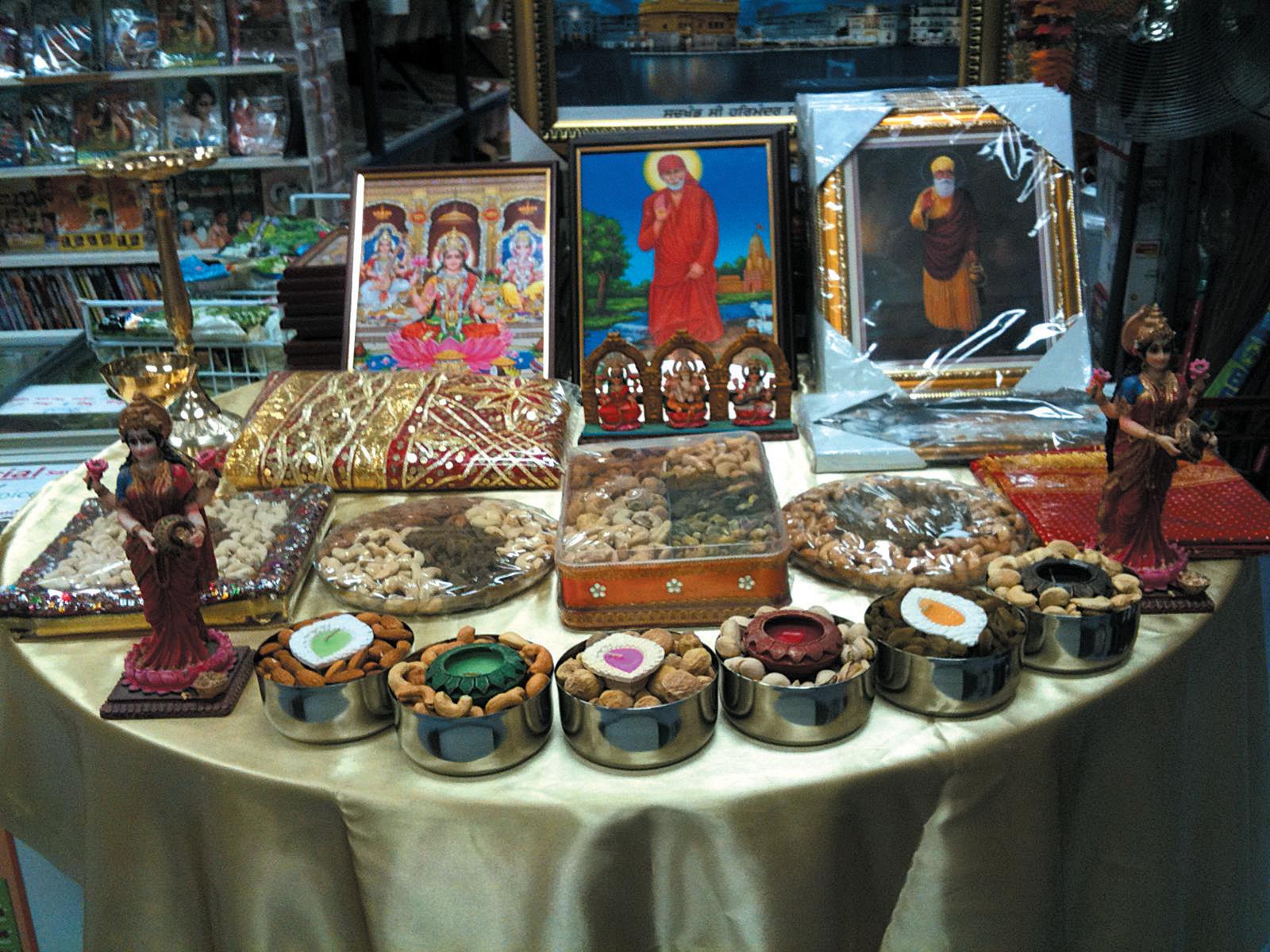



SEPTEMBER (2) 2011 <> 9 NATIONAL EDITION september (2) 2011 <> 9 NAtIONAL eDItION
The biopic in Bollywood
They depict the life of some of India’s most renowned historical, religious or modern personalities, and yet doubt exists about their veracity and content
BY UTTAM MUKHERJEE

It is slated to release in December this year, but the promos for Vidya Balan starrer Dirty Picture are already doing the rounds – and causing some discussion. Not only does it have a title that rankles, this Ekta Kapoor film is being talked about for the many cuts that the conservative Censor Board has demanded.
Described as Vidya Balan’s “boldest” role yet, for which she put on oodles of weight and shed her ‘girlnext-door’ image, the film is said to be based on the life of curvy southern bombshell Silk Smitha, who rose to fame in the 1980s with her ‘bad girl’ image. She took her own life in 1996, aged 36.
The film is also unusual because it belongs to a genre not so common in Bollywood – the biopic.
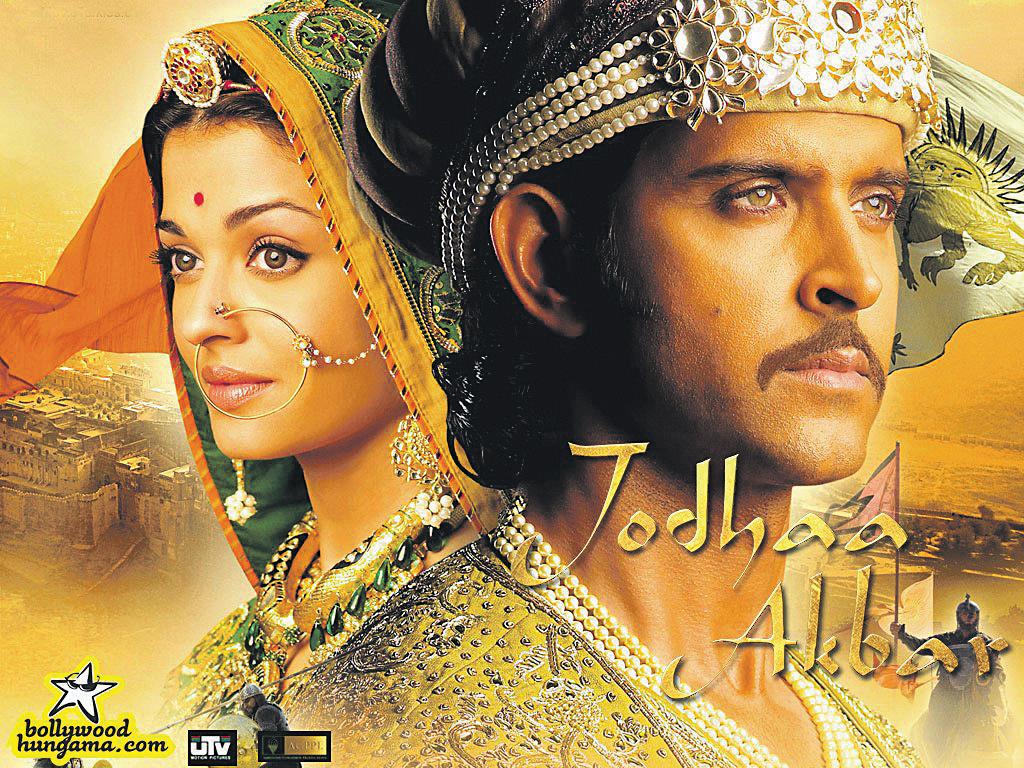
And this very notion, was the subject of a very interesting lecture delivered recently in Sydney, so far from Bollywood.
Externalities can be deceptive. When I heard that a Professor Rachel Dwyer from the University of London was giving a talk on Indian cinema, I was a bit sceptical. Nevertheless, on September 15, I made my way to the ‘Sydney Ideas’ talk at the Law School Lecture Theatre at the University of Sydney. The hall filled up quickly with a diverse audience, as Prof Dwyer presented her paper titled The New Biopic in Hindi Cinema
The presenter began with an impressive introduction. Rachel Dwyer is Professor of Indian Cultures and Cinema at the School of Oriental and African Studies, University of London. She has published ten books including Beyond the Boundaries of Bollywood: The Many Forms of Hindi Cinema, co-edited with Jerry Pinto (2011); a book on Yash Chopra, and she is currently writing Bollywood’s India: Indian Cinema as a Guide to Modern India.
Biopic classification
Prof. Dwyer started with a thought-provoking fact that there is a relatively low production of biopics in Indian cinema, only around 5 percent. The term ‘biopic’ stands for biographical pictures, and although many were planned in the last decade, only a few were produced. She compared Hollywood biopics with Indian ones by classing them as a part of other genres, notably the historical, mythological and the devotional. One outstanding devotional biopic was Sant Tukaram. It is a classic film that chronicles the life of Tukaram (17th century), one of Maharashtra’s most popular saint poets. Then there are biopics that draw inspiration from the nationalist movement against colonial rule or where the nation is at a crisis.
Fact or fiction?
Mainstream cinema has generally relied on hearsay, gossip and folklore to tell biographical stories, and there has been less reliance on authentic records and facts. Prof Dwyer stated that one of the true biopics of yesteryears was V Shantaram’s Dr. Kotnis Ki Amar Kahani. The film was based on a story And One Did Not Come Back, by KA Abbas. The story is about a young

Mainstream cinema has generally relied on hearsay, gossip and folklore to tell biographical stories, and there has been less reliance on authentic records and facts
Prof Dwyer thought that Sachin Tendulkar would not be an interesting film subject as he leads a simple and uncontroversial life; however, she noted, someone like Ganguly or Pataudi could be an interesting subject.

provide medical assistance to troops fighting against the Japanese. While in China he met and courted a Chinese girl. His main triumph was curing a virulent plague, but later he succumbed to the plague himself.
Attention was drawn to two other notable biopic works. Both were made by Guru Dutt: Pyaasa and Kagaz Ke Phool. Rachel contended that Pyaasa was either based on the lyricist Sahir Ludhianvi or Guru Dutt’s own life. Kagaz Ke Phool, considered too personal and dark at the time of its release bombed at the box office, but is now considered a classic. On a similar note, Raj Kapoor’s Mera Naam Joker was semibiographical and considered too private. Shyam Benegal’s Bhumika told the story of movie actresses and the life choices that they have to make.

A tough task
Making a biopic in India throws up a few challenges. Hindi cinema in particular has specific requirements of structure, time, space and reality. The stories are alienated from history to fit into the specific requirements of Hindi
a problem as films are heavily star-based. Stars loom larger than the characters they portray, leading to a hackneyed outcome. Dialogues can be added to spice up well-known famous lines. Lastly, there is no single genre for biopics as Hindi cinema mixes a w of them.
Audience acceptance
Prof. Dwyer had her pulse on the rapid changes that have taken place in India particularly in the post liberation phase. This has given rise to a new audience and a new stream of producers. With the ever-growing educated and affluent middle class, there is a surge in nationalist feeling. This has also meant the rise of Bollywood, she observed, as patrons are frequenting the cinemas more than before. Multiplexes have meant that there are a variety of movies, including arthouse and international, being shown. In particular, Dwyer noted, the films Dilwale Dulhaniya Le Jayenge and Hum Aapke Hai Kaun have been the watershed in Bollywood’s history, and have brought back the audience to the theatres.
So how did she get interested in Indian cinema?
“I’ve watched Indian arthouse cinema since it was first available to me in the 1980s,” Prof. Dwyer told Indian Link “At that time Satyajit Ray and Mrinal Sen films were shown at cinema halls in the UK. I knew of Hindi films but found them too strange until 1989 when I started to watch them as I loved the songs, which I had seen on Nasreen Munni Kabir’s Movie Mahal, and I thought it was a good way to learn Hindi. I liked Maine Pyar Kiya and Chandni, and was soon hooked”.
And which films would make up her top five favourite Indian movies (all languages)?
“I’ve written a book 100 Bollywood films, so I like all of them, including Apur Sansar, Sant Tukaram, Deewaar, Pyaasa, Mughal-e Azam. And if I could have five more, they would be Lage Raho Munnabhai, Awaara, Pakeezah, Amar Akbar Anthony and Iruvar”.
10 <> SEPTEMBER (2) 2011 INDIAN LINK
COVERSTORY
Bhumik (1977), Pyaasa (1957)
Rachel Dwyer
History and heroes…
Prof Dwyer also analysed a few modern day biopics in her talk: Asoka, Rang De Basanti, Mangal Pandey – The Rising, Jodha Akbar and Guru. She showed King Asoka dancing and singing to prove her point that the audience’s perception of Asoka as a virtuous and dignified ruler did not match what was depicted.
Hence the film failed at the box office. For Jodha Akbar, she drew references from yesteryear hit, Mughal-e-Azam

The story of Akbar can be referenced from many authentic sources, for example Akbarnama
Bhagat Singh is a very popular figure and Rang De Basanti utilised his story to the hilt. It added a new dimension through depicting New India issues such as corruption.
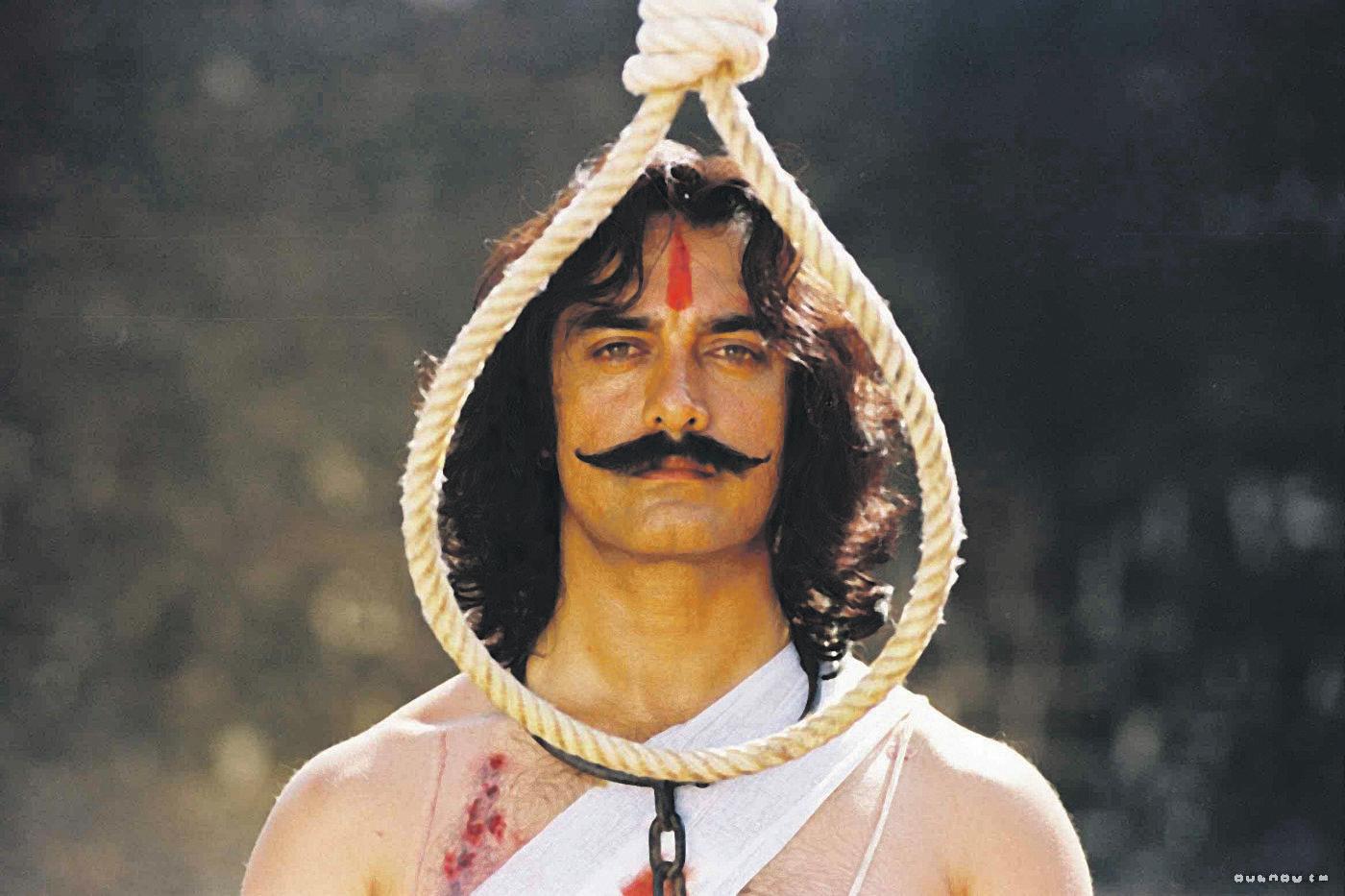
Dwyer dealt at length with Mani Ratnam’s Guru, based on a modern day figure, Dhirubhai Ambani. She felt that Mani had done very well to blend the real life hero with gigantic themes of modern India, the conflict of the old and nostalgic versus the new and changing values and morals. The camera work elevated the rags-to-riches story to a new level. She drew similarity between the movie’s tagline and Ambani’s words.



…and a few villians!
Prof. Dwyer also spoke about semi-biopics on modern day figures, eg Bombay’s underworld don, Varadarajan Mudaliar in Mani Ratnam’s Nayakan; another don, Dawood Ibrahim in Gopal Verma’s Company, and three chief ministers in Iruvar
On TV production, Dwyer lamented that there was not much except for one notable production, Mirza Ghalib. This was made by Gulzar, one of Indian cinema’s most sensitive and creative directors. On the subject of sports biopics, she briefly mentioned Chak De India

The lecture ended with the future of biopics. A big banner film is currently in production on the tragedy surrounding popular South Indian actress,
Silk Smitha (Dirty Picture starring Vidya Balan). Another movie scheduled for release is based on the life of the legendary painter, Raja Ravi Varma. Fielding a question from the audience on sports biopics, she thought that Tendulkar would not be an interesting film subject as he leads a simple and uncontroversial life; however, she noted, someone like Ganguly or Pataudi could be an interesting subject.

Overall, Prof Rachel Dwyer (www.racheldwyer.com) made a positive impression on the audience with her indepth knowledge of Indian cinema and culture, as well as the ease with which she delivered her paper. With movies began biopics
After listening to Prof. Rachel Dwyer, I reflected on the subject. In fact, biopics in Indian cinema have been around since the first Indian movies. The first Indian feature film, Raja Harischandra, was directed and produced by Dadasaheb Phalke. The film revolves around the noble and righteous king, Harishchandra, who first sacrifices his kingdom, followed by his wife and eventually his children, to honour his promise to the sage Vishwamitra.
The topic of biopics is incomplete without a mention of the great thespian, Sohrab Modi. His last work, Meena Kumari ki Amar Kahani is a good example of a biopic based on a screen idol. Under his banner of Minerva Movietone, he became famous for the historical trilogy: Pukar, that depicted Mughal Emperor Jehangir’s fair sense of justice based on an incident, perhaps fictional; Sikander, based on King Alexander and immortalised by Privithiraj Kapoor’s sterling performance of the lead role; and Prithvi Vallabh, about a haughty queen Mrinalvati. In all these, Modi
made the most of his gift for grandiloquence to evoke the historical grandeur of those times. Later he made Jhansi Ki Rani, India’s first technicolour film followed by Mirza Ghalib Many seniors who have grown up watching his films admit that their knowledge of history was at times, shaped by Modi’s films.
Sustaining the subject
In the 1960s, Lekh Tandon made Amrapali, a movie based on King Ajatshatru and a royal courtesan. It was India’s submission to the Academy Awards. Later, Gandhi won the Oscars but was made by a non-Indian, Richard Attenborough. But Shyam Benegal’s attempt, The Making Of the Mahatma in 1996 was a masterpiece in its own right. It was based on Gandhi’s early life in South Africa and his fight against injustice. Although there are similarities, the two must be watched in their own context.
Two larger than life Indian heroes have been brought to screen in the recent past: Shyam Bengal’s Bose: The Forgotten Hero in 2005 and Jabbar Patel’s Dr. Babasaheb Ambedkar in 2000. Both these films did not live up to their expectations, either with the critics or at the box office.
Bhagat Singh is a well known icon that has been revisited time and again. While the recent Rang De Basanti was well made, S. Ram Sharma’s Shaheed (1965), played by ‘Mr Bharat’ Manoj Kumar, was a hallmark. With its immortal songs, Mera rang de basanti chola, Aye watan aye watan and Sarfaroshi ki tamanna, the movie touched the hearts of one and all. Biopics in Indian cinema have been around since the making of the first feature film, Raja Harischandra, and they have a future too, as some biopics are in the pipeline. However, considering India’s rich heritage, its long and colourful history and the number of films churned out each year by the film industry, it would be fair to expect a much larger quantity and better quality of biopics from our filmmakers. Is Bollywood listening?
SEPTEMBER (2) 2011 <> 11 NATIONAL EDITION
www.indianlink.com.au
Clockwise from far left Jodhaa Akbar (2008), Guru (2007), Mangal Pandey (2005), Asoka (2001), Dirty Picture (2011)
Company (2002), Nayakan (1987)

12 <> SEPTEMBER (2) 2011 INDIAN LINK
FREE BUSINESS BRIEFING
Potential to earn +$100,000 p.a. while keeping your present job


Are you like most people who have studied various material on wealth creation, then got “fired-up” each time and pledged to go into business for yourself someday, but NEVER got around to it because you
• did not have the (large amount of) start-up capital that was required?
• Just couldn’t afford to give up your full-time job to do so due to existing commitments?
• Simply could not find the right opportunity (one with minimum outlay and maximum returns)?
If you are a motivated, self-starter who would seriously like to attain financial independence, earning a residual income with the potential to exceed *$100,000 p.a. in 2-4 years, starting part-time with relatively no financial risk, then call
(02) 82302521 (24 hrs)

And we’ll introduce you (without obligation) to one of the most lucrative business ventures of our time. This is a genuine, legal and high-integrity opportunity that is attracting people from all walks of life, including highly skilled professionals such as doctors, lawyers and business executives. It is definitely not for those looking for a ‘get rich quick’ scheme or rewards without effort-such things don’t exist.
Understand that if you don’t have, it’s because you don’t act. Call Now. (Serious enquires only)
CONTACT : DEEPIKA SHARMA
SEPTEMBER (2) 2011 <> 13 NATIONAL EDITION
Hindi Bharat ki bindi
Hindi Bharat ki bindi. Sydney poet Darshan Behl’s words described aptly the mood of the day at Hindi Divas celebrations in Sydney recently.
Hindi Divas is celebrated on Sept 14. It was on this day in 1949 that India’s Constituent Assembly adopted the language as the official language of the country. Today it has grown to become the second most spoken language in the world.
A day-long Hindi Mela was organised in Sydney to mark the event – a celebration which included Hindi students strutting their stuff, poets from within Sydney’s Hindi-
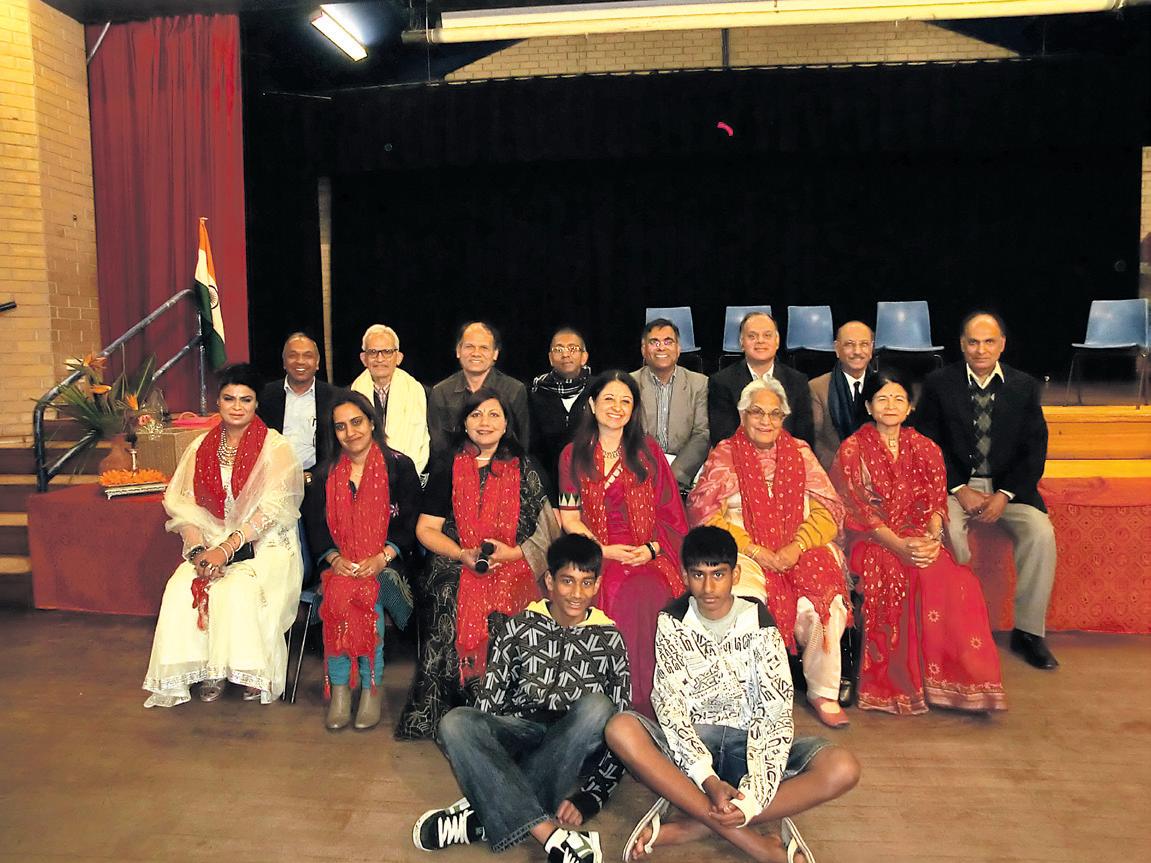
in English, lending that very famous voice this time to Rabindrathan Tagore, Nobel Laureate and India’s greatest poet, whose 150th birth anniversary is being marked this year.
Other dignitaries included Phillip Ruddock MP, Mr David Elliot (Member for Baulkham Hills representing Mr Victor Dominello, Minister for Immigration and Community), Nick Berman (Mayor Hornsby Shire) and Dilip Chopra (Councillor Hornsby Shire). Community leaders heading various associations were also present.
Students received awards for excellence in Student Achievement and for Outstanding Effort in Hindi. Teachers of the school, all of them volunteers, were felicitated as well.
The Indian Consulate in Sydney and community organisations sponsored the prizes.
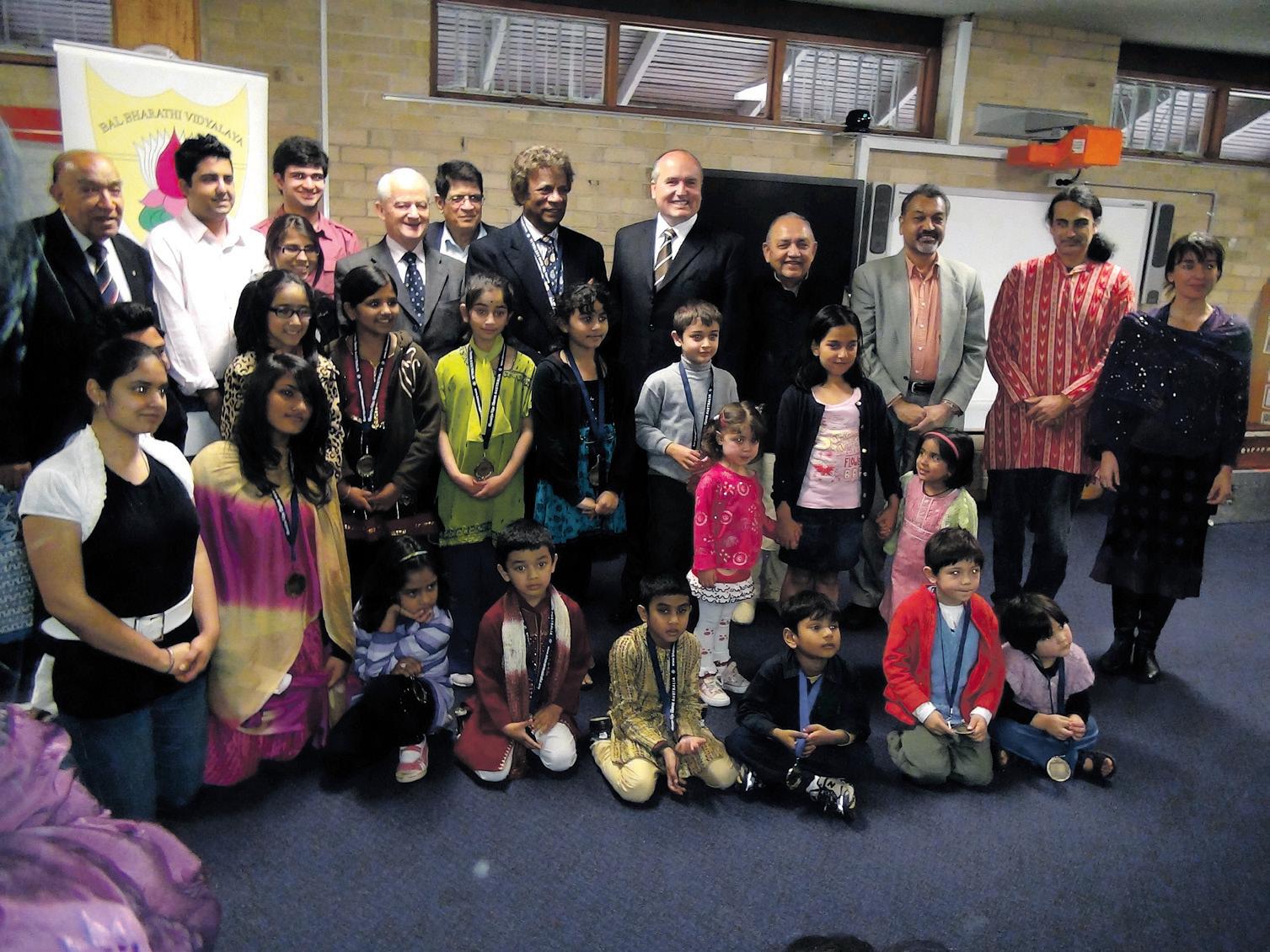
“We also acknowledge the NSW Department of Education and Training Community Languages program for the limited support that it provides our Hindi School as well as many other community language schools”, Mala said.
A Hindi poetry recitation was also held on the occasion.
Akansha Kandulal and Shreya Parwal
Rekha has translated many official documents and websites from English into Hindi. At the last NSW election, she translated Labor Party campaign material into Hindi and even taught the ex-premier Kristina Keneally to speak a few lines in Hindi.
The Dreaming, which has already won several national and international awards, is available in ABC shops or can be bought directly from Aboriginal Nations Australia.
Kavi Sammelan
The ILAASA and IABBV organised Kavi Sammelan turned out to be a perfect way to spend the afternoon. The audience settled in with their cups of chai as MC Rekha Rajvanshi started off the event. Star-billing was accorded to Melbourne poet Subhash Sharma, who flew in just for the event.
Hindi school
The event was held at Thornleigh West Public School, Thornleigh, where Sydney’s leading Hindi school conducts its weekend classes.
Mala Mehta, the founder of Sydney’s Indo Australian Bal Bharati Vidyalaya (IABBV) and the foremost campaigner for Hindi in this country, said, “We, as Non Resident Indians, try to hold on to our culture and values as best as we can. By connecting ourselves with Hindi we are able to do this most effectively. It also enables us to pass on not only the language but also aspects of our culture to our children here”.
IABBV marks its 25th birthday this year, and so Hindi Divas took on an even greater significance for its students and teachers, some of who have been with the school since its inception. For this occasion, Mehta organised to bring together other Hindi schools in Sydney, notably the NSW DET Saturday School of Community Languages and the Girraween Hindi School, as well as Hindi lovers within the community who have continued Hindi-related activities in literature or the performing arts even after migrating to this country.
But the stars of the show were definitely the students, K-12. They have shown a commitment to their native tongue over and above their regular school, sport and extra-curricular activities, and who give up their Sundays in pursuit of Hindi.
The students all presented little performances to the visiting guests. There were poems and songs, dances and skits on a variety of topics (family relationships, nature, devotional, dohas, even comedy, and some tributes to literary greats by the older students). The Years 1-3 students’ act on Chiriya was YouTubed and has been seen by many in the community (“Ek chiriya ke bache chaar, ghar se nikle pankh prasaar, Purab se paschim jaayen, uttar se dakshin ko jayen, Ghoom ghaam jab ghar ko aayen, mummy ko ek baat batayen, Dekh liya humne jag saara, apna ghar hai sabse pyarra”). The skit on Anna Hazare also went down very well.
“The students made us all very proud,” Mala said later. “Their joy and enthusiasm increases manifold when they find themselves performing in front of distinguished audiences”.
One distinguished member of the audience the kids were happy to meet, was singer Kamahl, who also recited some poetry. Not a native Hindi speaker, he chose to speak
Took the prize in the Years 1-4 category, Rishab Babji won in the Years 5-8 category, and Nirali Atul Chandra Goel took the award in the Years 9-12 category.
And of course can Bollywood be far behind at a Hindi event? A happening dance number ended the event for the kids quite appropriately: contemporary Bollywood is certainly doing its bit to keep the language interesting for kids of the diaspora.
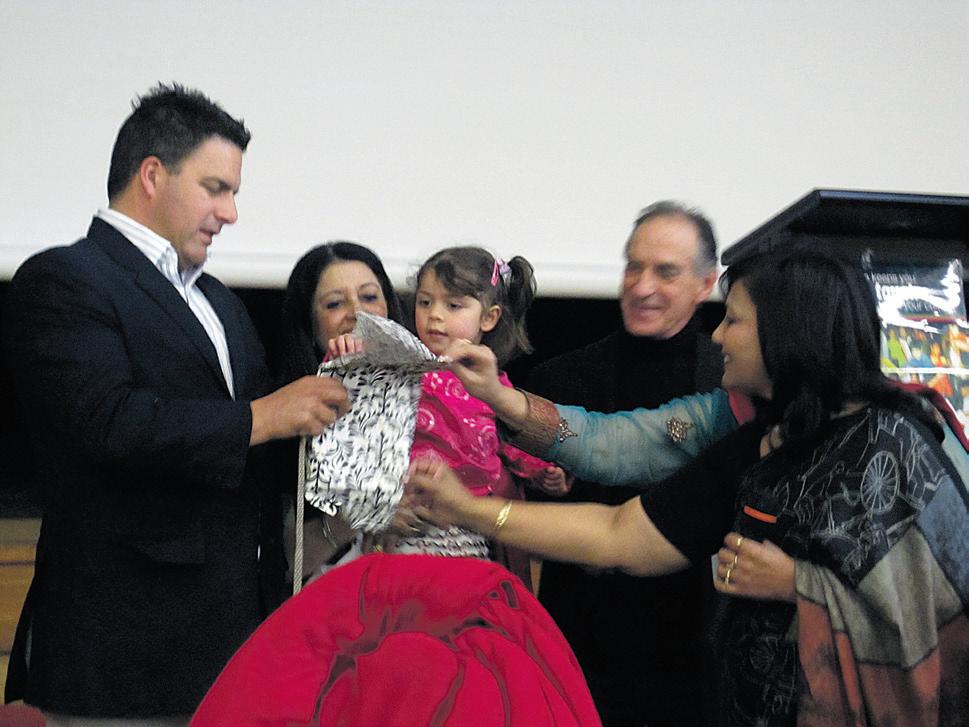
There was a wonderful variety of poems presented. In keeping with the general theme of the day, some poets concentrated on the Hindi language (Suresh Makkar, Subhash Sharma, Darshan Behl), while others chose nationalism as their topic (Suresh Makkar, Vimal Luthra).
Quite impressively, many presenters chose to be very topical, showing that their continued engagement with issues that bother us as Indians, as migrants here, as Australians, and as citizens of the world. Poems were presented on the degradation of the environment (Ajay Ghosh), on the power of the people (Ajay Ghosh), on terrorism (Ajay Ghosh), on Anna Hazare (Santram Bajaj), and even on sensationalist newspaper wallahs (Yadu Singh in a laudable maiden attempt)!
Mention was also made of anniversaries and festivals close to the time, such as Father’s Day and Ganesh Chaturthi (Dhanraj Chaudhri), 9-11 (Yadu Singh), and the birth anniversary of the great Hindi poet Ramdhari Singh Dinkar (Arvind Verma).
Relationships were another favoured topic: we heard of grandmothers (Vimla Luthra), mothers (Kannada poet Anu Shivram in a maiden Hindi attempt), on the motherson relationship (Saba Zaidi reciting her mother, the famed Aligarh poet and writer Sajida Zaidi’s words), on parenthood (Ramprakash Mehdiratta) and on long-time sweethearts (Ramprakash Mehdiratta).
DVD release: TheDreaming
On the occasion of IABBV-organised Hindi Mela, Rekha Rajvanshi, long-time teacher at IABBV and founder of the Indian Literary and Art Society of Australia (ILASA), released a DVD that she has worked extensively on. Entitled The Dreaming, this is an Aboriginal animation film produced in Hindi and other languages by Keith Salvat of the Aboriginal Nations Australia Pty Limited. The Hindi translation was done by Rekha Rajvanshi, and the voice over was provided by Anupam Sharma of Films and Casting Temple.
“When Keith approached me, I was excited even though I knew it would be a challenging job,” Rekha told Indian Link. “It took a while to accomplish, because I dedicated much time to learning the correct pronunciations of the Aboriginal terms and names. But I think it was a great way to connect with the culture of the first Australians. In the end, this is the general aim of the entire project as far as I am concerned – getting Hindi-speaking Australians to learn more about the culture of their adopted country”.
Rekha is an accomplished writer and poet with many publications to her name. A NAATI accredited translator,
Memories, always a cherished topic for poets, were dealt with by poets Siddhant Nakra and Gargi Tripathi. We also heard Anu Chhabra and Subhash Sharma on memories of ‘back home’: while Anu’s was a sombre and thoughtful reflection, Subhash was completely humorous, and yet, both won over the audience completely!
Humorous poems also came from Harmohan Walia (with a tongue-twister like presentation on Dil), Pradeep Upadhyaya, Mukesh Jani and Subhash Sharma (whose take on PM Julia Gillard had the audience in splits: Julia O Julia, tera kaam khatm ho liya, Rudd jaisa dekh tera haal aaj ho liya!)
Other poets spoke of the lack of time in modern life (Kusum Chowdhary), truth (Vijay Kumar Singh), and hope that springs eternal (Shashi Baranwal).
Rekha introduced each poet, often in verse, and sometimes in the words of one of the poets present in the audience, in a wonderful gesture of peer-appreciation. In the traditional manner, all poets were felicitated with a shawl at the end of their presentation. Again, it was interesting to note that the speakers were honoured by their own peers, on this occasion.
Rajni Anand Luthra
14 <> SEPTEMBER (2) 2011 INDIAN LINK 14 <> september (2) 2011 INDIAN LINK
communityscene
www.indianlink.com.au
Launch of DVD
mala mehta and Rekha Rajvanshi (seated centre) with Kavi sammelan participants
iABBV Hindi school students with special guests on Hindi Divas

SEPTEMBER (2) 2011 <> 15 NATIONAL EDITION
India’s second largest bank now in Australia
Not only was the Chairman of Punjab National Bank (PNB) Mr KR Kamath present, but also Mr Namo Narain Meena, India’s Minister of State for Finance, at the launch of the Australian office of PNB in Sydney. The Minister and the Chairman were joined by senior Ministers from the NSW Government, diplomats, business leaders and other dignitaries at a gala dinner hosted at the Hilton Hotel.
NSW Minister for Finance and Services Greg Pearce welcomed the latest addition to international banks which have chosen New South Wales as their head office. Speaking at the dinner, Minister Pearce reminded the guests about the contributions which Indian companies were making to his electorate of Illawara, highlighting Gujarat NRE and Mphasis Australia.
“In fact, I am so excited about the opening of PNB’s representative office in Sydney, that I will be keen to become a customer of the bank as and when they are open to retail banking options,” Mr Pearce announced to all those present.
Taking up the theme, Chairman of Punjab National Bank, Mr Kamath spoke about the bilateral trade between India and Australia having seen a sharp increase to $22.5 billion in the last five years.
“With an Indian population of 450,000 in Australia, this will allow us to add to our overall customer base of 6.6 million,” he said.
Mr Kamath, like all bankers, had a number of figures at his fingertips, reeling them off to the audience.

“Punjab National Bank has over 56,000 employees and in the last financial year made a reporting profit of US $2.3 billion, with a net profit margin of 3.5%. Our rate of equity has been over 20% now for more than 10 years,” he said.
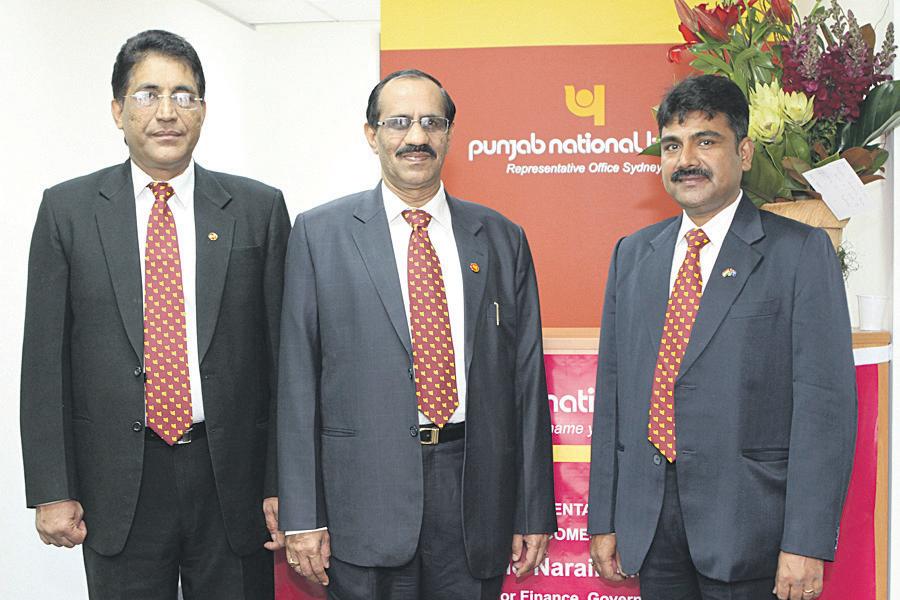
The statement that PNB has 5,300 branches gave rise to wry smiles from the audience, because all the banks in
Australia have less than that number! “We are excited about now entering this new market, which is just another step for us to reach out to non-resident Indians globally,” Mr Kamath added.
Addressing the audience, Amit Dasgupta, Consul General of India (Sydney) emphasized that the opening of an office by an Indian bank amidst the ongoing issues of the global financial crisis and the Euro zone issues was an indication of the strength of the Indian banking system.
“Australia now has some of India’s leading banks – State Bank of India, Union Bank of India, Bank of Baroda and now, Punjab National Bank, all of which have opened representative offices here,” he said.
The Minister of State for Finance, Government of India, Mr Namo Narain Meena in his speech commended the bank, speaking of its history. “The Punjab National Bank, with its experience gathered over more than 100 years, can play a catalytic role in stimulating commercial ties between the two nations,” he said.
Mr Meena also extolled the virtues of the Indian economy. He did acknowledge the high inflation in India but passed it off as a cause of policy development in a developing country.
“With rainfall good in India, we expect GDP Growth in India to be at least 8% in 2011 – 2012,” he stated confidently.
Representing the Premier Barry O’Farrell was MP Melinda Pavey who told the audience that the Premier was very keen to rediscover links with India.
“Investment flows between NSW and India are growing and it is good to welcome a top level bank to our State. The presence of PNB here will further cement the important business relationship our state has with India.” she added. A memorial plaque was unveiled by the chief guests which will be kept at the Punjab National Bank office in Sydney. Mr. Cyril Michael, the head of operations for PNB in Australia, is excited about his new posting and the challenges which came with the new office, “I look forward to strengthening the bond between my bank and the local Indian Australians,” he promised Indian Link
Pawan Luthra
16 <> SEPTEMBER (2) 2011 INDIAN LINK www.indianlink.com.au BUSINESS
SK Dubey (General Manager, Head Office), KR Kamath (Chairman and MD) and Cyril Michael, Head Representative, Australia.

SEPTEMBER (2) 2011 <> 17 NATIONAL EDITION Punjab National Bank arrives in Sydney Punjab National Bank is the largest nationalised Bank of India. Our thirst to serve customers has taken us to far off places like Dubai, Shanghai, Kazakhstan, Kathmandu, Bhutan, United Kingdom, Hong Kong, Afghanistan, Norway and now to SYDNEY. Be a part of the growth story of your own bank. Representative office Suite: 1302, Level 13, 66 King Street, Sydney NSW 2000 Email: cyrilmichael@pnb.co.in | Tel: 02 9279 4356 | Fax: 02 9279 4357 In pursuit of Global expansion, Sydney is our 10th inter national destination. visit us at www .pnbindia.com
Indian avatar for Swan Lake
“Swan Lake in Jaipur”. The title immediately caught my attention. Tchaikovsky’s Swan Lake ballet set in Jaipur, performed in Australia - what a novel idea! My imagination went to work as I pictured a Rajasthani setting by a lake with beautiful swan maidens soaring through deep blue skies around an ancient palatial wall, and then gracefully gliding along glittering aquamarine waters. Indeed, an image similar to the brochure advertising this production by the students of Smt. Dhamyanthy Balaraju in aid of the Sri Venkateswara Temple. This imagery set the mood for what was to come on the night of September 10 at the Hurstville Entertainment Centre.
The evening commenced with traditional dances to a live orchestra. There is nothing more satisfying than musicians accompanying a dance performance. It is a musical skill in itself to complement dancers, but the musicians rose to the challenge under the able guidance and exceptional nattuvangam of Dhamyanthy. Of note was lead vocalist Sudhagar Sivabalan and his mellifluous voice. It was also endearing to see the talents of the mridangam and tabla player on show, given that they are the children of artists themselves. Janakan Suthanthariraj is fast becoming a frequently sought mridangam player to Bharathanatyam artists in Sydney.
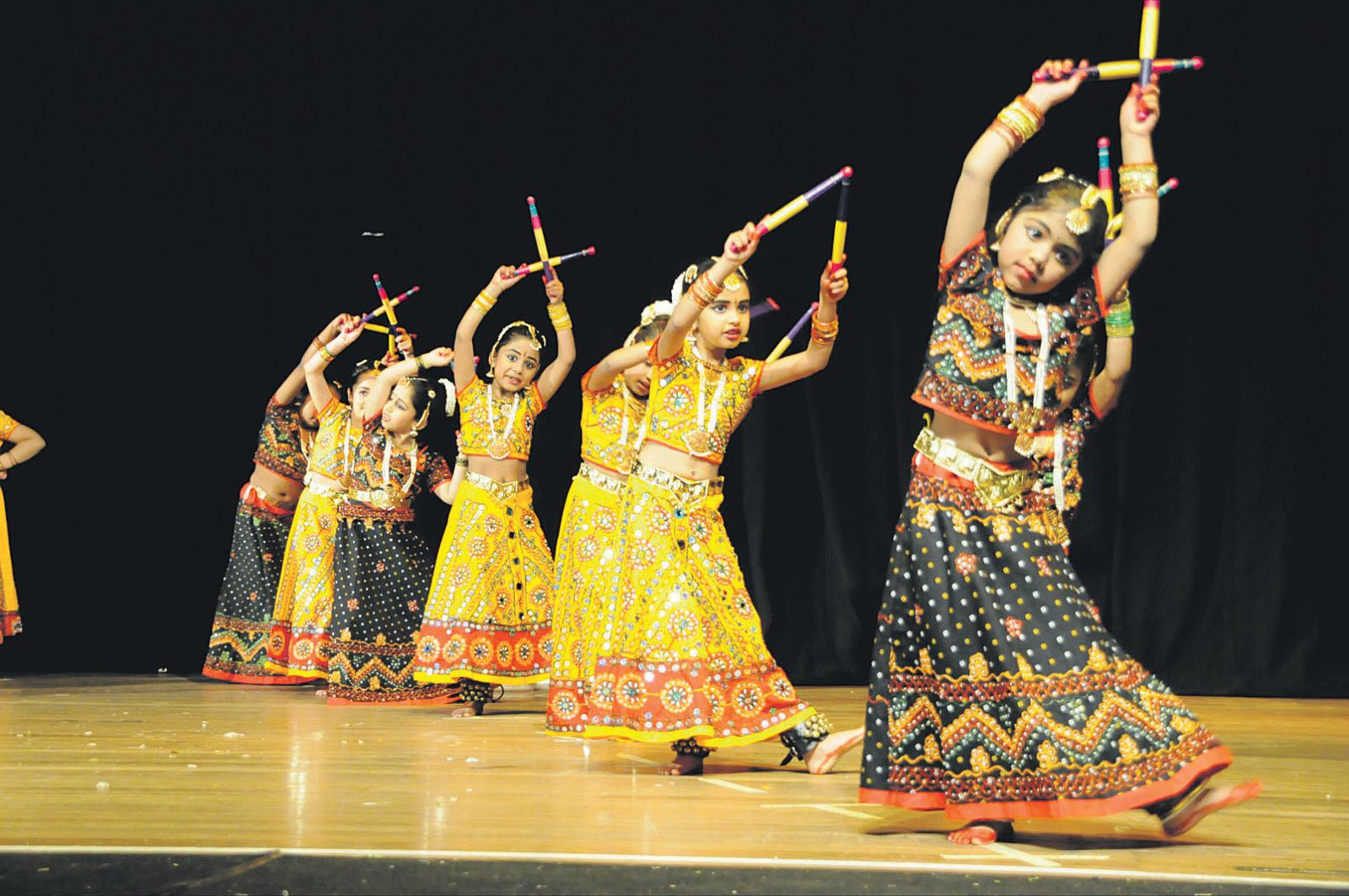
It is also fulfilling to a dance connoisseur to see an element of the pure classical at any dance production. Thus, it was fitting for the first half of the night to be a showcase for the technical dance talents of Thillai Nadanalaya, the Bharathanatyam dance school of Dhamyanthy. Well trained and hungry to please their teacher, the young ladies in each of the dances displayed enthusiasm and wide-eyed earnestness to do justice to the beautifully choreographed pieces. The youngest participants, perhaps five year olds, were a particular delight to watch as their cute gestures brought out their childish innocence. What was evident was how hard it was to mentor and manage varying age groups of dancers, together with parents and helpers on the night. The dance teacher must be congratulated for juggling all these variables without an MBA!
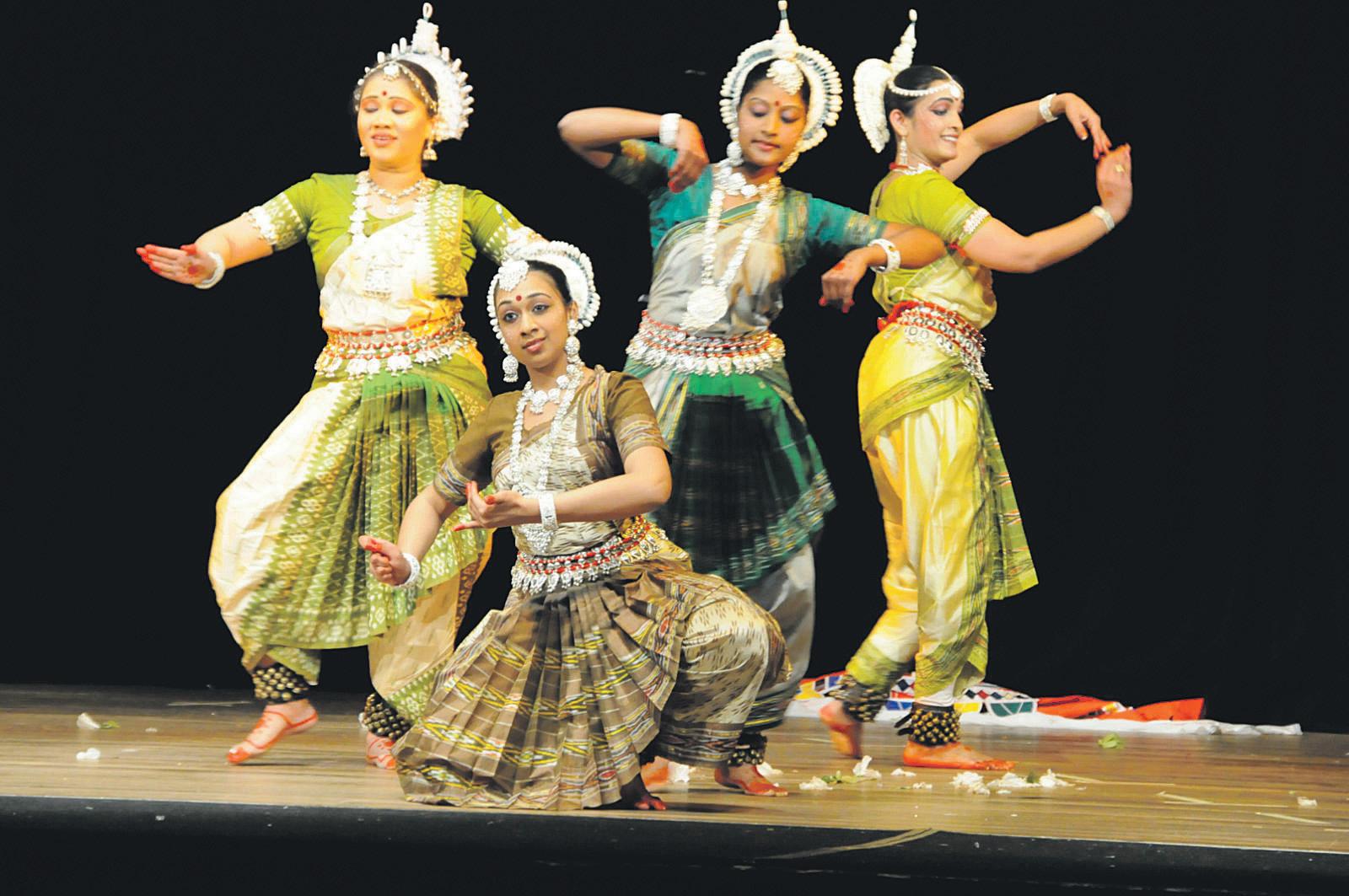

As compere for the evening, I was able to take it easy as the helpers scurried around me backstage, preparing for each scene of the main event that was to follow. The colours of Rajasthan slowly started to enfold backstage as I saw maidens in beautiful blue organza whisk past me in all their youthful beauty. Ah, the famous swan maidens, I thought. Swans represent womanhood in its purest form. The stories of swan-maidens date as far back as ancient Greece and in Hindu mythology, the swan is the symbol of grace and discernment; Brahma the creator uses the swan as his carrier. The Brahma temple of Pushkar Lake in Rajasthan is one of the few temples in India dedicated to Brahma. Legend has it that the Gods released a swan holding a lotus in its beak and let it fall on earth where Brahma would perform a grand yagna – it fell in Pushkar. The significance and importance of the swan is cross-cultural.
Dhamyanthy first staged Swan Lake in 1991. Whilst it had an Indian theme, it did not have the same colour that only a production set in Jaipur could have. Instead of white for example, the swan maidens were in turquoise with the lead in a shimmering gold. The costumes of Rajasthan made the production a show in itself, rather than mimicry of the original Swan Lake ballet. Similarly, the classical and semi-classical Indian dance moves (rather than an imitation of ballet), empowered the show in its own right. This production was mature and intelligent, doing justice to Kathak and Indian dance, as well as Swan Lake. It was a pity that the live orchestra did not continue to accompany the dancers.



Each scene had mesmerising dancing, but not just the swans caught our attention. We joined in the merriment of Bollywood moves by the boys and girls. The royal dancers and companions played their parts well. At the ‘Swayamvaram’ for Prince Janakaraj, we were spoilt with several Indian dance styles as the various state princesses danced with elegance in an attempt to win his love. The recent arangetram debutants Ramya and Archanaa Rathakrishnan teamed up with the 1991 production dancer, Aruna Pavithran, to display their polished moves. The lead swan was confident in her Bollywood-like moves. The evil sorcerer too was magnificent, sending a shiver down my spine!
My congratulations to Smt. Dhamyanthi Balraju for her creativity and dedication to Indian classical dance in yet another magnificent production. Swan Lake in Jaipur is a poignant example of her ability to create new frontiers in Indian classical dance whilst maintaining the traditional nuances of this ancient art form. We can only look forward with anticipation to her next production!
Brijanthi Rajeev
18 <> SEPTEMBER (2) 2011 INDIAN LINK STAGE
Hui mehengi bahut hi sharaab ke…
The velvet-voiced ghazal maestro Pankaj Udhas charms his Sydney fans once again


 BY PRIYANKA TATER
BY PRIYANKA TATER
Even though I am 15 minutes before time, I find myself struggling to park my car. Finally after two rounds of circling around, I find a spot. Alright, this is just the beginning! As I walk towards the Hills Centre, I am still trying to figure out where the entrance may be, peering through the spaces between people. It’s packed and how! I walk amidst blinding flashes, while the who’s who of the Indian community in Sydney are preening and posing, reminding me of my days as a Bollywood journalist back in Mumbai. In the next 15 minutes the foyer is all deserted.
As I enter the main concert theatre, I gasp, “Wow!” Four levels of seating with a capacity of nearly 1700 people, and almost every seat taken! Bollywood, eat your heart out, this is not for you. It is the mehfil of Padmashri Pankaj Udhas.
After an introductory performance by Pupinder Mintu dressed in a black and golden brocade sherwani, in comes the ghazal legend himself. The audience is quick to shout in unison, “Aaj ki shaam, Pankaj ke naam!’
The maestro starts with a soft hum and takes off with Beparda nazar aayi, jo kal … niklo na benaqaab, zamaana kharaab hai, and not even two lines into the ghazal, the deafening sound of claps and whistles fills the auditorium.
As the clapping fades after the first ghazal, the singer with his velvet voice greets the audience adding a pinch of humour, “Doston, bhaaiyon aur beheno, aadaab, satsrikayaal, good evening. Anna Hazare ka zamaana hai. Anna ne ek baat acchi kahi, there should be no corruption.” And the audience is already in splits when the singer boosts it further by adding, “Aaj jo music pesh karney jaa raha hoon, there is no corruption in it. Aaj tak ghazalon ka remix nahi bana hai Ghazals are the purest form of music.”
Pankajji follows this statement up with a ghazal from his early days, which he confesses is still one of his favourites:
Deewaron se milkar rona, achcha lagta hai
Needless to say, the audience is generously pouring in the applause after almost every verse, which makes the ghazal maestro say, “Duniya ke har kalakaar ke liye, taaliyon ka nasha sabse bada nasha hota ha, woh ushi nashe ke liye jeeta hai!”
For tour promoter Yogesh Sharma of Cinestar Entertainment (and his major sponsors Arun and Susmita Bose of Kashi Indian Restaurant), this must surely have been a moment of great satisfaction, not only to see their efforts appreciated by the public at large, but also acknowledged by the star of the night himself.
And with claps as the background score,
in poured ghazal after ghazal, ranging from Sabko maloom hai main sharaabi nahi hoon to the famous ghazal from the film Saajan, Jeeyein to jeeyein kaise, bin aapke to Aur aahista kijey baatein, dhadkaney koi sun raha ho
I have to mention the breathtaking jugalbandhi by the musicians in, Hui mehengi bahut hi sharaab, ki thodi thodi peeya karo
The first half ends on a note of humour again, as Pankaj Udhas shares a joke:
“Mere ek dost hai jisney mujhse kaha, ki who shaadi se peheley bhi sher tha, shaadi ke baad bhi sher hai, fark sirf itna hai ki shaadi ke baad uske upar Durga Maa baithi hain!” The laughs are simply unstoppable, followed by the beautiful Chaandi jaisa rang hai tera soney jaise baal (this was the first non-film song to have featured on Binaca Geet Mala as the best song of the year for topping the charts for the longest period in 1984).
Before going into the interval, loud cries of requests fill the air, and the ghazal maestro is willing to oblige, as he asks the audience to write in their requests on paper and send them to him backstage.
A break of mere 20 minutes never seemed longer, and the audience is diligently back to get some more of the ghazal singer’s untainted music.
The second session starts with Dil dhadakney ka sabak yaad aaya, woh teri yaad thi, ab yaad aaya

Soon he introduces the dashing Yama Sarshar, Sydney’s up and coming tabla star, who syncs in with the rest of the musicians and does a great job matching beats with tabla maestro Rashid Mustafa.
It’s time for the requests to be fulfilled as Pankajji sings a medley of all the requested songs.
And then the most awaited song, a song that I fell in love with when I watched the film Naam back in India. Then I only loved the music, the lyrics and the voice. But at this
Sydney, listening live to the magical voice, I could relate to every word of this song. I believe every migrant sitting in the auditorium reiterated the same sentiment. It was Chitthi aayi hai… And oh, this song never felt more special! I wouldn’t be surprised if more than half of us unconsciously or consciously shed a tear or two.
“I read an article in The Times of India recently, on the film Naam that released in 1986. It’s been 25 years and this song is still alive, even after 25 years. Kabhi kabaar aise geet ban jaatey hain, hamesha nahi bantey,” said Pankaj Udhas. I couldn’t agree more!
understands the pulse of the audience and Pankajji proved just that by performing a Punjabi and Gujarati ghazal for the janta who had been asking for a while, for some regional dressings on this musical evening.

Then came Main itna zor se naachi aaj, ki ghungroo toot gaye, received with claps, whistles and more claps. And then followed the ritual of introducing his musicians and the team.
I have to confess that I’ve never been a big fan of ghazals per se, but after experiencing this evening of live music by the ghazal maestro Padmashri Pankaj Udhas himself, I realized what I had been missing out on all these years. For the purists there’s ample reason to smile, as the ghazal maestro proved that unadulterated music still exists in the contemporary industry in India.
SEPTEMBER (2) 2011 <> 19 NATIONAL EDITION www.indianlink.com.au
I could relate to every word of Chitthiaayihai. This song never felt more special! I wouldn’t be surprised if many in the audience unconsciously or consciously shed a tear or two.
Photo: JD Photography
Little
masters
Many kids enter adolescence quite unsure of what they want to do in life. Some even go through their late twenties and early thirties, undecided of the career path they’d like to take. Heck, I know of people who suffered a mid-life crisis before they finally found a likable occupation. But then there are some who step into this world with massive talent under their belts and their destinies seem all chalked up, their paths clearly lit and from the get-go, there is little doubt in anyone’s mind regarding their calling in life. Two such special people are best friends Ananya Sachin Wakhare and Manvi Rastogi, who at the ripe old age of six, have already discovered painting to be their passion and calling in life.
Both girls recently had their drawings selected for Operation Art - the premier’s state-wide visual arts exhibition for school students from Kindergarten to Year 10. The exhibition, which is presented in partnership with NSW Department of Education & Communities and The Children’s Hospital at Westmead, aims at encouraging and showcasing the talents of youngsters. This year, there were a record number of entries totalling 760 works of art by students from all over NSW, which are currently on display at the Armory Gallery until October 10.
Ananya and Manvi are both Year 1 students at Haberfield Public School where their paintings were two of the four chosen to be entered into the competition. The girls received VIP passes and invitation from the Department of Education to visit the Armory Gallery on 10 September for the inauguration ceremony, where they met NSW premier Barry O’Farrell.

Ananya’s dad Sachin Wakhare admitted it was actually him
and his wife Kalyani, and Manvi’s parents Megha and Neerav Rastogi, who felt more elated by the honours compared to the girls themselves, who are too little to fully comprehend the significance of such a privilege. For being selected for Operation Art, Ananya and Manvi received special awards at the school assembly.
Talking about his daughter, Sachin revealed that Ananya is a quiet, hardworking and obedient little girl who had started showing signs of artistic talent from a very young age.

“She is always painting, this is the only thing she really likes to do,” he contended. “That’s why we enrolled her in painting classes at Croydon Art Studio last year.”
Since both her parents are architects, it is not hard to see from where Ananya’s artistic flair has been inherited. Sachin modestly disclosed that they have received very positive feedback regarding Ananya’s entry in Operation Art, which is a watercolour and oil pastel drawing of a giraffe on A3 paper. He said that some of their friends had even suggested that the piece mirrored the style of Picasso.
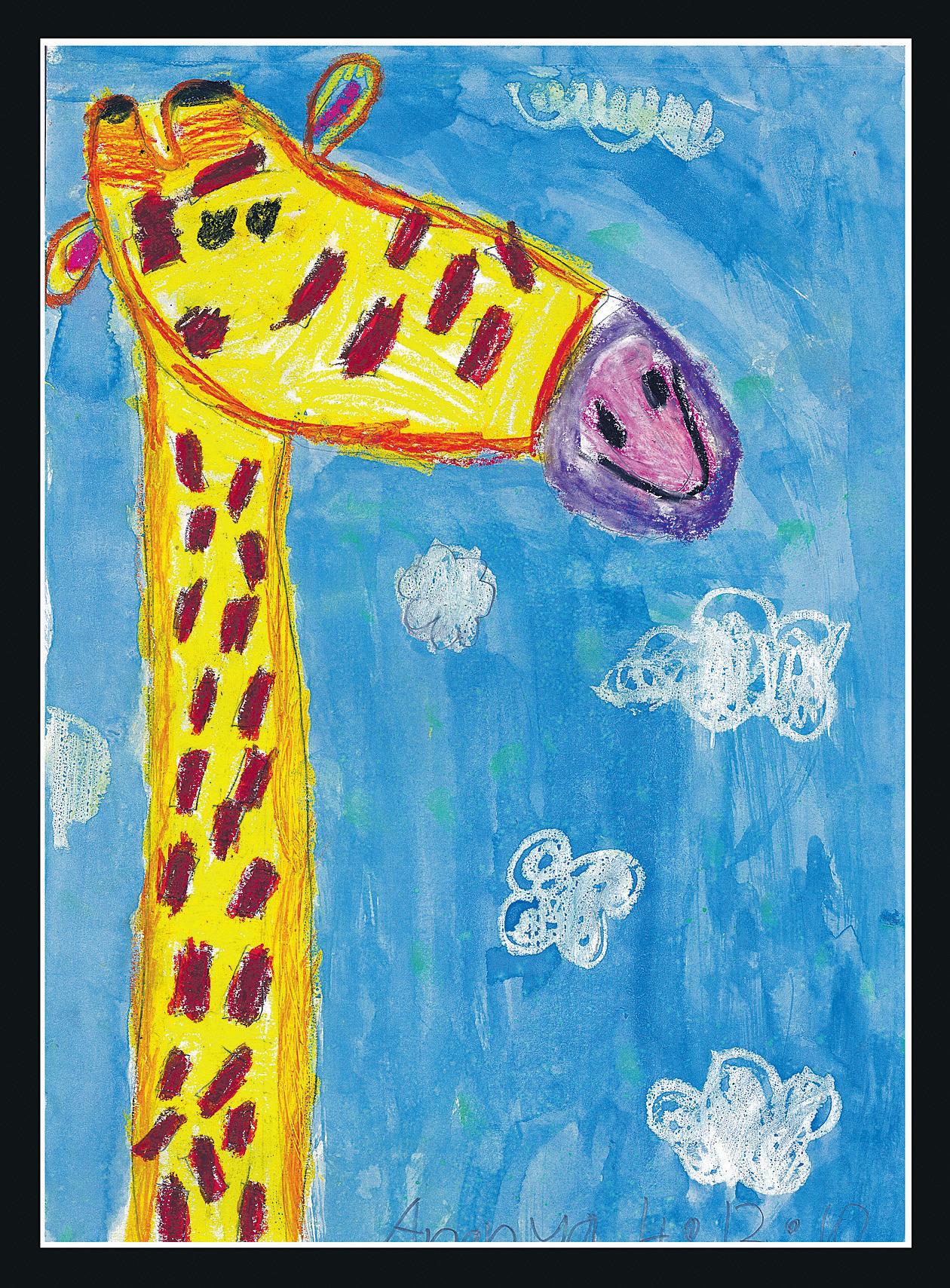
In the light of such rave reviews it is not surprising that Ananya’s artwork has also been chosen as the main picture advertising the Operation Art exhibition on the Sydney Olympic Park’s website.
Ananya is all set to pursue her passion for painting in the years to come. She has already entered two more competitions on a national level. The Kmart Art of Giving Competition invited young artists to submit a collage representing the theme ‘Why helping others is important’, whereas for the Colours of Australia competition, Ananya has submitted an A3 drawing of a landscape depicting the
This year, there were a record number of entries totalling 760 works of art by students from all over NSW, which are currently on display at the Armory Gallery until October 10.
diversity of Australia. The winning entries will be exhibited in Japan. She is also hoping to participate in the Operation Art competition next year.
As far as their talent is concerned, the two girls might as well be sisters. Manvi’s mum Megha has similar tales to tell of her daughter. “Manvi has been drawing and colouring ever since she was tiny. She can keep at it for hours, without tiring of it. Other kids, I’ve noticed, will work on an activity for a while and then move on, but Manvi can entertain herself for long periods of time with her colours”.
She joined Ananya at Croydon Art Class last year, and is enjoying it thoroughly, working diligently at the projects there.
For the Operation Art project, Manvi picked her own theme, teddy bears. “She is observing family patterns at her age, so there’s a ‘mama bear’ and a ‘papa bear’ – both distinguished by their Manvi was thrilled to see her painting hung at the exhibition – probably not having realized the full significance of her achievement until then.

“The excitement certainly grew after that, grandparents and cousins were Skyped etc! But for my husband Neerav and me, and equally for Sachin and Kalyani, it was wonderful to observe the girls seek out each other’s paintings at the exhibition, and then, believe it or not, walk around looking at other works and making critical comments – all laudable, thankfully!”
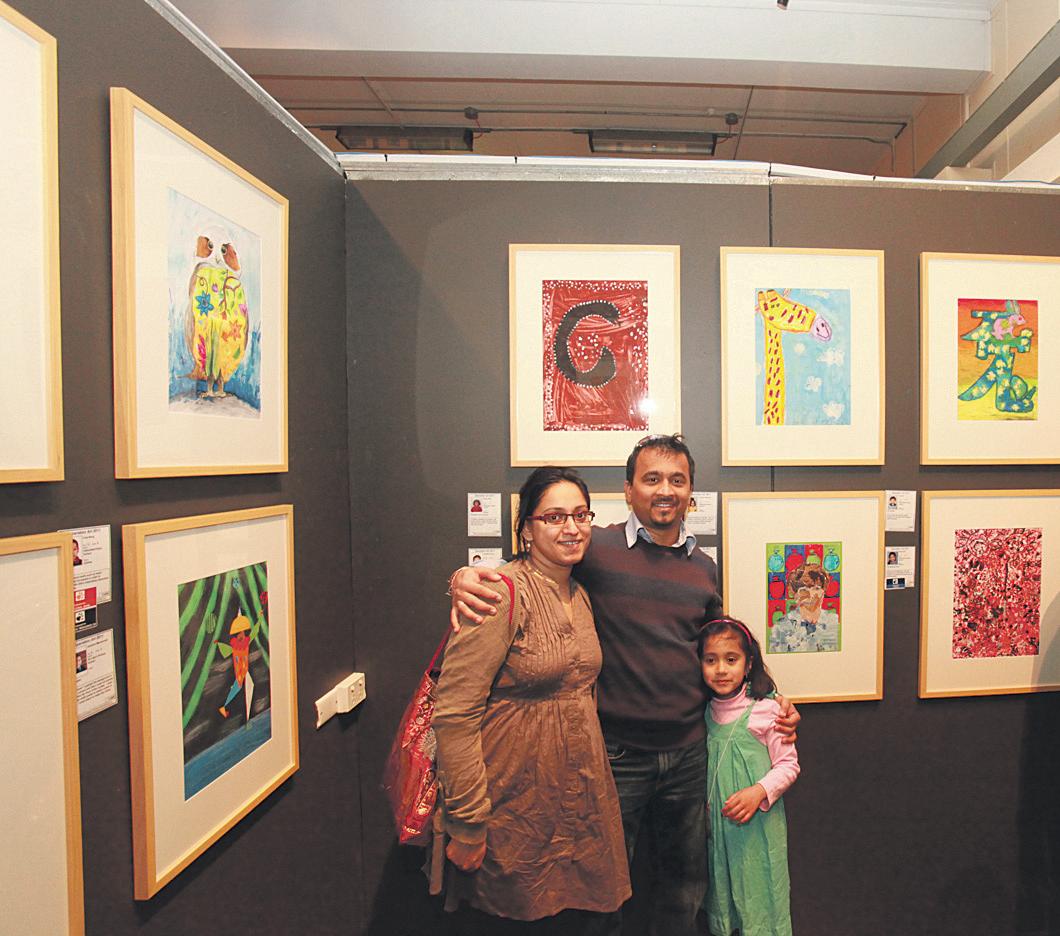
Congratulations and good luck to Ananya and Manvi, the world is their
In the light of such rave reviews it is not surprising that Ananya’s artwork has also been chosen as the main picture advertising the Operation Art exhibition on the Sydney Olympic Park’s website.
20 <> SEPTEMBER (2) 2011 INDIAN LINK ARTS www.indianlink.com.au
Above, The Rastogis with Manvi’s artwork; and beneath, The Wakhare with Ananya’s artwork
Clockwise from left, Manvi Rastogi’s Operation Art artwork; Ananya Wakhare’s Operation Art artwork; Ananya and Manvi with NSW premier Barry O Farrell
Two young artists showcase their considerable talent in a statewide art exhibition. FARZANA SHAKIR reports

SEPTEMBER (2) 2011 <> 21 NATIONAL EDITION
How mood effects the way you learn
A young UNSW researcher presents her findings at a prestigious Brain Forum
BY USHA RAMANUJAM ARVIND

Are you convinced that wearing a favourite jersey or sporting a lucky charm can change the fortunes of your team? Are you compelled to believe that a winning streak can be repeated by duplicating the sequence of a certain event?
UNSW researcher Shruti Venkatesh is currently examining an intriguing aspect of human behaviour dubbed as “Illusion of Control.”
Quite simply, human beings often willingly delude themselves into thinking they can manipulate and govern events, even when it is known that they do not. This fascinating phenomenon, according to Shruti, can be both a positive and a negative in our lives.
“It can help motivate people and make them feel optimistic in certain situations, but it can also lead to unrealistic expectations,” she stated.
“Illusion of control even works in experimental situations when we tell people that the outcome of a process is random and beyond their control,” she added. “But whether it is a healthy illusion or not really depends on the situation and the consequences of the individual’s action or response.”
The budding clinical psychologist presented her findings at the annual Brain Sciences symposium. Titled Brain Plasticity, the prestigious, cross-disciplinary forum brought together local and international experts to tackle one of the most exciting areas of brain research - the adaptable brain and our ability to modulate and harness the thought processes.
A highlight of Shruti’s study is the fact that illusion of control is a strong and robust effect and that people with depression are just as likely as nondepressed people to develop it.
While Shruti is studying the broader spectrum of depression and the causal effect chain, her research specifically examines how mood can effect the way we learn and respond.

“Scientifically known as contingency learning, it involves learning the association between two events, such as learning that a red light means stop,” she explained. Past studies have found that when people are given a contingency learning task involving an outcome that occurs frequently, regardless of a person’s response, people tend to develop the false belief that they have control over the outcome.
“One of the tasks given was to judge whether respondents had control or not, over a light-bulb apparatus, by pressing or not pressing a switch,” she explained. “In this situation, the light comes on 75% of the time regardless of whether they press
the switch or not and there is no relationship between them pressing the switch and the light coming on.”
Individuals, she found, often come to develop the belief that they have control over this light apparatus, even though they do not.
“It might be a positive experience,” said Shruti further illustrating her findings, “when someone wears their favourite sports team’s jersey and their team wins, that person may come to believe that wearing the jersey caused their team to win - even though there was no link between the two.” Likewise, it can detrimental when a gambler who just happens to be lucky and gets repeated payouts from a poker machine while playing at the same time of day, may come to believe that they can influence the machine by playing again at that time.
Interestingly, there is evidence to suggest that depressed individuals do not demonstrate an illusion of control - a phenomenon known as depressive realism, she added.
In this area of research, participants are classified as being depressed if they score highly on a mood questionnaire, which examines the way they have been feeling over the last week. However, it is important to note that depression here does not refer to clinical depression (as measured by a structured interview) but a more transient mood referred to as dysphoria.
Depressive realism, Shruti stated, is ostensibly incompatible with the general understanding of clinical depression as a condition associated with maladaptive and negative thinking.
“My research furthers understanding of the robustness and the mechanisms of depressive realism. Of the 12 studies that I conducted, only limited evidence for the existence of depressive realism was found. This suggests that depressed individuals are generally no more accurate than non-depressed individuals when judging their degree of control over an outcome. Hence, depressive realism seems to arise in a rather narrow context with the general rule being that people, regardless of their levels of depression, succumb to an illusion of
student, she strayed into psychology quite by accident.
“Whilst completing my first year in Veterinary Science in 2004, I found that I was not enjoying the material,” she candidly divulged. A chance encounter with a Psychology lecturer soon after changed her career pathway quite dramatically.
“I attended a lecture and found it not only easy to absorb, but also most intriguing. The teacher spoke with such passion. Since that point I have thoroughly enjoyed psychology and its many facets. You encounter it every day within yourself, those
“I would like to conduct research into different psychological disorders, as well as the factors that promote wellbeing,” she emphasised, adding that her “career’s overarching goal is to enrich and improve the wellbeing of society.”
An avid reader with a flair for words, the talented Indian born youngster finds that writing can be therapeutic and nourishing. “It is an incredible avenue to express yourself and your ideas. There is even research out there to suggest that expressive writing can have many beneficial effects for your well being, physiological functioning and reported health,” she said. “Likewise, I am also an advocate for improving overall wellbeing and actualizing oneself. The process of engaging in various activities is important to me, more so than the outcome of it. I enjoy yoga, meditating, cooking and various arts and crafts to name a few of my hobbies,” added Shruti.
Her dual interests - psychology and literature have led her to Austen, Bronte, Conan-Doyle, Dostoevsky, Twain, Tolkien, Wilde as well as books on political sciences, philosophy and anthropology.
22 <> SEPTEMBER (2) 2011 INDIAN LINK SCIENCE
Likewise, it can detrimental when a gambler who just happens to be lucky and gets repeated payouts from a poker machine while playing at the same time of day, may come to believe that they can influence the machine by playing again at that time.
Past studies have found that when people are given a contingency learning task involving an outcome that occurs frequently, regardless of a person’s response, people tend to develop the false belief that they have control over the outcome
Chasing the cure
BY SAI NARAYAN
Cancer is a leading cause of death in Australia – more than 43,000 people are estimated to have died from the disease in 2010. 1 in 2 Australians will be diagnosed with cancer by the age of 85. An estimated 114,000 new cases of cancer were diagnosed in Australia in 2010 alone.
Many of us know someone in our own or extended family who has been afflicted by this terrible disease. My grandmother died of blood cancer even before I was born. My aunt has been fighting cancer with tremendous courage for the last four years and her own words after her diagnosis in 2007 were, “Pain, tension, fear, hope and worry became our constant companions.”
A UWA scientist takes on one of the most challenging of professions, trying to find a cure for the world’s deadliest disease Prof. Dharmarajan’s most significant finding is that a naturally occurring protein –secreted frizzledrelated protein 4 (sFRP4) – inhibits tumours by blocking off the blood supply containing the oxygen and nutrients they need to survive.
Research is the key to finding answers to our questions about cancer - what causes cell damage, why cells turn cancerous, how cancer grows and spreads, and how we can most effectively attack it. Eminent researcher Professor Arun Dharmarajan of the School of Anatomy & Human Biology, University of Western Australia, is leading the fight against cancer through his path-breaking work. His most significant finding is that a naturally occurring protein – secreted frizzled-related protein 4 (sFRP4) – inhibits tumours by blocking off the blood supply containing the oxygen and nutrients they need to survive. Prof Dharmarajan is also recruiting an “army” of some of India’s top young students to join UWA medical researchers in battling this disease.
Indian Link spoke to this modest, unassuming, but highly respected and driven scientist and medical researcher, who hopes to make a positive difference in the lives of innumerable cancer patients.
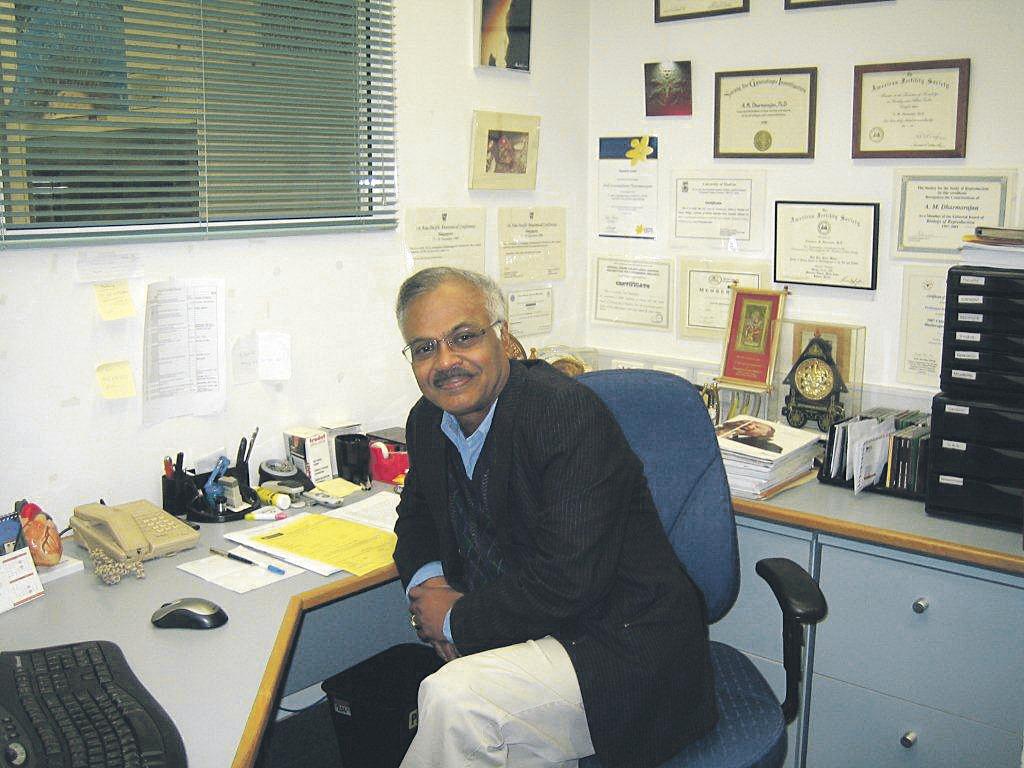
Sai Narayan: What motivated you to come to Australia and make Perth your home?

Prof Arun Dharmarajan: I was born in India near Trichy. My family migrated to Sri Lanka when I was five. At fifteen, I returned to India to do my pre-university schooling, followed by bachelor’s degree in science and post-graduation in human physiology, anatomy and biochemistry at the University of Madras. I returned to Sri Lanka as a lecturer at the University of Sri Lanka, but I felt that research was my true calling. I started reading research papers and my PhD mentor Professor Neville Bruce’s paper – he was based here in Australia – fascinated me. He was working on research on the corpus luteum – an organ formed every 2 weeks at the time of ovulation. It usually lives for 2 weeks and dies. But during pregnancy it lives for 3 months. The fate of the organ is decided at the time of ovulation – 2 weeks or 3 months. In his paper, he asked the question: “What determines the life of this organ?” I wrote to him in 1980, asking if he could take me on as a PhD student. I persevered and applied for a scholarship which was granted. I landed in Perth and started working with Prof Bruce, and published many papers with
him. After my PhD, I did a ten-year stint at the John Hopkins Medical School in Baltimore, USA where I steadily rose up the ranks. But when Prof Bruce advised me to return to Perth, I came back.
SN: Do you still maintain links with India?
AD: I go to India 2-3 times a year, mainly because I initiated the ‘India only’ scholarship at UWA in 2007-2008. We secured 50 PhD scholarships (across all disciplines) at UWA just for India. I visit different institutions - research and universities - to tell them about UWA and the scholarship scheme. Nowhere in the world has any university awarded 50 scholarships dedicated to India.
SN: How did you get started with cancer research?
AD: I started by trying to find out what was telling this organ - the corpus luteum - to die. There is a phenomenon called programmed cell death. When animals are pregnant the corpus luteum lives for bit longer and continues to do its job. That prompted me to find out what causes this organ to live or die. I went to the cellular level and started finding genes that are expressed at the time of death. As a natural extension, what happens in cancer is that the cells don’t die. They become resistant to death and even chemotherapy can’t kill them. I moved on to cancer research. What interested me most was chemo resistance. Ovarian cancer cells become resistant to chemo. So what was different about these cancer cells? I found a few genes over-expressed in these tumours. If these genes are suppressed, then treated, they can be killed. They become chemo sensitive. About 5 to 6 years ago I found a particular protein I have been working on for the last 17 years, which can block blood supply. We used cell cultures in special mice called “nude mice”, they are immune deficient and cannot reject a foreign body. We injected human ovarian cancer cells in these mice. Then we injected the protein we discovered and looked at the tumour volume over time. The tumour never grew, whereas in the control mice the tumour was very aggressive, visibly seen. We measured this for 45 days; the protein totally suppressed the tumour growth! If we cut off the blood supply, it cannot survive. If humans don’t get food, they can live on for some time but eventually they will perish. It is the same with the tumours. Cut off the blood supply and eventually they will die. They cannot grow. The protein does this. But research is never-ending and we have to find out how the protein prevents tumour growth. I am currently exploring these mechanisms.
SN: So when did you start considering this protein for commercialization?
AD: This discovery about cutting off the blood supply with SFRP4 is only 5 years old. It takes about 10 years from bench to bedside! We still have to conduct toxicity studies, that’s where nanotechnology comes in. Before we can start Phase 1 clinical trials
on humans, we have to fully ensure it is not toxic. For our patients, we have to ensure that all other organs are fine; imagine if it cuts off the blood supply to the brain or heart while suppressing liver cancer? Several companies Pfizer, Johnson and Johnson, Amgen have indicated that their concern is (targetted) delivery.
SN: How is nanotechnology being used in your research?
AD: Nanotechnology can encapsulate this protein into a very small particle. You can coat the surface of this particle with a signalling molecule that can recognise the tumour and reach it, in order to break it. Because of the difference in pH, it can go near and bombard the tumour and when it does that, the protein is released and it can act on the tumour.
The second thing is that it’s a big protein. What we were working on is to try and break it into very small fragments. I have been able to accomplished that. We now encapsulate this small protein using nanotechnology to target the tumour. It can do targetted drug delivery.
The concern with nanotechnology is that the particle we are using to encapsulate it should not be toxic itself. That’s a major reason why people have not used nanotechnology in human patients yet. It is still at the animal level. Leave alone the protein, the particle used to encapsulate has to be totally toxin free.
SN: How far off are you from clinical trials on humans?
AD: 2-3 years, I’d say. Pharma companies want us to do some additional validation before taking it through Clinical Trials 1-3 and to the market.
SN: Which Indian labs are you collaborating with?
AD: On this project, we are working with Anna University in Chennai. It’s a joint patent between Anna and UWA that has been going extremely well over the last 5 years.
SN: What are your major goals for the next 5 years?
AD: I want to take this discovery to the market. If it doesn’t help extend life I won’t be satisfied.
SN: How do you balance between work and home in your field of scientific research?
AD: I appreciate my wife and son’s support. It’s a 24 hour job. I travel extensively - for about SIX months in a year. Family support is very important to science research. My wife Bawani is a diabetic and has been for 20 years and so it’s difficult for her to travel, but you wouldn’t know it if you saw her. In my PhD thesis, I thanked her for being a “scientific widow”! Sometimes we don’t even see each other
SEPTEMBER (2) 2011 <> 23 NATIONAL EDITION
www.indianlink.com.au



24 <> SEPTEMBER (2) 2011 INDIAN LINK Only one call can change your life DONE WELL IN THE UMAT? THE NEXT, CRUCIAL STAGE IS: THE INTERVIEWS! Medical interviews are different from normal interviews and seek specific qualities They happen right after your HSC exam so, for: TUTITION FOR MEDICAL INTERVIEW PREPARATION BY A CURRENT MEDICAL STUDENT Contact Yash on 0425 298848 I’m experienced at interviews, having been to many last year and having tasted success not only in medical interviews but for scholarship and cadetship interviews as well. It’s all about preparation and knowing how to present yourself for the optimum outcome. Make the most of the opportunity now and ace those interviews! ALSO FEW VACANCIES left for SEPT.2011 & JAN 2012 school holiday classes of PERSONALISED TUTION FOR UMAT 2012 & HSC.
Flamboyant, frenetic, fascinating Falguni!

In a memorable evening, the magic of raas garba comes to Sydney via one of its most renowned advocates

 BY SHRADDHA ARJUN
BY SHRADDHA ARJUN
Falguni Pathak’s power-packed performance this season definitely left me star-struck. The garba event that took place at the Netball Centre at Lidcombe was a treat for the young and the old alike.
As the crowds started filling up the dance floor, the band of percussionists set up their equipment. Around 8:30pm, the music took off and the MC came on stage.
By this time, I was completely distracted by the elaborate costumes, ghagra cholis to be precise, that were bedecked with intricate bandhini patterns and glasswork. Most women in the crowd looked stunning, while the children looked adorable in traditional attire. Some dancers had genuinely made an effort at looking as authentic as possible, the jewellery, the headgear, the colorful embellished umbrellas and the entire paraphernalia left no room for doubt as to their origins. I was instantly teleported to a city in Gujarat, or at least it felt like I was amidst an exquisite set of a Sanjay Leela Bhansali film!
There were incessant sounds of bangles, anklets and laughter that surrounded the stage, while the audience waited for the star of the night - Falguni Pathak - to come on. The band was warming up with a few popular folk songs; starting with an invocation to Lord Ganesha that was followed by Kesariya balam padharo mare des re, which brought tears to some in the audience.
Finally when the inimitable Falguni appeared, the crowd went crazy. I could see the adulation in their eyes, the continuous hooting and cheering making it quite evident that they loved her. It was still a very civilized audience as there was no pushing around and people were not trying to climb over to the stage. While initially they couldn’t take their eyes off Falguni, they gradually took to dancing with their groups of family and friends. It was not important for one to necessarily know how to dance the garba, it was all about having fun. I did notice some very seasoned garba dancers who did not miss a step, and others who lead the crowd. There were human trains hopping and swinging across the dance floor and circles formed by dancing groups.
I had an impression that the night was going to be only about traditional Gujarati folk music, but I was pleasantly surprised.
Falguni Pathak, the versatile singer that she is, did the most unexpected thing on stage. She did a bout of head-banging to a song from Rock On! Now that was something one wouldn’t expect to hear at such a concert! Breaking the cliché, she sang songs in other Indian languages too. The list included the
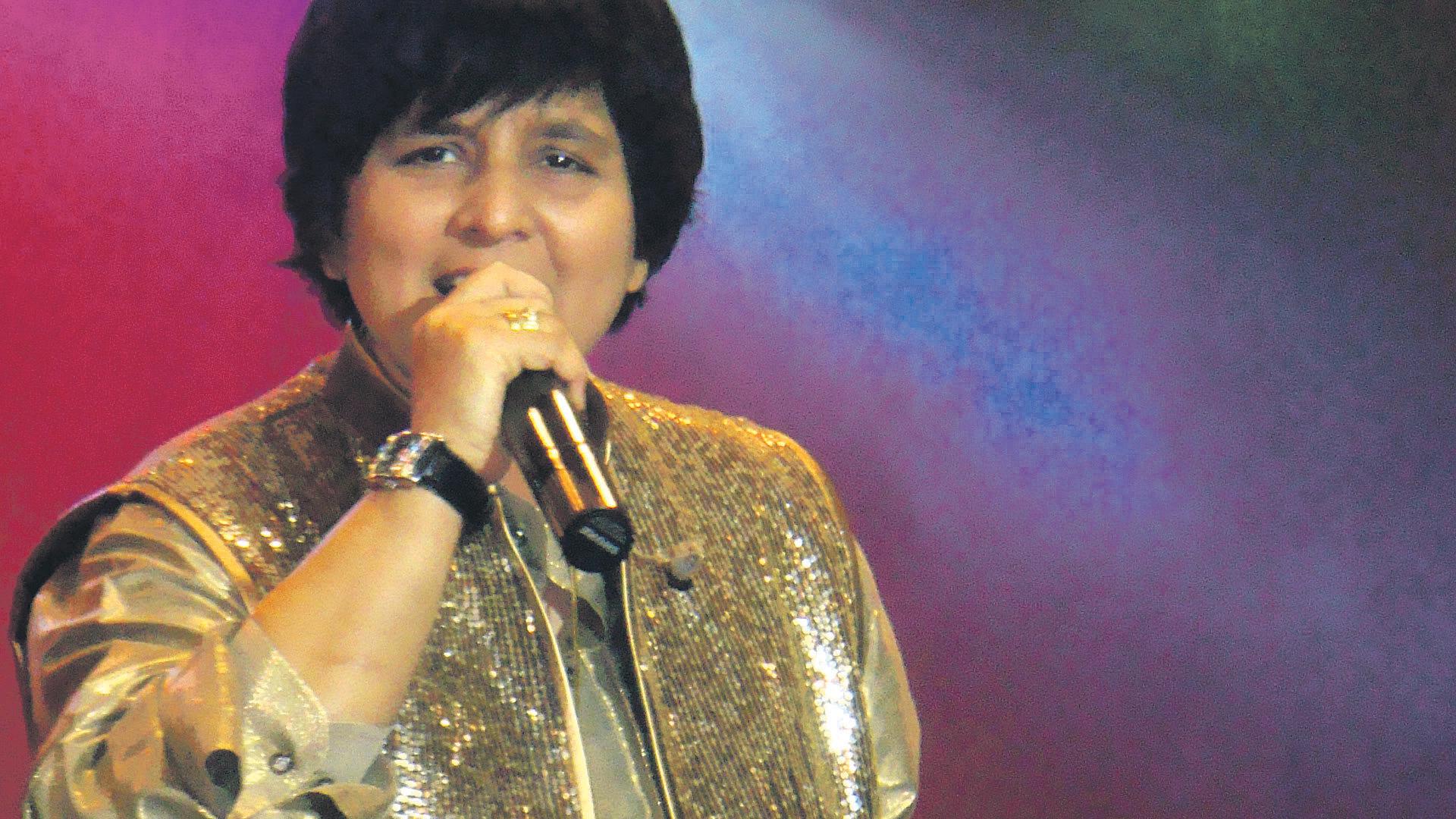
popular Goan song Govinda ala re stage, like whistling, were very entertaining. She also sang Suneeta Rao’s most popular hit single, applause.
Falguni Pathak is well-known for her unconventional style of dressing. Her outfit for the evening was a shiny, embellished top with a pair of jeans, her biggest accessory being a smile that lit up the entire room. She also sang some of her own hit numbers, which went down well with the audience.

I decided to take a break and enjoy the food halfway through the event, and was more than satisfied with the delicious fare available at stalls on the periphery of the dance floor. Unlike other events I was happy to note that most people were mostly interested in dancing, rather than the food. As I wandered around munching on some really hot curry, I saw a flamboyant limousine parked near the gates. A passerby told me that it was how Falguni Pathak had arrived at the venue that evening.
It was very interesting to see how
actually prevented injuries and accidents that are often a part of such events. It was also interesting to see how prams and babies were a part of the dancing, stationed in the centre of the circle around which their parents danced. I could barely hear any cranky kids crying. They felt at home and completely entertained as well. There were seats provided for the elderly and others who weren’t dancing, at the end of the room.
The mercury levels rose as the crowds danced all night. Their energy was matched with the electrifying performance of Falguni and the band on stage. She kept the adrenaline levels high and constantly reached out to keep the crowds in the mood for dancing. Skirts twirled as bodies swirled. As the pace took on feverish heights, it was impossible to sit down and watch. I was
With cameras clicking away and recording every moment, the event in every sense was different backgrounds together. I could even spot some gorgeous local Australians!
Gargiji, an avid listener on Indian Link Radio who had missed out on the show spoke to me on air the next day about Falguni Pathak. She spoke about how Falguni had started off as a singer when she was only 12. Gargiji remembers her as a bright kid who was a part of the garba celebrations in her neighborhood. The show ended at midnight, when Falguni made a Cinderella-like exit leaving the crowd wanting more. Despite the blisters that were a result of dancing all night, it was a celebration to remember. As
SEPTEMBER (2) 2011 <> 25 NATIONAL EDITION www.indianlink.com.au FESTIVAL
Dance and drama mark Onam
The Sydney Malayalee Association Inc (SYDMAL) celebrated Onam festival on August 27 at Granville Town Hall. The celebrations began after 5 pm, with SYDMAL President Padmanabhan Karamil’s welcoming the gathering. Next, Vice President K P Jose spoke at length about the vision and future direction of the SYDMAL.


John Jacob, Executive Committee, introduced Mr Areef Sheikh, Head of Indian Banking with Commonwealth Bank of Australia. Mr Sheikh explained various actions taken by the Commonwealth Bank to help the Indian community, including opening of a branch in Mumbai in 2010.
The Hon Mr Ed Husic MP, representing
the Hon Ms Kate Lundy MP (Parliamentary Secretary for Immigration and Multicultural Affairs), presented the SYDMAL Excellence Awards to Ms Susan Jacob, Ms Neetha Thampy and Ms Nikita Santhosh, and then addressed the audience.
Mr Tony Issa OAM, MP representing Hon Mr Victor Dominello (Minister for Citizenship and Communities and Minister for Aboriginal Affairs) presented the SYDMAL Community Service Award to Mr Anil Chambad, and also addressed the audience.
Before speaking to the gathering, the Hon Mr Geoff Lee MP (Chair of the Indian Ministerial Consultative Committee, NSW) presented SYDMAL’s Lifetime Social
and Cultural Award posthumously to Mrs Leelamony Pillai, which was accepted by Dr Parameswaran Pillai, the late Mrs Pillai’s husband.
Various performers enthralled the audience with mesmeric dance performances and songs, to add a festive flavour to the programme. A popular song sung by the youngest singer Ms Keziah Mathew, brought the house down. A dance depicting Kerala’s rich and diverse culture was performed by talented youngsters, and was well received by the crowd.
Keralanadham, a literary publication to promote writers from Indian background in Australia, released its 12th issue.
SYDMAL’S Art & Culture award was presented to Mrs Manju Suresh by UIA President Mr Amarinder Bajwa.
Young performers were awarded certificates of appreciation by Mr Areef Sheikh from Commonwealth Bank.
Jacob Alex, Treasurer, SYDMAL gave the vote of thanks, and the Onam celebrations culminated with a sumptuous Onam sadya (traditional Malayalee vegetarian meal) with payasam. The general atmosphere of the evening was that of a large family gathering to enjoy themselves and have a good time.
The legend of Onam is that the good King Mahabali ruled Kerala once upon a time, and he treated all his subjects equally, so they were all prosperous He was a good ruler, which made the Gods jealous. King Mahabali was deposed by the trickery of Mahavishnu, and was sent to Pathalam with an annual visit permitted, which is Onam. Ever since, Malayalees celebrate Onam with new clothes, feasting, and joy to remind themselves of the good old days. Mr P V Santhosh as King Mahabali blessed his subjects.
Sunny Cherian
Mt Druitt students win Minister’s Tamil award
Mt Druitt students win Minister’s Tamil award

Manasa Kumar and Samantha Vigneshwaran have been awarded the 2011 Minister’s Award for excellence in student achievement. Held on 5 September at Clancy Auditorium in the University of New South Wales, the annual awards recognize and celebrate the work of individual students for their “contribution to the study of community languages as well as their commitment to the development of intercultural understanding and involvement in the school and wider ethnic community”.
The two girls who are enrolled at the Mt Druitt Tamil Study Centre have received the award under the Highly Commended category. Run by a team of dedicated volunteers, the Study Centre incidentally will celebrate a milestone of its own this year when it completes two decades of existence.
While Manasa was felicitated in the junior division, Samantha received her commendation for the senior division. The two have diligently attended Tamil classes
for the past 8 years, not only improving their spoken and written skills but also made meaningful contributions to the school.
“We are very grateful to their teachers Arumainathan and Kumaran, said Manasa’s father Kumar Perumal. They were nominated for this award based on their accomplishment in language achievement and proficiency, awareness of cultural background and intercultural relations, contribution to the school community and leadership in the community, he added. Learning their mother tongue has really made them feel very close to the community’s culture AND tradition.

It has also developed their ability to understand the importance of other community languages, he further stated.
12 year-old Manasa is completing her final year at Quakers Hill Primary School, while Samantha is currently studying Year 7 at Baulkham Hills High School.
Both the girls are committed to attending the Tamil Study Centre not just to learn
Good luck girls, go for your dreams!
Usha Ramanujam Arvind
26 <> SEPTEMBER (2) 2011 INDIAN LINK www.indianlink.com.au COMMUNITYSCENE
Above: Manasa
Left: Samantha
Photo: Sunny Cherian



SEPTEMBER (2) 2011 <> 27 NATIONAL EDITION For expert coaching in Lowest Fee Guaranteed IELTS ENGLISH GURU Suite -1, 71 A Macquarie St, Parramatta, Phone 0411 520 546, 9687 9741 www.englishguru.com.au • Power Packed Sessions. • One and Two Weeks Crash Courses Available. • Money completely refundable, if not satisfied with the first tuition session.




28 <> SEPTEMBER (2) 2011 INDIAN LINK Indian Restaurant for Sale In Harris Park Please call on 0469 913 587
Indian American named business head in rich US county
An Indian American with interests in media and the diamond business has been promoted as director of Business and Economic Development of Nassau County in New York state, one of America’s wealthiest counties.
The first Indian American to hold the top business job, Kamlesh Mehta’s primary role is to provide support to existing businesses which are suffering in tough economic times and create opportunities to attract new business enterprises.
Mehta had joined the county administration as deputy director in the Office of Economic Development in January 2010 when newly elected county executive Edward Mangano took charge in Long Island after a surprising victory over the two-term incumbent.
Mehta has interests in media and the precious stones trade and is on the boards of diverse businesses.
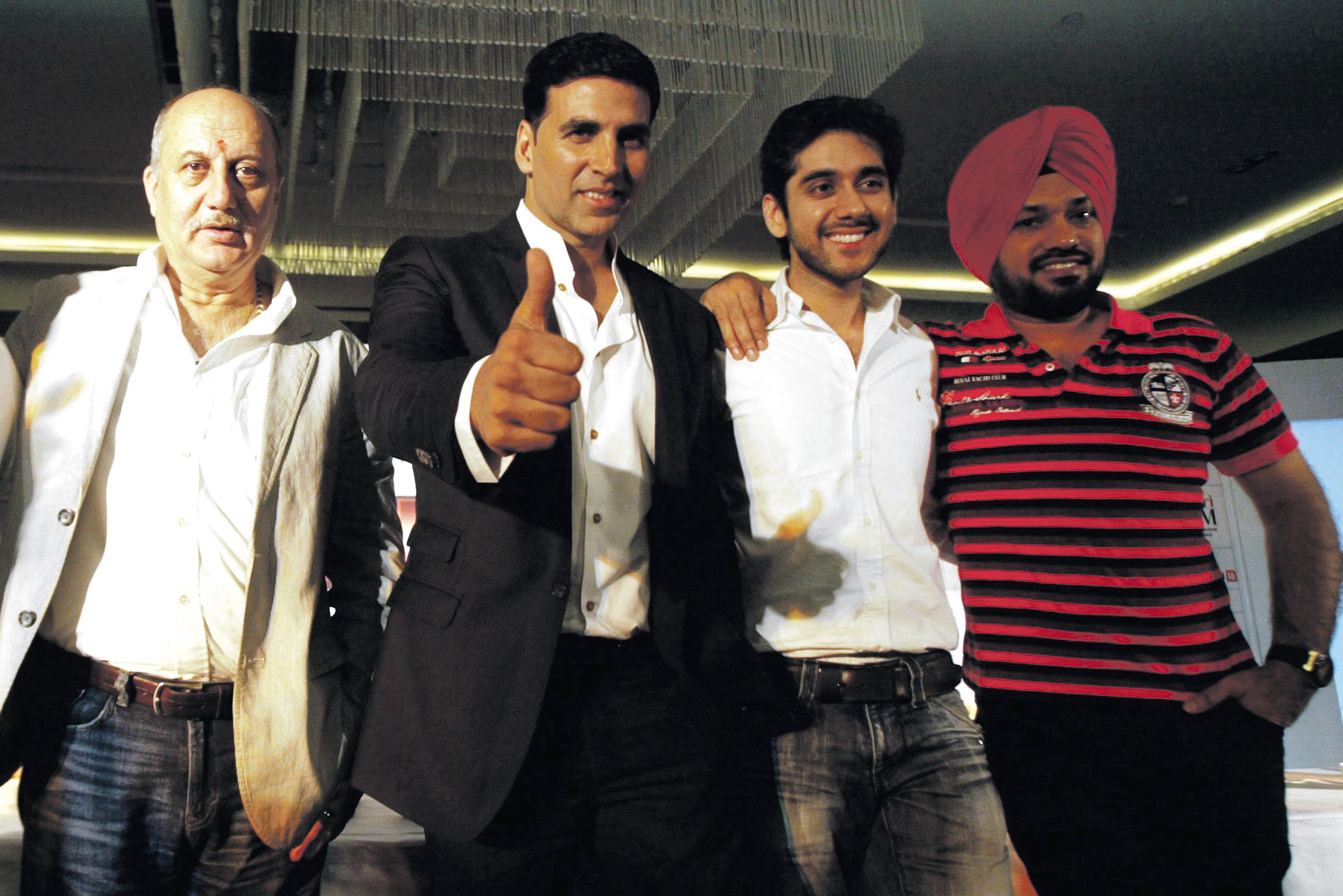
Born and brought up in Beawar, Rajasthan, he started his diamond business in Mumbai before moving to New York in 1986 to expand.
In 2008, Mehta delved into media by founding The South Asian Times. In less than three years, it has become one of the most read US-based Indian newspapers via its print and online presence.
He has been honoured with a Life Time Achievement Award by the Business Resources Group of Nassau County’s Legislative Chambers and by the National Federation of Indian American Associations for Excellence of Services in the print media.
Ten years after 9/11, Indian Americans have come a long way
Ten years after terrorists struck US unleashing a backlash against the South Asians given their close resemblance to the hijackers from the Middle East, the community has come a long way.
“Looking back, the country has changed substantially. Just after 9/11, people at large looked at South Asians with some suspicion. Things have completely changed now,” Thomas Abraham, founder president and chairman emeritus of the Global Organization of People of Indian Origin (GOPIO) said recently.
“The Indian American community
has become very active politically,” he noted. “We have two governors and over a dozen legislatives in the state, county and city levels. We have several people in the administration. That is a lot of accomplishments for the Indian American community.”
Abraham recalled that after 9/11 GOPIO had asked “our community members to be alert and cautious since the terrorists were from the Middle East and closely resemble South Asians.”
Deepa Iyer, executive director, South Asian Americans Leading Together (SAALT) also recalled how the organisation transformed and expanded its mission after 9/11.
“When we saw the impact of backlash and discrimination on our community, we realised that there was a void, especially at the national level, of a voice dedicated to raising the perspective of South Asians in the US,” she said.
“SAALT aimed to fill that void, and to bring the issues faced by our communities ‘at the table,’ so to speak, especially with government agencies and elected officials,” Iyer said.
In 2007, SAALT helped create the National Coalition of South Asian Organizations (NCSO), a network of 42 organizations that serve, organise, and advocate on behalf of the South Asian community across the US.
Another community organisation, the Sikh Coalition has organised hearings on post-9/11 backlash and discrimination attended by over 200 members of Sikh, Arab, Muslim, and South Asian American communities as well as government officials, advocates, and scholars.
Billed as the Unheard Voices of 9/11, the hearings in New York City and Mountain View, California, featured testimony from individuals impacted by backlash discrimination, including targets of school bullying, job discrimination, and profiling.
Australian couple in India on trail of lost son
“If I am gone, I am not dead. I have gone to free my mind...” These are lines in the memoir of a missing Australian youth that have been keeping the “journey of hope” alive for his elderly parents.
Jock and Dianne Chambers from Mount Gambier in Australia are in India these days - for the father it’s the fourth visit in six years - in search of their youngest son
Ryan, who went missing from Rishikesh in Uttarakhand in August 2005.
Backpackers Ryan and his childhood friend John Booker were on an eight-month religious retreat in India. They flew out of Adelaide on June 19, 2005, for Kuala Lumpur. After spending a night there, they reached Chennai the next day.
After two months of travelling in various Indian cities and tourist resorts, they reached Rishikesh’s Sri Ved Niketan, an ashram offering yoga and meditation teachings.
On Aug 24, Ryan, then 21, left his room early morning barefoot and shirtless, leaving behind cash and travel documents. He has been missing since then.
“We have come here (Kullu) in search of our son and spread information about him (through posters) that he’s missing and his family in Australia is desperately waiting to hear about him,” said 60-year-old Jock.
The picturesque Kullu Valley, also known as the valley of gods, is an attraction for thousands of backpackers. Of late it has gained notoriety for luring foreigners for cheap and quality hash. But some never return home -- they simply vanish.
“During our stay in Kullu and nearby towns, we met police officials and interacted with locals and provided them details about Ryan,” he said.
The couple provided posters to the police, which carry their son’s picture and the pronouncement of a reward of Rs.10 lakh for anyone who gives clues about him.
“Police officials informed us that in the past five years they have neither arrested any foreigner roaming without visa documents nor come across any unidentified body of a foreigner in Kullu Valley,” Dianne said with tears in her eyes.
Before landing in Kullu last week and staying there for three days, the couple were in Rishikesh and Dehradun, the capital of Uttarakhand.
The couple met Director General of Police (DGP) Jyoti Swaroop Pandey in Dehradun in August, who informed them that the case would be handed over to the Special Task Force.
“We are more satisfied this time after meeting Pandey. He asked about the entire chronology of incidents and assured full cooperation,” said an optimistic Jock for whom this is the fourth visit to India since the youngest of his three sons went missing.
This time the couple met a woman
astrologer in Indore who assured them “their son is still alive and he is being looked after by a woman who is elder to him”.
Ryan’s family has tried every tool to trace him - from Australian authorities to hiring a private investigator. They are now banking more on social networking site Facebook and a blog on Ryan.
Jock, who gets up early in the morning to update the Facebook status, said a few sightings of Ryan have been reported but have never been confirmed.
After Kullu, the couple stayed in Shimla for a couple of days before leaving for Delhi to catch a flight to Chennai to follow up a comment posted on website www. ryanchambers.in by a person who spotted Ryan at a bus stand there in April 2010.
“When i was in india (where i come from) i saw him at chennai, koyambedu bus station... i initiated the conversation and when he told me he was from australia, i was delighted...
“I did see him and talk to him for like 15 mins until, when i asked him, if i was bothering him for which he replied, ‘a little bit’ and so i left,” wrote Babu, an Indian settled in Australia, on the blog Aug 15, 2011.
Hopeful Dianne, who is in India for the first time, said: “Had my son disappeared in my country for such a long period I would have lost all hope. But the culture of India to adopt outsiders makes me believe that my son is alive and is somewhere in India.”
The mother, who got a call from Ryan just a day before he went missing, said: “I feel Ryan had developed some psychological problem, being too philosophical during his visit.”
Asians buck the trend as poverty rises in US
Asians, including Indian Americans, were the lone exception as the number of poor in US rose for the fourth consecutive year across all racial and ethnic groups last year.
According to a Census Bureau report issued recently, 46.2 million Americans, nearly one in six, were living in poverty in 2010, up from 43.6 million in 2009, representing the largest number of Americans in poverty in the 52 years.
In the case of Asians poverty levels remained at 12.1 percent. Poverty among Hispanics increased to 26.6 percent; among blacks it rose to 27.4 percent; among whites it climbed to 9.9 percent.
Asians again bucked the trend as median household income in the US also fell to $49,445, the lowest level since 1996 after adjusting for inflation, with a 2.3 percent drop in 2010.
Asians with a median income of $64,308 were the top earners with non-Hispanic whites following with $54,620. Hispanics with $37,759 came next while Blacks earned the least at $32,068.
The trends reflected the struggling US economy, which has seen unemployment hover at around 9 percent for two years, and which will be a key campaign issue heading into the 2012 election season.tThe nation’s official poverty rate increased to 15.1 percent in 2010, up from 14.3 percent in 2009. In the last three years, the poverty rate has risen faster than any other three-year period since the early 1980s.tThe report showed that a record number of women live in poverty and extreme poverty. The poverty rate among women climbed to 14.5 percent in 2010 from 13.9 percent in 2009, the highest in 17 years.tIncome fell least for the most affluent households - down 1.2 percent to $180,810 in 2010 for the top 5 percent of households. Income declines got increasingly large down the income ladder.tThe bottom fifth of householdsthose making $20,000 or less in 2010 - saw incomes decline 3.8 percent after inflation.
SEPTEMBER (2) 2011 <> 29 NATIONAL EDITION DIASPORA
IANS www.indianlink.com.au
Bollywood actors Akshay Kumar, Anupam Kher, Gurpreet Ghuggi and Vinay Virmani promote their movie Speedy Singhs (Breakaway). The movie, directed by Canadian Robert Lieberman releases on 23 September 2011 in USA.
Photo: AP
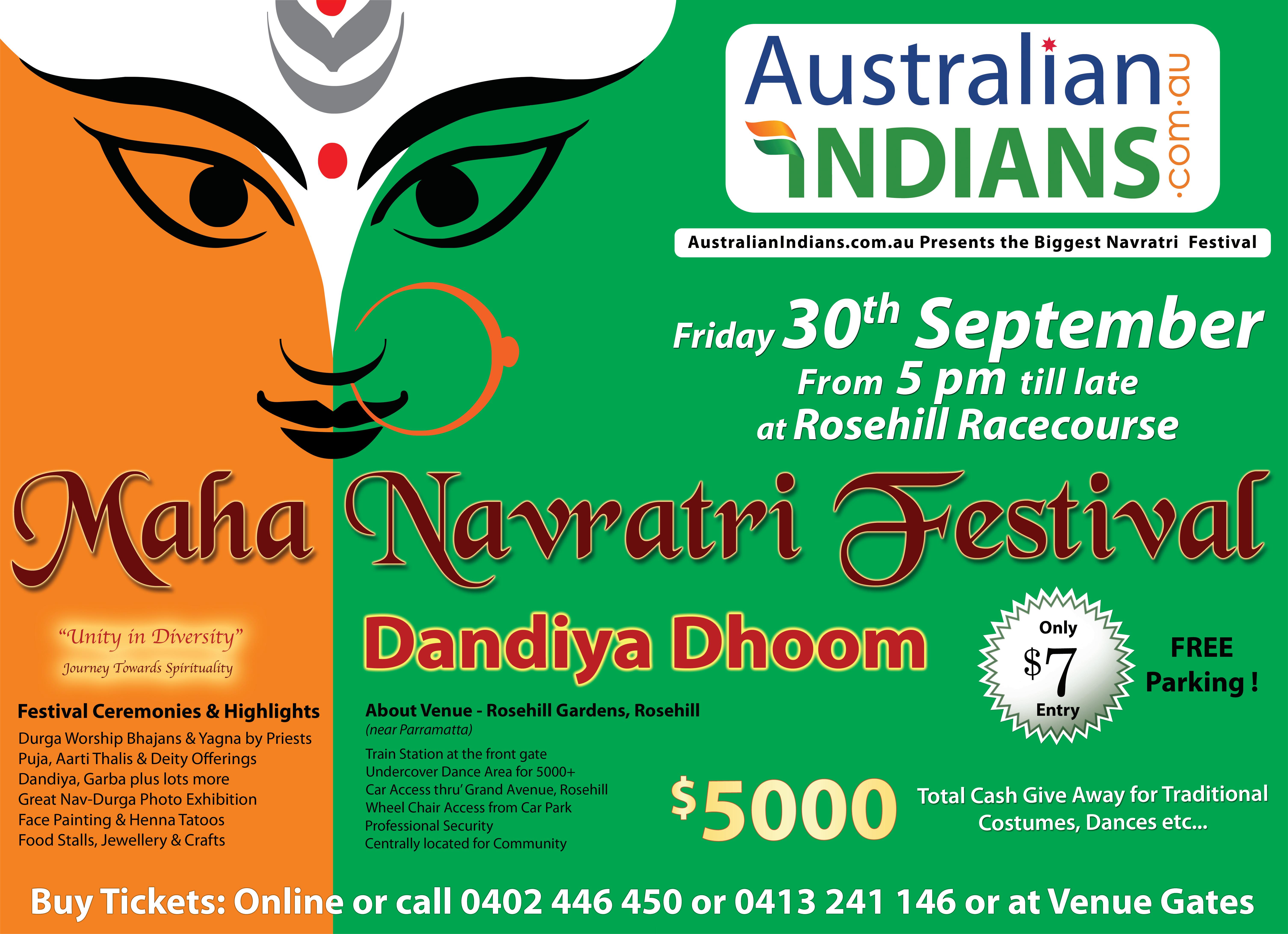
30 <> SEPTEMBER (2) 2011 INDIAN LINK

SEPTEMBER (2) 2011 <> 31 NATIONAL EDITION
Chef/Sta required
A busy Indian restaurant 90 mins south of Sydney seeks a hard working all rounder, who is an expert at the front of the house and can also relieve the Tandoori Chef on a couple of days each week Should have Chef/cook qualifi cations. Suitable candidate can be of fered a 3 year 457 visa.
Also required wait staf f, deliver y drivers and kitchen hand for our upcoming restaurant in Waverton ( North Sydney)


Contact 0410 587 045

email: indiantandoori@hotmail.com

32 <> SEPTEMBER (2) 2011 INDIAN LINK
Sensors, 3,855kms, S/N 452298






































































































SEPTEMBER (2) 2011 <> 33 NATIONAL EDITION Trivett Classic Honda Parramatta MD579 54 Church St, - Entry via Anderson St. Ph: 9841 4070. Open 7 days Trivett Honda Blacktown MD13600 Cnr Sunnyholt Rd & Second Ave. Ph: 8822 1155. Open 7 days Visit www.trivett.com.au/Honda for more special offers. PARRAMATTA Driveaway BLACKTOWN Driveaway Even our deals are beautifully engineered Offer is available from Alphera Financial Services for business use vehicles on a commercial hire purchase agreement over 60 months at 8.95% p.a. (a) Based on drive away price of $16,990, deposit of $2,548.50, monthly repayments of $249 and a final payment of $4,332.45. Total payable where contract fully paid out at contract end $21,832. (b) Based on a drive away price of $29,990, deposit of $4,498.50, monthly repayments of $416 and a final payment of $8,997. Total payable where contract fully paid out at contract end $38,442. (c) Based on a drive away price of $41,990, deposit of $6,298.50, monthly repayments of $579 and a final payment of $12,597. Total payable where contract fully paid out at contract end $53,629. Cannot be combined with any other offer. Fees & charges are payable. Terms & conditions apply. Applications for finance are subject to Alphera Financial Services’ normal lending & approval criteria. For further details contact your local Trivett dealership. Vehicles available as at 11 August 2011. * Fuel consumption figures quoted are based on ADR81/02 combined test results. The Bluetooth word mark is owned by the Bluetooth SIG, Inc. and use of such mark by Honda is under licence. Please check the list of compatible phones at honda.com.au/bluetooth. SC223110811 2011 Civic VTi-L Manual, Alabaster Silver, Alloys, Rear Sensors, Bluetooth, 12kms, S/N 452250 2011 Civic Si, Milano Red, Dual Zone Air, Alloys, 6 Air Bags, 110kms, S/N 452331 2010 Accord Euro Std, Buran Silver, Rear Spoiler, Tint, Dual Zone Air, 4,014kms, S/N 452166 2010 Insight VTi-L Auto, Spectrum White, Sat Nav, Alloys, VSA, 5,900kms, S/N 452187 2011 CRV Luxury, Alabaster Silver, Leather, Sunroof, Rear
$24,990 $31,990 $32,990 $33,990 $40,990 2010 City VTi-L Manual,
2010 Insight VTi Auto,
2011 Accord Euro Luxury Auto,
223438 2010 Accord V6 Luxury Auto, Brilliant White, Leather, Navigation, 5,210kms, S/N 223348 2010 Odyssey Luxury Auto, Silver, Leather, Sunroof, Tri-Zone Climate Control, 2,856kms, S/N 223313 $21,488 $29,888 $39,888 $42,240 $43,888 > 2.4 litre i-VTEC engine > 5-speed automatic > 7 seater > Climate control > Alloy wheels > Rear parking sensors > Retractable 3rd row seats > Bluetooth phone > Stability control > 8.9 litres per 100km* > 1.3 litre i-VTEC engine > 5-speed manual > Bluetooth phone > USB/iPod audio > Front, side & curtain airbags > Stability control > 5.8 litres per 100km* > 1.8 litre i-VTEC engine > 6 speed manual > Rear parking sensors > Automatic headlights & wipers> Dual zone climate control > Alloy wheels > USB connectivity > Foglights Civic Si $29,990 drive away^ per week B or $96 per week C or $134 Odyssey $41,990 drive away^ New Jazz GLi $16,990 drive away per week A or $58 Plus, hurry into Trivett Honda during August for great deals on selected Demo models including: We are a ONE STOP SHOP for all your REAL ESTATE & FINANCIAL needs • Property: Buying, Selling & Property Management • Loans : Home, Commercial , Refinancing and Self Managed Super Funds Loans • Financial Planning: Retirement & Investment Planning • Superannuation: Personal & Self Managed Super Fund • Insurance: Life/TPD/Income Protection/Trauma • General Insurance: Home & Contents /Public Liability Paul Pius Financial Adviser M: 0401687842 E: ppius@anfg.com.au Blacktown Office: 3/94 Main Street Blacktown, NSW 2148 Head office: Level 5, 4 Columbia Court Norwest Business Park, Baulkham Hills, NSW 2153 Shaktika Singh Property Consultant M: 0405514712 E: shaktika@firstnationalblacktown.com.au WE PUT YOU FIRST
Alabaster Silver, iPod Connectivity, Cruise Control, 3,832kms, S/N 222512
Red, USB Connection, Cruise Control, 1,050kms, S/N 223115
Black, Leather, Front & Rear Parking Sensors, 5,060kms, S/N
42 die in Indian quake, rains hamper relief work
The death toll in an earthquake that ravaged Sikkim’s border with Nepal rose to 42 on September 19, amid fears that the toll could go up as rescuers searched for the dead and survivors.
“There is the possibility of the death toll rising,” Home Secretary R.K. Singh said, reasoning that more reports of destruction and casualties were yet to come in from remote hilly regions.
Thousands of soldiers and paramilitary forces battled unending rains and landslides to carry out one of the biggest rescue and relief operation in the hilly region.
In worst-hit Sikkim, which bore the worst of Sunday’s 6.8 magnitude temblor, 35 people were reported killed and over 200 injured. Also, 25 bridges developed cracks and scores of buildings were damaged.
Five people died in West Bengal and two in Bihar, Singh said.
In Sikkim, rescuers searching through the rubble discovered bodies of 10 workers of the Teesta hydel project. Nature’s fury hampered rescue and relief operations, officials said. Sikkim was pounded by incessant rains while landslides in Darjeeling hills in West Bengal slowed down movement of rescuers.
Landslides snapped Sikkim’s only road link for hours, preventing disaster response teams from reaching some of the affected sites.
Power returned to Sikkim only on the afternoon of September 19, after electricity lines snapped because of the earthquake on September 18.
“I saw at least six vehicles hit by landslides, with boulders smashing them on the highway,” said Ravi Lepcha, a teacher in Gangtok.
Ten teams of the National Disaster Response Force (NDRF), including rescue and medical officers, waited for hours to reach quake-hit areas.
Apart from five Indian Air Force planes that carried relief material and NDRF personnel to Baghdogra in West Bengal, the army deployed 7,500 troops in Gangtok, including 2,000 from West Bengal, on “a war footing”.
Five Cheetah and four Dhruv helicopters were pressed into service. The army erected tents for those whose homes were damaged and ran 10 kitchens.
Another 4,000 Indo-Tibetan Border Police (ITBP) and Sashastra Seema Bal (SSB)
personnel joined the soldiers.
More than 400 people, including 26 tourists, were rescued by security forces despite the rough weather and tough terrain, ITBP Director General Ranjit Sinha said.
Home Secretary Singh said that fortunately earth moving equipment and other machinery were already available locally.
At least 1,000 people moved into relief camps.
“It is death and destruction in Sikkim. People are still in shock. Most houses in Gangtok have suffered wide cracks, even gaping cracks are seen on the main roads,” said Arun Gurung, a businessman in Gangtok.
C.B. Karki, Sikkim’s information minister said, “The casualty figure might go up as we are still getting reports of deaths and injuries from remote areas. Telecommunication facilities are down, and hence information is hard to come by.”
Besides the Rs.5 lakh each given to families of the killed, Prime Minister Manmohan Singh has sanctioned Rs.2 lakh each for the next of kin of those killed.
The quake shook large parts of India, from New Delhi to Mizoram. It also jostled Nepal, Tibet and Bangladesh. Nine people were killed in Nepal and seven in Tibet.
Humble Sachin helps
raise Rs.7 crore
telethon
for schools
Batting maestro Sachin Tendulkar was humility personified as a daylong telethon in Mumbai helped raise Rs.7 crore - Rs.2 crore more than the target - for the creation of basic facilities, particularly toilets for girl students, in 140 government schools across the country.
He devoted all of nine hours to the 12hour Coca-Cola-NDTV Support My School telethon on September 18, patiently answering questions from schoolchildren ranging from improving their game to balancing their studies with sports.
“We’ve seen Sachin the batsman, we’ve seen Sachin the sportsperson, but today, we are seeing Sachin the human being,” remarked NDTV chief Pranoy Roy as he wound down the show, immediately after which Tendulkar announced he would donate Rs.500,000 each in the names of his children Arjun and Sara to benefit two schools.
The telethon saw Sachin, other celebrities and schoolchildren come together in a TV studio, a show broadcast live, during which the batting maestro appealed for donations from viewers.
At one stage early in the show that began at 9 am, the batting great almost seemed to break down as a young woman cricketer from
Chennai gushed, saying what great fans of his she and and her father were.
“Thank you for your kind words. I’m humbled. Please give my regards to your father,” Sachin responded.
What then, in totality, was Sachin’s message to the 600-odd boys and girls who attended the show in batches of 45-50?
“Preparation (before a game) is very important. Every failure is a motivation,” he said.
“It is important to switch on and off. When you are playing cricket, think only cricket. When you are studying, think only about studying.”
“Honesty and sincerity will take you miles. There are no shortcuts (in making your way to or up the team).”
“Always think of winning. This will generate energy in your body.”
Interspersed with this were tips on spotting yorkers, dealing with the short ball, executing the reverse scoop and the helicopter shot. The Sachin effect apart, quite a few others, principally from Bollywood, got a look-in and the chief among these was Sanjay Dutt. Then, Govinda and his troupe staged a rousing tribute to the late Shammi Kapoor by performing some of his best known songs like “Aaja, aaja, main hoon pyar tera”, “Yahoo...”, “Suku suku”, “Dil tera dewana hai sannam”, “Taarif karoon kya uski” and finally, “Govinda aala re”. It definitely did bring the house down and left many marvelling at the energy levels of the actor, who is in his late 40s.
A two-member team from Delhi’s Modern School, with singer Raageshwari as mentor, won a sports quiz that had actor Boman Irani as the master of ceremonies. It was a laugh riot all the way, more so as Sanjay Dutt was also mentoring one of the teams, giving Irani an opportunity to replicate dialogues from “Munnabhai M.B.B.S”.

Child actor Darsheel Safari asked Sachin to play some “cool” shots and he happily obliged, while actor Arjun Rampal admitted that the cricketer was the “only one who can get me out of bed on a Sunday morning”.
When the show started at 9 am, just Rs.1.26 crore had been pledged for Support my School, launched in January and which has been spent on creating facilities in 26 schools. The target was Rs.5 crore to aid 100 schools, but thanks to three big-ticket donations in the closing stages - Rs.1.35 crore from UNHABITAT, Rs.1 crore from Nita Ambani on behalf of Reliance Foundation and Rs.90
lakh from an unnamed NRI from Singaporethe target was far exceeded.
The money will be used, at Rs.500,000 per school, for creating toilets for girls and facilities for drinking water, rainwater harvesting, and sports and games in each of the schools.
International publishing house Pearson pledged to create 500 book libraries in 100 schools while inverter maker Luminous pledged 100 inverters and batteries. Both said they would raise the number if required. Peace winds blow in Kashmir Valley
With relative peace returning to Kashmir Valley, tourists are again flocking to Jammu and Kashmir in large numbers. But the army says terrorists are waiting to sneak in from Pakistan.
There have been only sporadic incidents of violence in 2011, leaving 60 guerrillas, 21 security personnel and 25 civilians dead.
The slain security personnel include 13 soldiers and paramilitary troopers as well as eight policemen.
There have been around 25 grenade attacks and seven improvised explosive device blasts so far, said an intelligence officer.
Violence aimed at getting Jammu and Kashmir secede from India has claimed thousands of lives since 1989, with tourism virtually drying up during some years. The picture is now different.
Despite the separatist violence, around 400,000 tourists visited the Valley in addition to about 600,000 who came here for the annual Amarnath Yatra this year.
“We had a very encouraging tourist season this year. People connected with the tourist industry have benefitted,” said an official of the tourism department.
In comparison to 2009 and 2010, when massive protests and unrest hit the local economy and the educational system in the Valley, schools, colleges and universities have functioned normally this year.
Pakistan denies allegations that it arms and supports Islamist militants fighting to end Indian rule in Jammu and Kashmir.
Alarmed by the disturbing law and order situation in the last two years, Chief Minister Omar Abdullah keeps a close eye on the situation, said an official in the civil secretariat.
“The chief minister has alerted the administration that no chances should be taken while dealing with a law and order situation,” an official said.
Abdullah’s commitment became clear when he said on Twitter recently that hardline separatist leader Syed Ali Geelani will not be allowed to hold peace to ransom. An official statement stated his speeches were always followed by stone pelting.
“The state government will not allow anybody to disturb the prevailing peace. If Geelani is placed under house arrest, he is himself responsible for the administration’s decision.”
The top brass of the security forces, including those in the army, maintain separatist guerillas are preparing to infiltrate into the Valley before the mountain passes are closed due to snowfall.
“Some 400 militants are ready to infiltrate. This is because the militant groups want to strengthen their depleting cadres,” Lt. Gen. S.A. Hasnain, general officer commanding (GOC) of the army’s Srinagar-based 15 corps, told the media recently.
The army guards the line of control (LOC), the de facto border between the Indian and Pakistani administered parts of divided Kashmir.
“With the first snowfall, which usually occurs in the higher reaches including the LOC by the middle of October or early November, the mountain passes leading into the Valley get closed.
“But despite the snows blocking the mountain passes, some infiltration bids have been made in winters in the past,” said Lt. Col. J.S. Brar, spokesman of the army’s 15 corps in Srinagar.
‘Japani Phal’ harvest picks up, Himachal traders upbeat
34 <> SEPTEMBER (2) 2011 INDIAN LINK
India’s hockey captain Rajpal Singh, Sports Minister Ajay Maken and Indian hockey team coach Michael Jack Nobbs of Australia hold aloft the Champions Trophy. The Indian team defeated Pakistan in the final match of the first Asian Men’s Hockey Championship in Ordos, northern China’s Inner Mongolia, on September 11, 2011. (India won 4-2 on penalty shootouts.
Photo: AP
crore (Rs.20 billion) fruit industry of Himachal Pradesh.
Though persimmon production this year has been less than last year, farmers are upbeat and hope to get good prices.
Persimmon was introduced by European settlers in the early 20th century in certain pockets of the state. The harvesting of persimmon, which strikingly resembles tomatoes, has begun in Shimla, Kullu and Mandi districts, Director of Horticulture Gurdev Singh said recently.
It would continue till the end of October, he said.
“An extended winter when the persimmon crop was in the blooming stage - a period when flowers start blossoming - and a fury of showers that followed when the crop was maturing, have affected its production,” Gurdev Singh said.
Official estimates say this year’s production would be around 200 tonnes - about 40 percent less than last year’s bumper production of 335 tonnes.
But farmers are not complaining, as the fruit’s prices are shooting up.
Unlike other fruit crops, the persimmon crop was not so badly hit by hostile weather as it is a comparatively hardy plant, said S.P. Bhardwaj, former joint director at the Solanbased Y.S. Parmar University of Horticulture and Forestry.
“Since the persimmon plant can tolerate harsh conditions, its production was not much hit like apples and cherries. The overall production of apples and cherries has dipped by over 60 percent in the state,” he said.
“The persimmon season started almost a week ago. By next fortnight, its harvesting will be in full peak,” said Gurmohinder Singh Kotia, a prominent grower in Seobagh village near Shimla.
The price of Japani Phal, which literally means Japanese fruit, these days ranges between Rs.50 and Rs.60 per kg in Delhi’s Azadpur wholesale fruit market where vendors often sell it as imports from China and Japan.
The fruit is selling from Rs.100 to Rs.120 a kg in retail, traders said, adding in the beginning “persimmon prices are at a significant high due to its short supply”.
Kotia, who has been cultivating persimmon for more than four decades, said the craze for persimmon is picking up.
“Since the crop does not require any insecticide or fertiliser, it’s totally organic. Its demand is catching up mainly in the big cities. Moreover, it’s available in the market at a time when no seasonal fruit is available, except
fruit four to five years after planting. On an average, a full grown persimmon tree yields more than 200 kg of fruit a year.
Persimmon is quite delicious with a lot of sugary content. It contains vitamins A, B and C.
The temperate zones of Shimla, Kullu, Mandi, Chamba and Solan districts are ideal for persimmon cultivation. As per horticulture department estimates, more than 10,000 farmers grow the fruit over 420 hectares.
The fruit is also grown in Uttarakhand, Jammu and Kashmir and Tamil Nadu.
Besides persimmon, fruits like apples, cherries, pears, peaches, apricots, kiwi, strawberries, olives, almonds and plums are the major commercial crops of Himachal Pradesh.
The economy of the hill state is highly dependent on horticulture as well as hydroelectric power and tourism.
Winds of change: girl adoption on the rise in India
There is a ray of sunshine in the dark gloom of female foeticide and communities still discriminating against the girl child in many parts of India.
According to the apex adoption agency in India, the number of girl child adoptions in the country has been on a steady rise over the past few years.
Anu J. Singh, member secretary of the Central Adoption Resource Agency (CARA), credits this happy trend to a change in the mindset of people at large.
“Whether it is because of social advertisements, movies or real life incidents, the mindset is definitely changing,” Singh said.
“People want to adopt a girl child.”
For instance, 1,819 of 2,990 children adopted in 2008 -- both in-country and intercountry-were girls.
In 2009, 1,436 of the 2,518 adopted were girls. The number did come down last year when 2,638 of 6,286 children adopted were girls. But there are reasons behind it.
“Adoption of a child of a particular sex also depends on availability,” Singh said. “So if a couple wants a girl child but we do not have one, they are left with the choice of a boy.” The difference in numbers between 2009 and 2010 also shows a big jump in adoptions in general.
“On the whole, I can say that the trend has definitely reversed and now people want a girl child,” Singh said in an interview.
That the demand for a girl child is rising was also reiterated by Amod Kanth, chairperson of the Delhi Commission for Protection of Child Rights (DCPCR).
interested in adopting a girl today and for me that is a very satisfying trend.”
Take the example of Rishi Wadhwa and his wife, Gayatri. Married for eight years, the childless couple decided to adopt a girl child four years back.
“Gayatri wanted a baby girl and I was all for it, but when after eight years we realised that she will not be able to conceive, we decided to adopt a baby girl; maybe it was God’s way of answering our prayers,” Wadhwa said.
“It was a long wait, but we were ready for it. Patience is the key word. And all of it was worth the wait. Mysha is now four and she is an angel in our lives!” he added.
Bollywood actress Sushmita Sen set an example to many when she adopted a baby girl, Renee, years ago. A single mother, she recently adopted another baby girl, Alisah. According to a report, about 600 children were adopted in one year from Delhi-based Palna-a home for abandoned, homeless and destitute children-and about 65 percent of them were girls.
“Adoptions come under the Hindu Adoption and Maintenance Act of 1956. We have some restrictions, like we do not let livein couples adopt because the sense of a secure home and family is missing,” Singh said.
“Also we do not let a single male adopt a girl child. People have their reservations against these rules, but we feel that a girl, when she is growing up, needs to discuss a lot of things that she may not feel comfortable discussing with her father,” she added. Srinivasan takes charge as BCCI president; terminates Kochi’s contract N.Srinivasan, the newly-appointed president of the Board of Control for Cricket in India (BCCI), took over on September 19, and immediately terminated Kochi Tuskers’ contract after the Indian Premier League (IPL) franchise, despite repeated reminders, defaulted on a Rs.156 crore annual payment it was to make.
“Because of the irremedial breach committed by the Kochi franchise, the BCCI has decided to encash the bank guarantee in their possession and also terminate the franchise. We have terminated the franchise because the breach is not capable of being remedied,” said Srinivasan after the AGM.
The franchise was bought by a consortium comprising some Gujarat-based businessmen for a whopping Rs.1,550 crore last year. According to the rules, franchises have to pay the amount in 10 equal instalments.
Kochi has been in the news right from the start due to a rift between the owners,
who also wanted to shift the team’s base to Ahmedabad. The BCCI, in the past, had also turned down Kochi Tuskers’ request to cut down their franchise fees. Kochi owners were promised 18 games in the Invitation to Tender (ITT) document but this was cut down to 14 as the fourth edition was reduced to a 74game tournament.
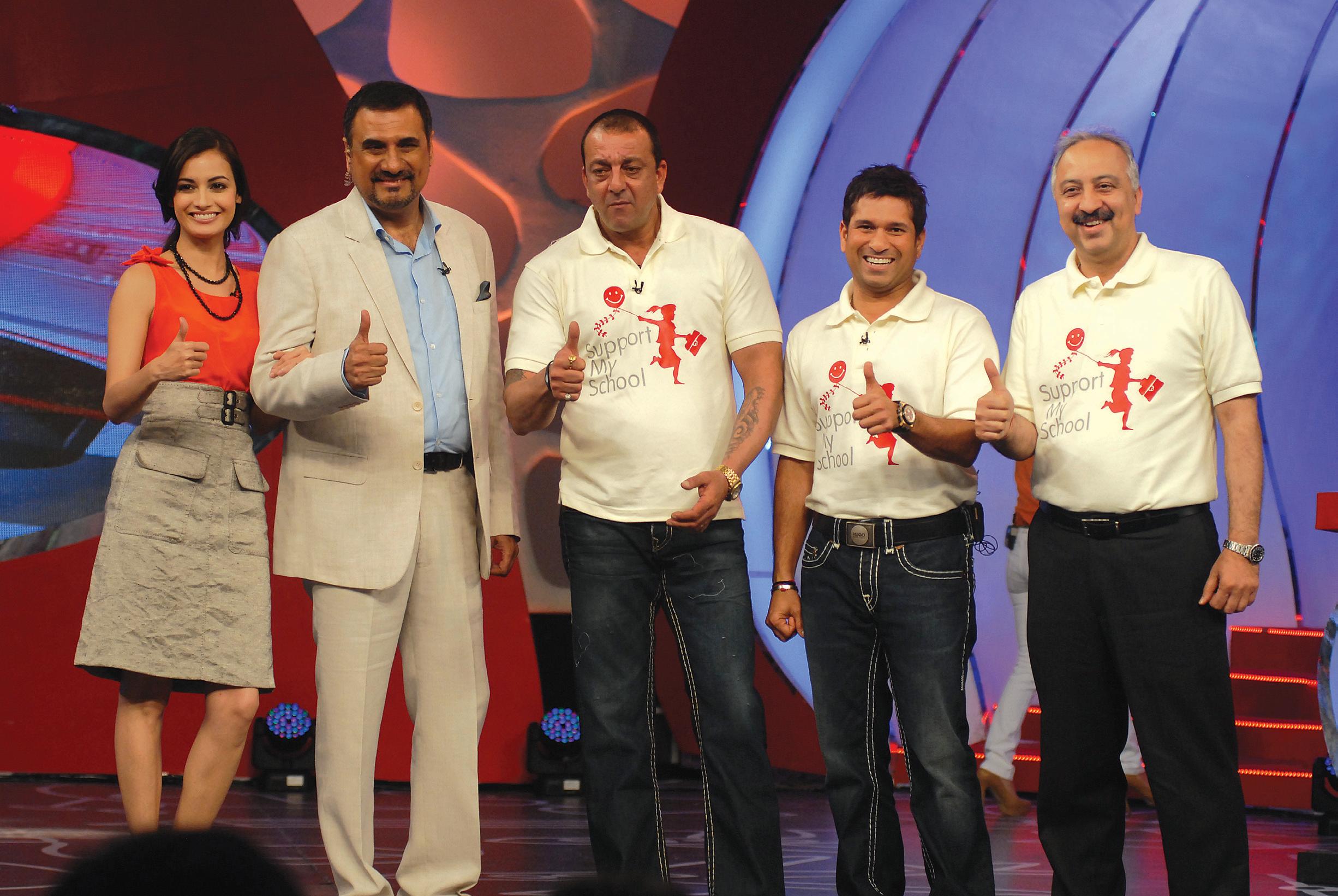
The IPL was earlier planned to be a 94-match tournament was cut down to 74 matches due to the hectic international calendar.
Srinivasan also made it clear that the BCCI would not use the Decision Review System (DRS) in its current form since it is unacceptable to the board. He said the BCCI would raise the issue at the upcoming ICC meetings.
“We have decided not to use DRS in its current form. (Outgoing president) Sashank Manohar had raised this issue at earlier ICC meetings, and I will also raise the issue in future meetings,” he said.
“We were extremely reluctant to implement the DRS and had no belief in the ball tracking system. BCCI is not averse to technology and agreed to a minimum usage of DRS including ‘Hot Spot’ at the last ICC meeting in Hong Kong. We were under the impression that ‘Hot Spot’ was very good. It is not necessary for me to dwell on the accuracy of ‘Hot Spot”. It was there for everybody to see.
“The BCCI will raise this issue at the next ICC meeting. We want to revisit it as we feel ‘Hot Spot’ is insufficient technology and therefore we would request (ICC) that it be revised. This is the position we will take,” said Srinivasan.
He also said that former captain Sourav Ganguly was offered the chairmanship of the technical committee, adding that incumbent Sunil Gavaskar, also a former captain, has written to the BCCI to be relieved from the post.
“Gavaskar has written to us that he has been on the technical committee for seven years, and it’s time that we search for a fresh face. It is our intention to appoint Sourav Ganguly as the chairman of the technical committee. We haven’t yet been able to contact him, but hopefully he will give his consent,” Srinivasan said.
On the appointment of Mohinder Amarnath from the North Zone, Srinivasan said: “I don’t think anybody would dispute his qualification to be in the selection committee.”
Meanwhile, Kochi Tuskers also threatened legal action after the BCCI terminated its IPL contract.
Kochi Tuskers director Mukesh Patel stated that they don’t have any dues outstanding and in fact the BCCI owes them Rs.12-15 crore next month as a share in the central revenue.
“We don’t have any outstanding dues with the BCCI. The termination is illegal. We will take them (BCCI) to court. In fact, the BCCI will be paying us Rs.12-15 crore next month as a part of our central revenue,” said Patel.
At the AGM, Madhya Pradesh’s Cricket Association’s Sanjay Jagdale was elected unopposed as secretary while Himachal Pradesh’s Anurag Thakur and Maharashtra’s Ajay Shirke were elected joint secretary and treasurer.
The two new vice presidents are Chitrak Mitra and Sudhir Dabir representing East and Central zones while Arun Jaitley (North), Shivlal Yadav (South) and Niranjan Shah (West) retained their seats for another term.
The senior selection panel also saw one change in 1983 World Cup hero Mohinder Amarnath replacing Yashpal Sharma from North Zone. Amarnath is likely to take over after present chairman Krishnamachari Srikkanth’s term ends next September, along with three other members -- Surendra Bhave (West), Narendra Hirwani (Central) and Raja Venkat (East).
Former vice president Rajeev Shukla replaced Chirayu Amin as the interim chairman of the IPL while Mohinder, who was a part of the Governing Council, made way for outgoing treasurer M.P. Pandove, also a former cricketer from Punjab.
SEPTEMBER (2) 2011 <> 35 NATIONAL EDITION
IANS
Sachin Tendulkar (second from left), joins Atul Singh, president and CEO Coca-Cola India and Southwest Asia (left) and actors Sanjay Dutt, Boman Irani and Diya Mirza at the Coca-Cola-NDTV Support My School telethon in Mumbai.
Nature calling
BY USHA RAMANUJAM ARVIND

Like most patriotic desis, Prakash Subbarao never misses the annual pilgrimage back home. For the GE Healthcare employee though, the lure of India doesn’t solely rest with relatives left behind. He enjoys close encounters of a very different kind.
Capturing Indian wildlife
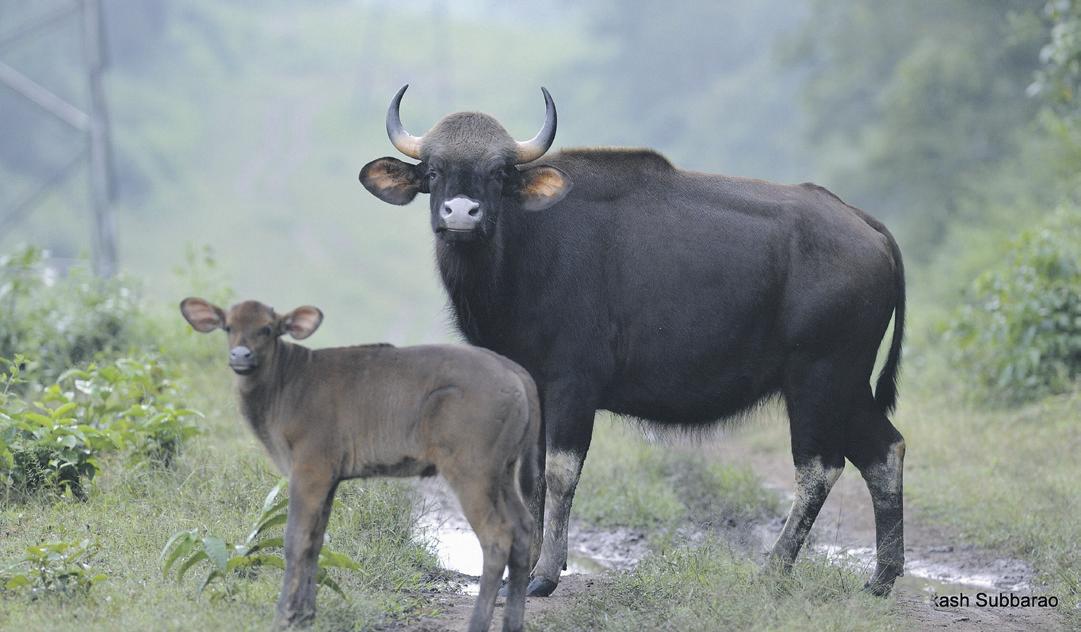

Beyond India’s bustling cities with its constantly changing skyline and demographics, lies a whole new pristine world waiting to be explored and immortalized through his lens. Armed with his camera, Subbarao heads into the wilderness for a rare and private glimpse of nature and its diverse habitat, returning home with his head full of memories and yet another album of prized photographs to be shared among his privileged circle.
Wildlife photography is not just a hobby, it is a passion that truly inspires and brings out the best in him.

True to technique
these very special escapades are his wife Anita, daughter Apoorva and of course his brother, who is no less a veteran wildlife enthusiast. “It is wonderful that my brother and I share a common passion. Invariably every night we both relax with a W&S, reviewing our best shots of the day much to the amusement of my wife and daughter, who willingly tolerate my indulgence in cameras and lenses with a strained smile,” he quips.
Reading, trekking and off-roading are his other indulgences.
An amazing experience
Subbarao’s most surreal moment has been at Nagarhole in Karnataka, “watching a herd of elephants playing peacefully in the water and mud-bathing”.
“Imagine just being in the wild,” he fondly reminisces, “amongst one of the most dangerous of creatures, yet experiencing such serenity and peace. That is the true beauty of nature at its aweinspiring best. It is an experience difficult to describe in words. The moment can only be savoured and cherished.”
First encounters with the lens
looking back on those salad days.
By this time however, he had already found a band of brothers who shared his enthusiasm for wildlife.
The group would gather well before dawn and frequently head to the forests of Nagarahole and Bandipur as well as the Ranganathittu bird sanctuary on motorcycles.
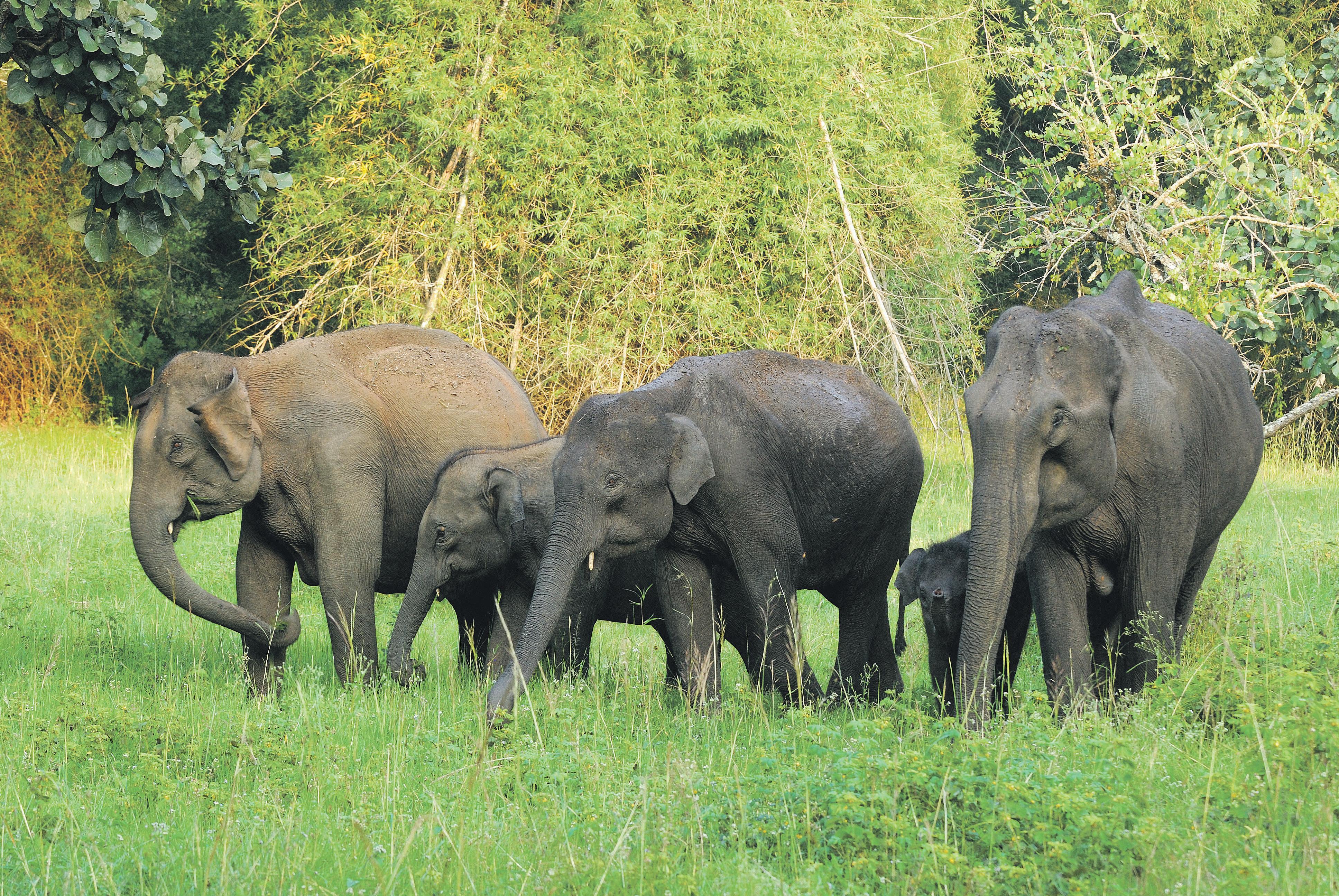

“I could imagine so many beautiful shots as missed opportunities,” he says with a touch of regret.

Guru’s gyan
Almost a decade later, Subbarao finally invested in his own camera, a 70-300 zoom lens “which brought animals and birds closer but regrettably, just not close enough”. The budding photographer would spend hours with his Guru. “He was amazing in his knowledge of line of light, composition, depth of field. It was all B&W with film, and he always told me, ‘Print if the focus is sharp, and the subject is at least 1/3 of the frame, and the composition has a meaning’. So I threw away most my beloved frames of pictures with minor flaws,” he explains.
Moving with the times, Subbarao
36 <> SEPTEMBER (2) 2011
A passion for wildlife photography brings with it as many adventures, as incredible glimpses into an amazing world of flora and fauna
wildlife photography, in particular involves a bit of chance and lots of luck as well,” reiterates Subbarao.





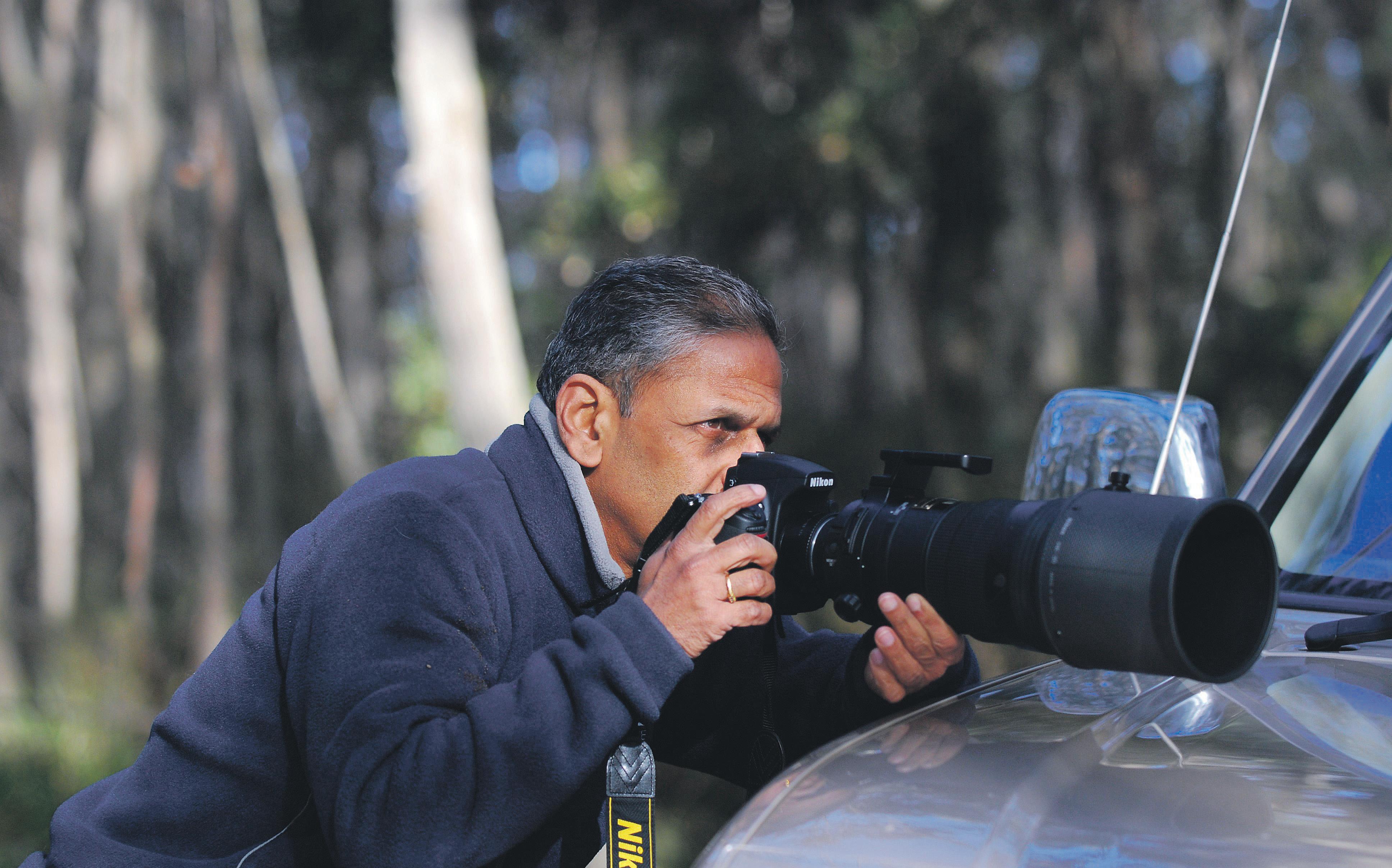
“By nature I am patient and it helps a lot in nature photography,” he adds. Caught with a camera! His three-decade long tryst with photography has taken the experienced lensman on many nature trails.
Among the experiences that are etched in Subbarao’s memory is the unforgettable expedition at Nepal’s Royal Chitwan National Park.
“We crossed the swollen Rapti in a boat to get there. We ducked, skirted past the tall undergrowth that surrounded and barricaded us. Ram, my guide, tiptoed effortlessly across the terrain, and I followed him closely and quietly. Ram led the way along a narrow trail with utmost vigilance as he watched out for any movements, faeces or fresh paw prints on the wet soil. The foliage surrounding us our left side! The best angle to compose this
metres away, slowly lifting my head and peered through my Canon viewfinder. I had this gigantic, beautiful creature in perfect sight and as I focussed, its massive horn jumped into sharp focus. I half held down my trigger, anticipating a perfect shot. Alas, the rhino suddenly lifted its head and fixed its beady eyes on me. I froze and my legs turned to jelly. It seemed as if the whole world came to a standstill. As if to break the suspense it charged straight at me and I felt like a man in the path of a ten-ton truck with a horn. The rest of the story can be left unsaid. Let’s just say it was a shot I didn’t mind missing!”
2005, Prakash Subbarao’s love affair with the untamed continues and this December once again, he hopes to renew those cherished ties.

Subbarao’s most surreal moment has been at Nagarhole in Karnataka, “watching a herd of elephants playing peacefully in the water and mudbathing”.
A purist, Subbarao believes in good aim and angle, and seldom relies on technology to improve his photographs.
Prakash Subbarao
Photos: Prakash Subbarao


38 <> SEPTEMBER (2) 2011 INDIAN LINK
A search for wholeness
In a riveting set of three novellas, veteran writer Anita Desai weaves unusual stories with compelling characters. SOURABH GUPTA reports
At the age of 74, Anita Desai’s prose and storytelling seem to have arrived at a level that only 50 years of writing can give. So her three novellas in The Artist of Disappearance (Random House India) make you want to savour the narratives and plots which few writers in English can attempt to write today.


In an interview after the book’s publication, Desai said the three stories were based on memory and past experience. This is evident in the first novella, The Museum of Final Journeys which is about an elderly civil servant narrating an incident from the 1970s, during his first posting as a sub-divisional officer in a small town in north Bengal.
The narrator, who carries the burden of his IAS father’s hope, is shamelessly prejudiced against the people he has been hired to serve. One day, an uninvited stimulation knocks on his circuit house’s door. An old caretaker from a nearby tea estate (Siliguri probably) has come to him with a long-winding story (for which the babu has no patience) and at the end of it comes an invitation to visit a bizarre museum filled with things the estate owner’s expat son used to send from across the world.
Some days later, as the stuff and a creature (kept secret till now) are unveiled room by room to the agape narrator in the dilapidated bungalow, he is trapped in this ‘real-life dream’, unable ever to escape.
The next story, Translator, Translated, is about two former schoolmates.
Prema is shy, middle-aged, unmarried and of mixed parentage (like the writer) and unwillingly teaches the works of George Elliot and Jane Austen at a girls college in Delhi (like Miranda House where Desai studied).
Tara on the contrary is now a famous publisher and has a young lover.
Prema wants to reclaim her departed mother’s bucolic Orissa through an
obscure Oriya writer she had stumbled upon - Suvarna Devi. Tara agrees to publish her translation of Devi’s book into English. Therein comes the trepidation and rapture of working on the work of a writer who had been the axis of her life, and the reclusive writer too emerges, her character partly resembling Mahasweta Devi (living with adivasis, writing about them). But the spell starts to break as Prema begins to translate Devi’s next story. She sees flaws and begins to rewrite the novel, and in the end is shamed, publicly.
“When she got home on the bus and
into its murky nicotine-tinged haze of dust with home-going traffic pouring through it like blue-black oil from a leak in the street below. The crows that spent the day swinging on the electric and telephone wires and squabbling were dropping into the scraggly branches of the lopped tree below with exhausted squawks. Would she allow herself to be dragged into the gloom by it all once again?”
The third novella, the title story, again shows Desai’s mastery over evoking nature with words, the flora and fauna of the hills above

Some days later, as the stuff and a creature (kept secret till now) are unveiled room by room to the agape narrator in the dilapidated bungalow, he is trapped in this ‘real-life dream’, unable ever to escape
There is Ravi, the boy who feels closer to plants and animals than he does to his Anglicised foster parents.
Later, Ravi, orphaned, after many years in Bombay, blooms again in that old hill bungalow. Then the house burns, but Ravi stays put, spending his days deep in the forest creating a secret miniature garden, only for himself (much like Nek Chand, who created the secret ‘rock garden’ in Chandigarh). Then one day a trio from Delhi come to make a film of ecological degradation and in the process ‘desecrate’ Ravi’s garden, who as a result retreats deeper into himself, like a scared child.
At first reading, the stories seem unalterable, as if they could not have been written in any other way, given the forces of circumstances acting on the characters.
At first reading, the stories seem unalterable, as if they could not have been written in any other way, given the forces of circumstances acting on the characters. But as the spell breaks, questions arise. Why was the IAS officer shown to be so worthless? Or why did Desai not give readers a peek into Suvarna Devi’s special prose (except for a few lines) when Desai had made her works the story’s foundation? Perhaps she wanted us to feel just as disappointed as her characters.
SEPTEMBER (2) 2011 <> 39 NATIONAL EDITION BOOKS www.indianlink.com.au
Get set for DIWALI!! Calling all kids 10 years and under. Create an art work on the theme of DIWALI. Use poster colours, paints, crayons, colour pencils or craft paper. Send in your work, on plain white A4 paper, to: Indian Link, GPO Box 108, Sydney 2001. Last date for submission 10 Oct 2011. The winning entry will be designed into Indian Link’s Diwali cards for the year 2011. For more details, ring the Indian Link office on 02 9279-2004, or email info@indianlink.com.au DIWALI
?
ART COMPETITION
•
•
•
•

Do we need a reserve bank?
Scandals concerning Australia’s primary financial institution have recently come to light, raising questions about its credibility
BY SUKRIT SABHLOK
The Reserve Bank of Australia has been in the news recently, thanks to a corruption scandal splashed across the front pages of newspapers throughout the country. According to reports, two currency firms overseen by the Reserve Bank funnelled bribes to government officials in Indonesia, Malaysia and Vietnam, to win banknote deals. Securency and Note Printing Australia are partly and wholly owned (respectively) by the RBA, and many prominent political figures sat on the boards of the two companies.
This scandal, however, is just the tip of the iceberg. Other aspects of the RBA are equally shady, but are rarely exposed to public scrutiny. A new book by investor Chris Leithner, The Evil Princes of Martin Place: The Reserve Bank of Australia, the Global Financial Crisis and the Threat to Australians’ Liberty and Prosperity, documents in detail the nefarious schemes of Australia’s central bank.
Leithner is an adherent of the Austrian School of Economics, which argues that central banks are behind the boom-bust cycle that characterises modern economies. They are, in other words, the culprit responsible for recessions and depressions. By controlling the overnight cash rate (the rate at which banks borrow from the central bank), the Reserve Bank is able to control the money supply and thereby influence interest rates. This sets in motion a process that influences the rate of interest on housing loans, deposits and business loans.
When interest rates are kept artificially low, distortions in the structure of production, excessive borrowing and speculation are the result. The central bank’s loose money policies mislead investors into starting projects that appear profitable, but in hindsight are not. The crash comes because investors foolishly think that the boom will last, and leverage themselves too highly, as they were not prudent in their accumulation of debt.
This, in a nutshell, is the Austrian theory of the business cycle. According to this view, economic downturns are the price paid for prior (artificial) credit expansion.
We find evidence of this in the United States, when the Chairman of the Federal Reserve –

Alan Greenspan – kept the federal funds rate at an absurdly low 1% from June 2003 till June 2004. Many attribute the resulting housing bubble to Greenspan’s suppression of rates.
In Australia, Leithner shows that the RBA also started an artificial boom. Leithner shows that from 1991-2007, the money supply rose rapidly. By Leithner’s reckoning, inflation (the M1 measure) increased by 404%, at an annualised compound rate of 10.2%. As in the US, much of the credit created by the Reserve Bank was pumped into the housing market, creating an asset price bubble. Stock prices were inflated.
For Leithner, however, the bust has not yet arrived – hence the reason why the Australian recession was not as severe as its American counterpart. Australian house prices remain overvalued and have not dropped to more realistic levels.
The role played by central banks in fostering monetary instability leads Leithner to question whether we need a central bank at all. It’s not a crazy question! For much of Australia’s history, there was no central bank. Private banks issued currencies and there was little government regulation of the banking sector.
In an environment of global financial instability that many argue is caused by central banking, it is worth asking serious questions about these institutions. Most central banks are highly secretive about their activities. For instance, the Reserve Bank did not even publish minutes of board meetings until December 2007.
There is a fundamental democratic principle involved here. Why should central banks, which are staffed by unelected bureaucrats, wield such a high level of discretionary power? Shouldn’t there be more democratic oversight of these money mandarins who have so much influence over our living standards?
We have seen what happens when central banks are left unchecked. In Zimbabwe, for example, hyperinflation has crippled the purchasing power of the currency. Prices in the African country rise at an extremely rapid pace, over 50% per month. Nobody is suggesting that a catastrophe of that nature is likely to befall Australia. But Zimbabwe is a reminder of the awesome power that central bankers wield, and should prompt us to improve accountability and search for less discretionary ways to manage money and banking.

40 <> SEPTEMBER (2) 2011 INDIAN LINK Mention this ad when booking and receive a discounted price of $160 perweek (Normally $200 perweek) IELTS Professional Get the IELTS score you need! navitasenglish.com English
Professional is for students wishing to increase their IELTS score for entry into Australian universities or colleges or those looking to achieve 7.0 for migration purposes.
IELTS
Evening course: 6pm – 8pm Monday to Thursday, perfect for those working or studying in the day.
New class starts every Monday.
Centrally located at Navitas English* (next to Wynyard Station).
Highly reputable institution with outstanding record in IELTS success –in both general and academic IELTS tests.
Professional is only offered at the Navitas English Sydney Campus. Please contact english@navitas.com or call (02) 82466800 to enrol today. Courses in NSW will be delivered by Navitas English (Navitas English Services Pty Ltd ACN 002 069 730) CRICOS Provider 00289M NAVE0166_IELTS_Pro_PressAd_180x130_AW.indd 1 12/08/11 10:31 AM OPINION
*IELTS
In Australia, Leithner shows that the RBA also started an artificial boom. Leithner shows that from 1991-2007, the money supply rose rapidly
In an environment of global financial instability that many argue is caused by central banking, it is worth asking serious questions about these institutions.
A lopsided relationship
More attempts must be made at a reciprocal relationship between India and Australia, in trading goods and services
BY NOEL G DE SOUZA
Historically, India and Australia were almost tailor-made to have strong bonds: being members of the Commonwealth of Nations, having a strong English-speaking base, Westminster-style democracy and legal systems, freedom of speech, secular ideals and both being intensely cricket loving. Despite these commonalities, the relationship has been on uncertain grounds ever since India’s independence in 1947.
In the early period of India’s independence, Australia leaned towards Pakistan as the latter chose to join Western defence pacts whilst India preferred neutrality which was interpreted, quite erroneously, as leaning towards Russia and China.
India had the misfortune of getting the worst by way of media and text book coverage in Australia. Whenever examples were needed about the so-called Third World poverty and malnourishment it was India which was chosen, as if the country was the only, or even the worst, example. Pakistan went scotfree as it was ignored. A very recent example of this sort of thinking is the campaign against corruption in India. The impression created is that India is exceptional for sizeable corruption and that it is the worst in the world. Neither of this is true.
In the late 1950s China changed its policies and forged strong bonds with Pakistan, which it still nurtures. In 1972, Pakistan provided a gobetween role to foster a new China-USA relationship. Meanwhile, China’s bonds with the USA have kept growing, though difficulties remain to be resolved such as the artificially low Chinese currency. This country has moved from once being a threat (the “yellow peril”), to being an economic saviour for Australia, even though this shift towards China is destroying Australian manufacturing industries.
attended either ceremony. British royals also attending several other meetings including those by business groups.
This Australian non-participation was incomprehensible given that India has become an important importer of Australian goods and services. Moreover a large number of Indians have settled in Australia. An important symbolic opportunity to forge good relations with India was thrown away. Such opportunities rarely come.
The sorest point in the India-Australia relationship is the refusal by the Australian government to sell uranium ore to India for its growing atomic power plants. This is again incomprehensible, as Australia sells uranium ores to Russia and China.
India’s main imports from Australia are minerals. Coal is the biggest item, then gold, copper and crude petroleum. According to the last available figures, these items in total accounted for A$ 14.38 billion annually, whilst imports from India were worth only A$ 2 billion. These were mostly manufactured goods such as rotating electric plants and parts, iron, steel, aluminum and base metal items, pearls, gems and jewellery, textiles, garments, medications and tea.
A great imbalance exists in IndianAustralian trade. Whilst Australia is the fifth biggest exporter to India, Australia is the twenty-ninth receiver of Indian exports. The gap between the value of exports to India and imports from there is just too great. A similar situation exists with regard to services.
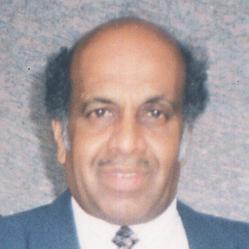

The Australian Department of Foreign Affairs and Trade (DFAT) states that Australia exported A$ 3.154 billion worth of services to India and in turn imported only A$ 660 million worth of services from India.
One hears a lot of noise on talkback radio that India is taking away Australian jobs such as in computing and call centre services. This is far from the reality. The Australian Department of Foreign Affairs and Trade (DFAT) states that Australia exported A$ 3.154 billion worth of services to India and in turn imported only A$ 660 million worth of services from India.
That Australia has been leaning towards China in contrast to India, is best seen in the Australian presence or absence at the two recent major sporting events hosted by these two Asian nations. Top Australian dignitaries attended the Chinese-hosted Olympic Games. Also, every encouragement was given by the Australian Government for Australian athletes and visitors to do so.
It was the opposite story when it came to the Indian-hosted Commonwealth Games. Preceding the Indian Commonwealth Games, Australian travel advisories were replete with caution and attendance by athletes and visitors was thus discouraged. This was in stark contrast to the British position. Several British royals graced the opening and closing ceremonies. No top Australian dignitary
There have been several trade delegations to India. The most recent is that of the South Australian Premier Mike Rann. The NSW Premier Barry O’Farrell is scheduled to go there in a few weeks. All this is heartening as it recognises India’s new found economic strength. New bonds are being forged. However, whilst there is talk about what these states can sell to India, not much is heard about what can be bought from India. Reciprocity is needed.
The Indian Prime Minister Manmohan Singh has pulled out of the forthcoming Commonwealth Heads of Government Meeting (CHOGM) in Perth. Given the pressures of politics at this time in India, this is understandable. India will be represented by its Vice-President Hamid Ansari, who undoubtedly is a high-level delegate. May that meeting forge better Indian-Australian ties.
SEPTEMBER (2) 2011 <> 41 NATIONAL EDITION
www.indianlink.com.au
Taking the time
BY SAROJA SRINIVASAN
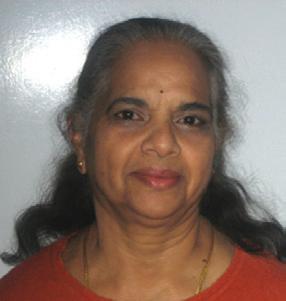
An oft bemoaned statement in modern times is that one does not have ‘any time’ any more to do what they would like to do. Time seems to speeding headlong into what? Many activities, including work, relationships with both family and friends, seem to become ‘meaningless’ as many complain about the lack of time. Yet if one looks at the lifestyle of these individuals who make these statements, one cannot but notice the superficiality of everything that is attempted. Many activities are abandoned for want of time; yet there is always time for many other trivial ones to be attempted. There seems to be no attempt to sincerely reflect on what they would like their life to be.
Truths about time
There are indeed two facets to time. One is the conventional everyday time. The construct wherein man has divided the interval between the natural phenomena of sunrise and sunset, the seasons, darkness and daylight into tangible measures such as seconds, minutes, days, weeks and years. The other is the
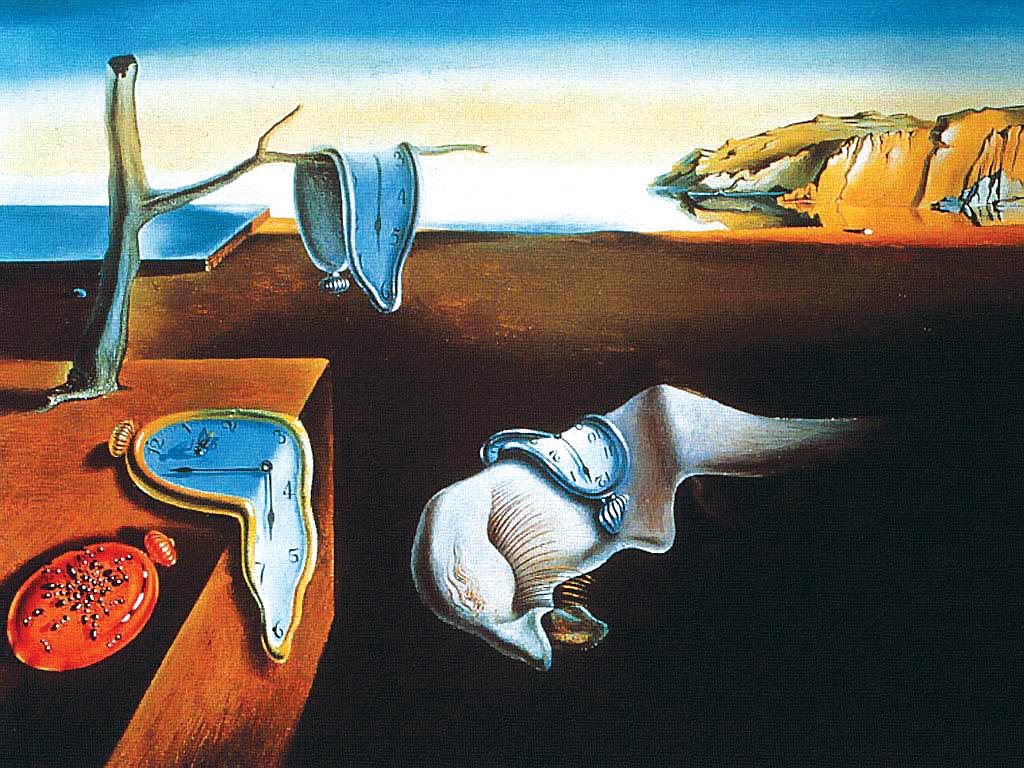
limitless cosmic time with neither beginning nor end. This is such a different construct that we do not have words to describe it. It is experiential. Some may say we do not have a positive experience of this cosmic time to describe it in conventional words. The closest we can come to a description is to say what it is not - ‘it is not conventional time’. This is a construct so alien to many that they may not be able to comprehend it at all. Most then, are quite content to stay with conventional, tangible time. Even so, the ephemeral time is often experienced when we talk of things ‘taking time to heal’ as in the context when there is loss of a loved one.
Clear the clutter
This lack of time to truly reflect on what may be the more important aspects of our existence, often results in the flitting away of valuable time on needless ventures. So, what tangible finite time we have is squandered on chasing elusive goals that may not be all that satisfying. It seems imperative that just as we clear the gardens of our homes of weeds, that our mind-garden also needs to be periodically cleared of ‘unwanted weeds’. We need to rid our minds of the inner space junk that accumulates over the years. Otherwise, we have a mind that is too blocked up with irrelevant information, a lot of trivia, and
the truly worthwhile thoughts are unable to obtain the nourishment they need due to lack of time.
Smell the roses
Time is needed to enter solitude. Solitude is not isolation or withdrawal, but the opportunity to discover and accept our individual uniqueness. This produces a sense of growth which in turn enriches and gives the enthusiasm to meet all of life’s challenges with a smile, and make of life all that we want it to be. Taking the time to regain the capacity to contemplate and appreciate the ravishing beauty of creation around us infuses the long lost love for life that is so badly hidden in all the hustle and bustle of modern life. Enjoying the beauty of nature is an experience, something that is to be tasted, rather than described. If we take the time to experience the true beauty of our existence in all its true glory, the reward will be far greater than we ever imagined. As J Krishnamurthy once said “We need time for the time-less to be”.
It seems imperative that just as we clear the gardens of our homes of weeds, that our mindgarden also needs to be periodically cleared of ‘unwanted weeds’
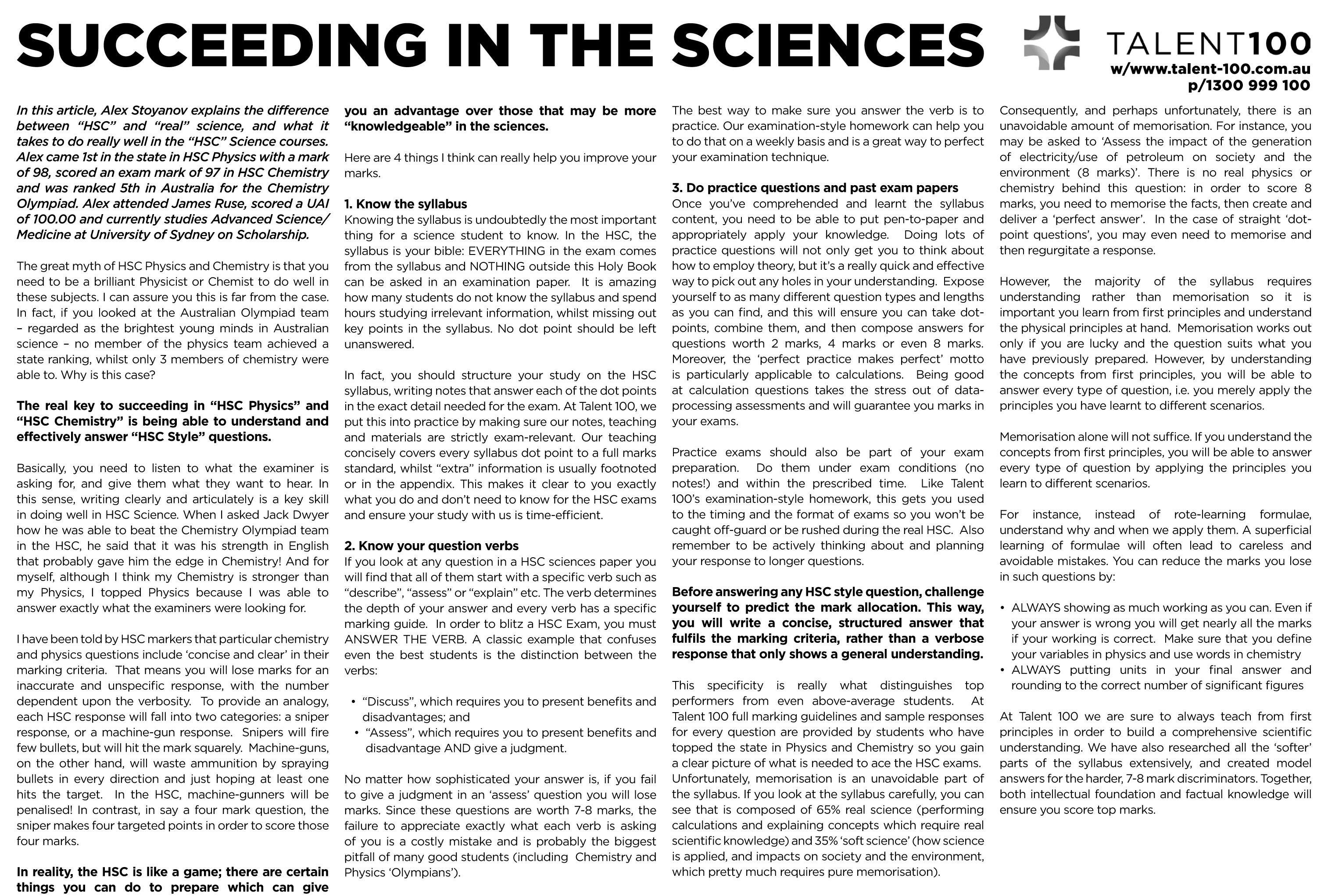
42 <> SEPTEMBER (2) 2011 INDIAN LINK
www.indianlink.com.au
PSYCHE
Salvador Dali’s ‘soft watches’ debunk the assumption that time is rigid or deterministic. In The Persistence ofMemory (1931), melting watches rest in an eerily calm landscape. In this other dimension, time is of no relevance.
Through the hustle and bustle of modern life, it’s important to prioritise activities that improve one’s life
The gift of life
There is a strong case for organ donation, a true and selfless gift to the living in need
 BY MALLI IYER
BY MALLI IYER
Daan is an act of selfless giving. Jeevan Daan is a “gift of life”. Organ donation may be defined as taking healthy organs and tissues from one person for transplantation into another. The organs that can be donated include: internal organs such as the kidneys, heart, liver, pancreas, intestines, lungs; bone and bone marrow; skin, cornea (eye); donation of tissues such as heart valves, bone tissue, skin, eye and pancreas tissue.
The Bhagawad Gita (Chapter 2.25) clearly suggests that we should not ‘grieve for the body’ which has a preordained time and date of expiry, after which it has no use and must be disposed of. The obvious message is that if there are ways in which the unused body and its parts can be available to provide or renew life elsewhere, it would tantamount to a ‘gift of life’ to another human being.

Facts and figures
All religions prevalent in India do not prevent the donation of body parts. Sikhism, Buddhism, Christianity and Islam propagate the nobility of saving lives by virtuous deeds of those who value life. Yet the facts and statistics provide clear evidence of a very poor record of organ/cadaver donation by India and Indians – a minuscule 0.05 per million of population. It compares unfavourably with 14 per million organ donations in Australia and 25 per million in the United States of America. In India, the Transplantation of Human Organs Act was passed in 1994, but it has not narrowed the gap between demand and supply of donated organs. 96% of Australians agree that an organ and tissue donation has the potential to save lives, but only 60% of the families give consent for donation to proceed. By State, New South Wales lags behind the rest of Australia for the rate per million, as per recent statistics from the Donor Registry.
A desperate need
Given that the demand for donated organs is likely to grow due to an increasing incidence of obesity and lifestyle diseases like Diabetes Type 2, organ donation must become an altruistic, egalitarian and essentially moral act to enable the supply of donated organs to be abundant to meet the needs of the future. Australia is a classic case because it has a world-class reputation of successful transplant outcomes. Recent advances in medicine and surgery have undoubtedly served to create awareness amongst the masses that many more lives can be saved by organ transplants, but there is a severe shortage of donors. There is a crying need to remove the myths and misconceptions associated with organ donations by the living, as much as by those who are dead (known as cadaver donations). Since sustenance of organ transplants cannot succeed without majority participation and support of the community, it is important to explore all avenues and remove stumbling blocks so that budding donors feel at ease when making a decisionto donate.
The obvious message is that if there are ways in which the unused body and its parts can be available to provide or renew life elsewhere, it would tantamount to a ‘gift of life’ to another human being.
Mythbusting
Some of the myths listed below have a corresponding reality check, of which we need to be aware:
Myth: “It is against my religion”
Reality: In addition to religious beliefs listed above in India, Judaism, Catholicism and Protestantism have thrown their faith behind freedom of organ donation.
Myth: “I am too old to donate”
Reality: There is no age bar to donating organs. Even people in their late 70s and 80s are suitable, if they meet the medical criteria. Let doctors decide suitability if you are willing to give someone a gift of life.
Myth: “Where is the guarantee that my donation will go to people who need it the most”
Reality: The rich and famous are not given any priority when allocating organs. An organ donor register is maintained by qualified professionals, and Australia has strict ethical guidelines about allocation of organs and tissue.
Myth: “Minority communities are discriminated against due to racial considerations”
Reality: Organs are matched by several factors such as blood group and tissue typing, but racial considerations are strictly ruled out.
Myth: “I am an organ recipient, can I be a donor?”
Reality: Organ recipients may not be tissue donors due to the immunosuppressive drugs that are administered, but the eligibility of donating healthy organs is decided by the medical team.
Currently there are approximately 2,000 people on transplant waiting lists around Australia, and hundreds of people die each year while waiting for an organ transplant
Myth: “I don’t wish to tell my family about my willingness, instead I will write it in my will”
Reality: By the time the will is read, it will be too late to recover any organs. It is best to discuss and agree with the family and registering as a donor if your wish needs to be carried out properly.
Myth: “If I register to donate my eyes only, will they take any other healthy organs as well?”
Reality: You may specify which organs you want donated. Your wishes will be complied with.

Myth: “If I agree to be an organ donor, wouldn’t the doctors be in a haste to remove my organs without taking the best measures to prolong my life, since organs are in short supply?”
Reality: When you go to the hospital, doctors are focussed on giving you the best treatment. The transplantation group of doctors usually has nothing to do with removal of healthy organs as this job is assigned to a specialist doctor who matches your organ donated to a particular need with the medical
characteristics of your organ.
Myth: “If I become a donor, would my body be mutilated to prevent normal life thereafter?”
Reality: Most eligible donors are able to carry on with their normal life, without any outward manifestation of the removed organ. Organs removed immediately after death do not show any outward signs of removal and a normal funeral is usually possible.
You may still become a donor if you smoke, wear glasses, drink alcohol or regularly take medication.
Why should I donate ?
One organ and tissue donor could help save and improve the quality of life of up to 10 people. Organ transplants transform lives and are the best possible treatment for people with organ failure. Currently there are approximately 2,000 people on transplant waiting lists around Australia, and hundreds of people die each year while waiting for an organ transplant. Kidney failure can mean up to eight hours a day on a dialysis machine, heart or lung failure can leave people struggling to walk and especially with liver failure, the patient is tired, bloated and could develop jaundice. Another important reason to think about donation and make your decision known is because less than 1% of people die in such a way that organ donation is medically possible. One of the main reasons families say ‘no’ is because they are unaware of their loved one’s wishes. Still, too few people think about donation or discuss it with their partner, family or friends. A simple discussion about your decision could mean ten lives could be dramatically changed.
India celebrated its first organ donation day in November 2010 to create awareness among its people. The country now recognizes the concept of brain death which makes it possible to donate the organs of brain dead donors as per the Transplantation Act, 1994. The Indian diaspora in Australia have never openly debated this issue, but it is commendable that the Sydney-based Indian Welfare Association with the cooperation of the Australian Government is soon bringing together the Indian community at a forum where medical experts and senior officials of the Organ and Tissue Authority will speak and address the concerns of the audience.
It is to be hoped that the efforts of Indian Welfare Association will create new thinking and open a vista for organ donation.
SEPTEMBER (2) 2011 <> 43 NATIONAL EDITION PSYCHE www.indianlink.com.au
Out of Africa
A national park within the city offers a delightful contrast between the best of wildlife seen in an urban jungle
 BY SANDIP HOR
BY SANDIP HOR

“I had a farm in Africa, at the foot of the Ngong Hills”, wrote celebrated Danish author Karen Blixen in her 1937 masterpiece Out of Africa. It is an autobiographical-style account of her personal life at the coffee plantation in outskirts of Nairobi in Kenya, where she lived for almost two decades in the early 20th century.
Many have read the novel, but the 1985 Oscar winning film of the same name was more popular, with Karen Blixen immortalized by Meryl Streep.
Reel reality
The success of the film was so intense, that the house she lived in within the plantation became an extremely popular destination for people keen on knowing more about Karen and her life in Kenya. So in 1986, the Kenyan Government converted it to a national museum and since then it ranks at the top of any itinerary to Nairobi, mine being surely no exception to the rule.
With red-tiled roof and wide verandas, the bungalow, set on 6000 acres of land exhibits original furnishings, some of Karen’s personal belongings and props from the film. A guide takes us around the clutch of rooms and recounts interesting stories about Karen’s marriage, divorce and subsequent love affair with an English game pilot, portrayed in the movie by Robert Redford. Her square-corner bedroom is at the end of a narrow wall, where a pair of leather riding boots stand near a chair next to the white wooden bed swathed with mosquito netting. “The boots are Meryl Streep’s,” says our guide. The tour offers a good insight into the privileged lives of white settlers, and the only disappointment I sniff from visitors is that Karen in her photograph doesn’t appear as attractive as the Hollywood actress!

History of Nairobi
Karen moved to Nairobi in 1914, when the city was going through its infancy as the capital of British East Africa.
Originally an isolated swamp with a humble settlement of rickety shacks, Nairobi began to attract European traders and white settlers towards the late 18th century when a rail link with the coastal city of Mombasa was established.
Wealth then began to flow into this new city. Grand colonial hotels like the Stanley and Norfolk were built to accommodate
the first tourists to the region - mainly the big game hunters, lured by the attraction of shooting the area’s almost naievely tame wildlife. It’s said that there was even a special chair on the front of the train to enable visiting dignitaries to bag lions and elephants on the trip.
More than a city
I gather lots of interesting information on the construction of the 536 milelong railway, referred in African colonial chronicles as the Ugandan Railway, as well on the nation’s ancient history by visiting the Nairobi Railway Museum and Nairobi National Museum, both located close to modern Nairobi’s city centre, packed with government buildings, office blocks, large hotels, including Stanley and Norfolk, and shopping malls - like any other capital city.
The touristy highlights of this downtown area are the Jamia Mosque, the nation’s leading religious monument featuring twin minarets and gleaming silver domes and the City Market, bustling with shops selling quality curios and tribal artefacts. It is a great place to rub shoulders with the locals to try speaking to them in their native Swahali, if you have picked up some from the guidebooks.
With 2.5 million inhabitants, Nairobi strikes me as a city of contrasts with its wealthiest citizens living in luxury mansions not far from Kibera, the largest slum in Africa and home to one-third of the city’s population. Crime is endemic (some describe Nairobi as Nai-robbery), but the government is active to minimise its intensity, particularly in tourist-infested areas.
From a traveller’s perspective, the cosmopolitan metropolis unfortunately doesn’t offer much to justify a visit by itself, but has enough to fill in time when stopping over, en route to Kenya’s reputed national parks for wild life safaris.
Giraffes are grand
In fact, a visit to Rothschild Giraffe Centre and the Nairobi National Park, prepares first-time safari-goers for the grand wildlife spectacle to be encountered when going into the bush.
Before visiting the Giraffe Centre I didn’t know that there are nine varieties of the world’s tallest land mammal, Rothschild being just one of them. Recognised by their white legs, these endangered species are found only in East Africa. This centre, located just outside the city centre, was set up in 1983 to protect and grow the species. Arriving there, I found quite a few of them loitering in the surrounding ground dotted

44 <> SEPTEMBER (2) 2011 INDIAN LINK
TRAVEL
1 2 3
with acacia trees, the leaves of which are the animal’s staple food. You can touch and feed them when they come near the raised observation platform, something you cannot do when in actual safari. I observe some locals getting their faces licked by the animals. To me its yuk! and bizarre, but I am told the saliva of giraffe is highly antiseptic and is used to heal wounds.

Perhaps there is no other capital city on earth where you can see a giraffe or a zebra stalking through the grass against a backdrop of city skyscrapers. However, the 117 square km national park, almost
The tour offers a good insight into the privileged lives of white settlers, and the only disappointment I sniff from visitors is that Karen in her photograph doesn’t appear as attractive as the Hollywood
www.indianlink.com.au
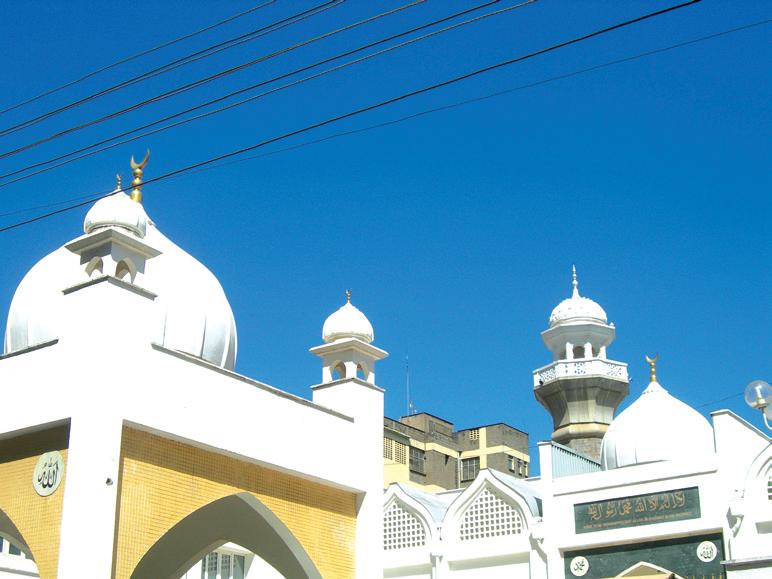
in the heart of Nairobi, provides that rare opportunity. Characterised by open grassy plains, the nation’s first wildlife sanctuary is home to over 80 game and 400 bird species, and is great for folk in Nairobi to savour wildlife without even leaving the city.
Kenya has a long, long association with India. The first Indians arrived on East African shores as indentured labours for building the railway, and the ones survived the heat and dust never went back. They made Africa their home. They are part and parcel of Kenya’s society and economy as many of the businesses, such as the hospitality industry, are dominated by them. Their presence is dispersed throughout Nairobi, where you will find women dressed in saalwar-kameez, smell the aroma of biryani in the air, sniff whiffs of hot jalebi sizzling in sugar syrup, meet chaatwallahs dishing out yummy bhelpuri and overhear the latest Bollywood gossip among the youngsters.
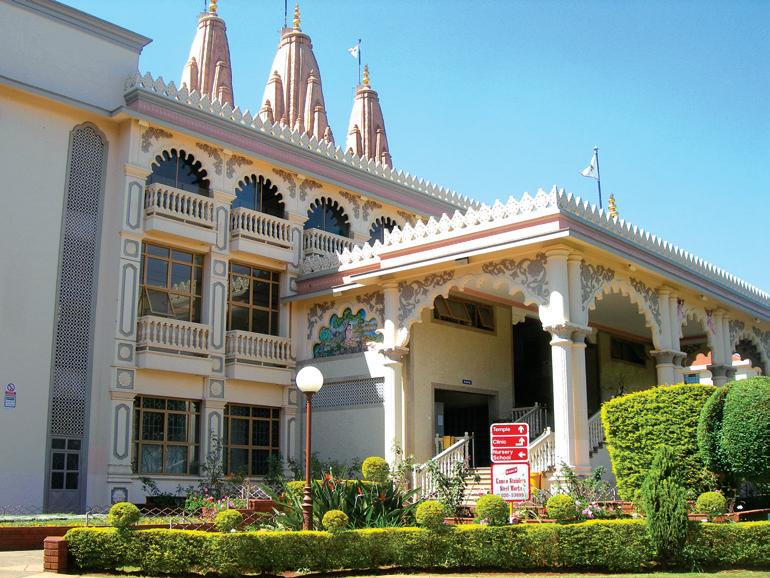
Characterised by open grassy plains, the nation’s first wildlife sanctuary is home to over 80 game and 400 bird species, and is great for folk in Nairobi to savour wildlife without even leaving the city.
7
Travel notebook
NAIROBI
GETTING THERE:
South African Airways (www.flysaa.com) have flights from Sydney and Perth to Nairobi, via Johannesburg. There are flights from Johannesburg to Mumbai, so a feasible option to tour Kenya can be en-route to India as well.
ACCOMMODATION:
The opulent Stanley and Norfolk is still there amongst several others; Nairobi Safari Club (www.nairobisafariclub.com) is conveniently located in the city centre and offers value for money.

TOUR OPERATOR:
Contact Sydney-based Wildlife Safari Consultants (Ph: 0418443494) for all your travel arrangements in Kenya
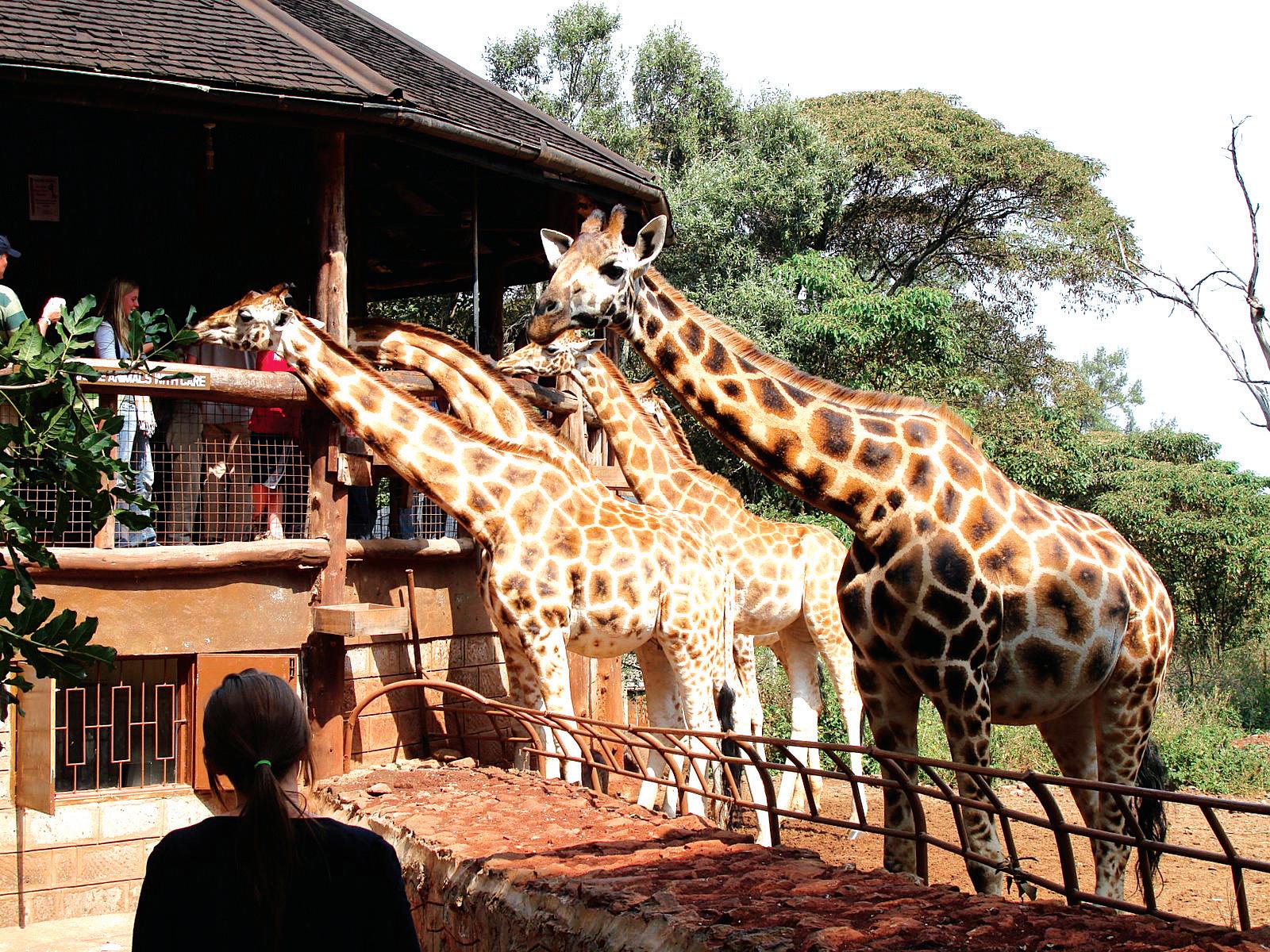
VISA:
All Australian passport holders require a visa to enter Kenya, which is available upon arrival
CURRENCY : Kenyan Shilling KES, 1AUD = 95 KES
SEPTEMBER (2) 2011 <> 45 NATIONAL EDITION
1) Remedial kiss
2) Zebra crossing at Nairobi National Park
3) Karen Blixen’s home
4) Norfolk hotel
5) Jamia mosque
6) Nairobi Hindu temple
4 5 6
7) Giraffe centre
Are you looking to invest in property?
Investing in property is not always about purchasing with the lowest price, and hoping for the property value to boost through the roof. If you’ve heard of the National Rental Affordability Scheme, then you definitely know that NRAS property is the sought after property type in the market now! So just exactly what is NRAS? And what are the benefits for investors?
Here are some frequent asked questions about NRAS to help you understand more of it.

1. What is the National Rental Affordability Scheme (N.R.A.S)?
The NRAS was created by the Government to address the shortage of rental housing and rapidly rising rents, by offering a National Rental Incentive to providers of new dwellings, on the condition that they are rented to eligible low and moderate income households for at least 20 per cent below-market rates for a 10 year period.
2. How does NRAS work?
NRAS provides an annual tax-free incentive, to the business sector and community groups (‘Approved Participants’) who build and rent dwellings to low and moderate income households at a rate that is at least 20%
below the prevailing market rate.
3. How is the National Rental ‘Incentive’ funded?
The ‘Incentive’ has two parts:
• An Australian Government contribution in the form of a ‘Refundable Tax Offset’ or payment (indexed annually).

• A State Government contribution (indexed annually) in the form of direct financial support.

At present the total government NRAS incentive is $9524 (tax free) per year for each dwelling. Each year the tax free incentive is indexed with the rental component of CPI.
4. Can a private investor become involved in NRAS?
Yes! Individual investors can now participate in NRAS by purchasing an investment property that is NRAS approved with one of the large-scale NRAS Approved Participants. Investors who want to receive the NRAS tax-free incentives, must enter into an agreement with an ‘Approved Participant’ and pass limited control of their property to the Approved Participant (for property management & government compliance).
5. Who then owns the NRAS property?
At all times the investment property in the NRAS remains private property, and is owned 100% by the investor. No government holds caveats or claims over the property.
6. How long must a property be in NRAS for?
10 years.
7. What happens at the end of the 10 years?
At the end of the NRAS 10-year period, the property reverts to full control of the investor. The property is no longer part of NRAS and the rent is no longer required to stay below market rates.
8. Who can rent an NRAS dwelling?
NRAS aims to provide affordable rental housing for the nation’s critical infrastructure workforce, such as teachers, nurses, police officers and paramedics, as well as other low to moderate income earners.
9. Can investors have a say over who the tenants will be?
Yes! Investors in consultation with their property managers, decide who the tenants will be for the NRAS property. All tenants must meet the government
specified income limits, and other NRAS tenant criteria.
10. What is a Refundable Tax Offset?
The NRAS tax offset is a refundable tax offset, meaning it can reduce tax liability below zero, to produce an amount refundable. This means you receive the full amount of the refund, regardless of how much, or how little, tax you are paying.
11. Are all the fees tax deductible? All of the property management fees and costs as with a normal investment property are fully tax deductible. Would $100,000 TAX FREE incentive make a difference to you? Would you like to find out if you are an approved investor for NRAS properties? If you would like to find out more information, contact Ironfish today and book for a free personal strategic analysis. Call 02 8668 8399 or email sydneyseminar@ironfish.com.au
www.ironfish.com.au

46 <> SEPTEMBER (2) 2011 INDIAN LINK Dr CHANDRIKA SUBRAMANIYAN Solicitor & Barrister Supreme court of NSW Migration Agent # 0534196 Nominee 2009 Justice Award Law and Justice Foundation Nominee 2011 Woman Lawyer of the year in a community CRIMINAL BIG or SMALL PROPERTY BUY SELL LEASE BUSINESS & FRANCHISE AGREEMENTS FAMILY DIVORCE CHILDREN AVO WILLS & PROBATES EMPLOYMENT ALL COURT WORK, OUT of COURT MIGRATION (02) 9633 5019 | 0433 099 000
Exquisite Eid indulgences
These special dishes can be cooked to honour any celebration, to bring a touch of festivity to the occasion
Haleem
BY SHAFEEN MUSTAQ
In our household, Eid is synonymous with food. Mouth-watering delicacies created by my mum based on family recipes and her most recent inventions. The festival of Eid ul Fitr marks the end of Ramadan the month of fasting, and is celebrated by Muslims across the world. In most households across the world the spirit of Eid manifests itself in the sublime flavour of food.
Scrumptious dishes are cooked and distributed among friends, families and relatives on Eid ul Fitr. These delicacies are prepared using methods handed down from mother to daughter (or son!) and special care is taken to prepare each dish with love. Here are some traditional recipes whose ingredients are easily available and don’t require exhaustive preparations. My Eid was made memorable with these recipes which you can try at home for any occasion, or no occasion at all!
Qamar el deen
Another Middle Eastern special for Ramadan or Eid is apricot juice or Qamar el deen. Quick and easy to make, this cool drink is a soothing accompaniment to spicy dishes.

½ dried apricot paste sheet (about 10cm x 20cm)
– 4 cups hot water
_ 4 tbsp sugar
_ 1 tbsp rose or blossom essence (optional)
In a large jug or bowl, cut the dried apricot sheet into small pieces and dissolve well in hot water. Add sugar, stir until dissolved then add blossom water. Chill and serve cold with dates or fresh apricot purée. Add
Nawabi Biryani
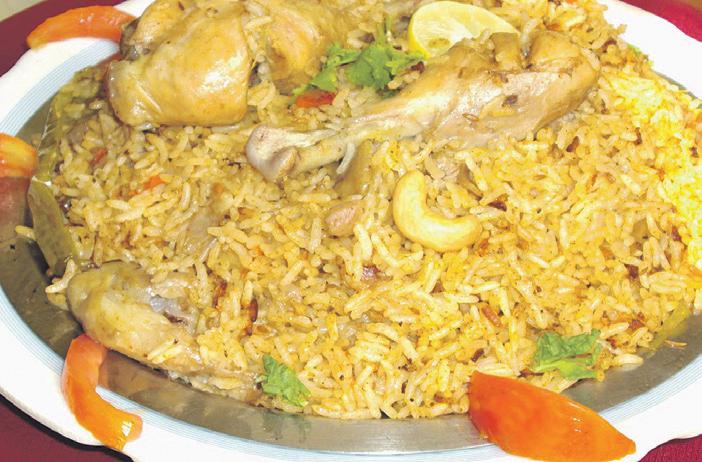
Haleem is a dish that is very popular amongst the Muslim community of north India, Pakistan and Persia. It is especially prepared in Muslim countries during Ramadan and Moharram months, and relished by all. In general, Haleem is sold as a snack in the markets and also cooked at Muslim weddings, as a starter.
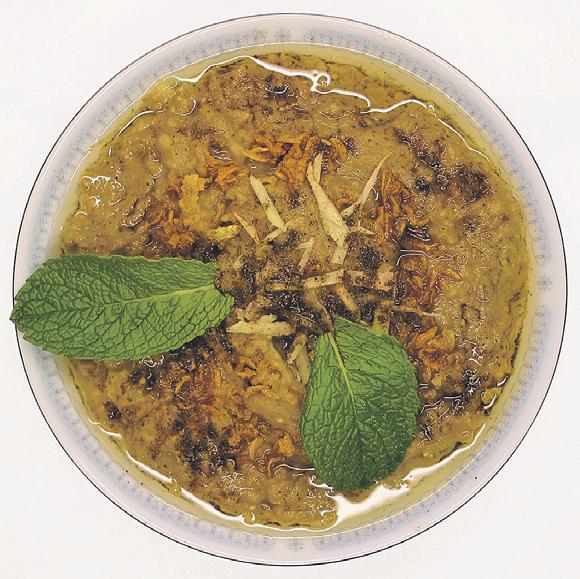
– 150 gm dried yellow split peas
– 115 gm lentils
– 80 gm oatmeal
– 750 gm lamb chop
– 2 tbsp corn starch
– 4 tsp jeera (cumin)
– 1 large onion
– 4 tsp garam masala
– 3 tbsp Ajinomoto
– Shallot for garnishing
– Lemon slices for garnishing
– Salt and pepper, according to taste
– A bunch of finely chopped green coriander for garnishing
– 2 litres water
Place the split peas, lentils in a vessel, add salt and bring to a boil. Next, cook for 30 minutes until the mix takes on a dal-like quality. Cut the lamb into cubes and marinate with salt, pepper, corn starch and ajinomoto. Chop the onion finely and fry in a Chinese wok. Add the lamb. Cook the meat for a few minutes, until all its water is evaporated, and then add the masala and jeera. When the dal is ready, add the lamb and 2 litres of water to it, and cook for 30 minutes, in a pressure cooker. When done, let the cooker cool. Dilute the oats in a glass of water, open the cooker and add to the mix to thicken. Bring it to a boil again, until it thickens into a nice soup. Serve hot and garnish with chopped shallots, coriander and lemon slices. You can also chop up some ginger and fresh chillies and serve as condiments to this dish.
Knafeh
Moving out of the comfort zone of subcontinental food, Eid in Sydney is incomplete without Lebanese sweets. We all know and love baklava, but knafeh is a traditional dessert which is very popular in Lebanon, Syrian and Jordan, and is ubiquitous through the year but especially on special occasions like Eid. The word ‘knafeh’ is usually followed by ‘nabulsiyeh’, which indicates the city of its origin.
– 1 package of shredded fillo dough
– 225 gm of melted butter
– 900 gm ricotta cheese
– 1/2 cup pine nuts
– 1/2 cup minced pistachio
– 3 cups sugar
– 1 tsp lemon juice
– ½ cup water
Seviyan
Seviyan is an immensely popular sweet dish made from vermicelli and milk. It is not only cooked on the special occasion of Eid ul Fitr, but also as a dessert after a regular meal. It is equally popular among Hindus and Muslims, and has a rich sweet taste. Seviyan can be very easily cooked with the least effort and is a staple dish for Eid in my household.


Eid isn’t Eid at my house without my Mum’s signature
Nawabi biryani, a special dish made on this festive occasion. This non-vegetarian dish is made by using liberal amount of raisins, and is called ‘Nawabi’ precisely for this reason. Try it at home and enjoy the relishing and exquisite taste of this delectable dish.
– 325 gms Basmati rice
– 1/2 kg mutton, cut into cubes
– 3 onions finely sliced
– 1/2 tbsp ginger-garlic paste
– 1 tsp garam masala
– 3 small-sized red chillies
– 1 piece cinnamon
– 1/2 cup beaten curd
– 3 green cardamom
– 5 peppercorns
– 5 cloves
– 1/2 tsp shahijeera

– 1/2 tsp turmeric powder
– 1/4 cup milk, with saffron
– 1 pinch chopped coriander/pudina (mint)
– 5 dried jardalu (apricots)
– ½ cup dry fruits (raisins, sultanas, cashew nuts, walnuts) Ghee, as required, roughly ½ cup
– Coriander and mint for garnishing
Fry the dry fruit and apricots in 2½ tbsp ghee, adding a little salt to taste. Keep aside. Now, grind the fried onions and red chillies into a fine paste. Marinate the mutton pieces with curd, ginger-garlic paste, onion paste, turmeric powder and salt for at least 2 hours. In a pressure cooker, heat ghee, add the marinated mutton and cook till done. Heat 2 tbsp ghee again in another vessel, add the whole spices, fry for a while and then add the washed rice. Add salt and warm water, to about 1½ inch above the rice. Cook till the rice is done. Remove, spread on a plate to cool and remove the whole spices. To assemble the biryani, apply ghee to a heavy bottomed vessel, add the cooked mutton and sprinkle on some garam masala. Cover with a layer of rice, followed by melted ghee and then the saffron milk. Lastly, add the fried nuts, cover tightly with aluminium foil, put something heavy on the lid and keep on dum for 15-20 minutes in the oven or over an outdoor stove. Mix and serve hot, garnished with chopped coriander and pudina.
Defrost the fillo dough by shredding it thoroughly in a bowl till completely defrosted. Start adding the butter to the dough even while it is shredding, and when done, separate the dough into two equal portions. In a well buttered pan, spread out the dough thoroughly, but do not compress it. Keep aside. Gently lay the ricotta cheese patties onto the prepared dough in the pan, until its surface is completely covered with a layer of cheese. Next, add the second half of the dough on top of the cheese, so that it is evenly distributed. Preheat the oven to 350 degrees, then place the pan in the middle shelf and bake for approximately 45
– 50 gm seviyan or vermicelli noodles
– 2 tbsp raisins or kishmish (optional)
– 2 tbsp almonds and pistachio nuts
(optional)
– 2 cardamom pods (powdered)
– 1/2 tin condensed milk
– 1/2 litre full cream milk
– 1 tbsp pure ghee or butter
minutes. Keep an eye on the pan and when the top layer of the dough begins to brown, remove from the oven. Take a larger pan and carefully flip the mixture over, to brown the bottom part. Put it back into the oven, until the dough now on top is browned. Once browned, remove from the oven, top with the sweet syrup, pine nuts, and pistachio.
To make the sweet syrup, combine the sugar, water and lemon juice in a pan and slowly bring to a boil, making sure the mixture does not burn. Add tiny amounts of additional water if necessary.
Heat pure ghee or butter in a pan and fry the vermicelli until light brown. Bring the milk to a boil. Add condensed milk, vermicelli and cardamom powder, and mix well. Cook for 2 to 3 minutes or until the vermicelli turns soft. Take off the fire and place into dessert bowls. Serve plain or garnished with raisins and nuts.
SEPTEMBER (2) 2011 <> 47 FOOD www.indianlink.com.au























48 <> SEPTEMBER (2) 2011 INDIAN LINK ATTENTION FIRST HOME BUYERS Buy now before 31st December 2011 and save on paying the Stamp duty. Here is your chance to purchase this wonderful 3 bedroom brick home which is located in a sort after location. The property features gas cooking, separate dining & living area, timber oors, built-in in main room with air conditioner & ceiling fan in the living area. With a short stroll to school and station this property will not last long. Call Alex Mich now to arrange your inspection. Laing & Simmons Wentworthville 9688 4000 Contact Alex Mich HOP, SKIP & JUMP To Westmead station. North facing top floor unit in popular, modern security block. Open living plan unit with a granite kitchen and gas cooking, 2 bedrooms, main with built-in and more. Minutes walk to hospital, shops and only minutes drive to CBD. Ideal for the investor or 1st home buyer. A must to inspect. Laing & Simmons Wentworthville 9688 4000 Contact Michael Cuskelly 0433 872 145 LOOK NO FURTHER!! 50A ALTO STREET This beautifully presented 3 bedroom rendered villa style home is a must see, features include: open plan lounge and dinning, modern kitchen with granite bench tops and gas cooking, 3 double size bedrooms all with blinds, tiled open area, carpet in the bedrooms, modern bathroom and remote control lock up garage. Quiet location, close to school and transport. Call for an private inspection. Open For Inspection: Saturday 1:30-2:00pm Laing & Simmons Wentworthville 9688 4000 Contact Michael Cuskelly WENTWORTHVILLE $280,000 PROSPECT $449,000 GUILDFORD $310,000 WENTWORTHVILLE $539,950 STH WENTWORTHVILLE $419,950 MERRYLANDS $329,950 CONSTITUTION HILL $489,950 AUBURN $379,950 GLENWOOD $599,950 WENTWORTHVILLE $319,000 STH WENTWORTHVILLE $499,950 MERRYLANDS $329,950 GREYSTANES $799,950 CONSTITUTION HILL $359,950 WENTWORTHVILLE $439,950 WESTMEAD $399,950 PENDLE HILL $625,000 PARRAMATTA $339,950 WESTMEAD $349,950 SOUTH WENTWORTHVILLE $409,950 LOCATION LOCATION Situated in a quiet residential street within easy walking distance to shops and station is this bright and airy 2 bedroom unit. Own laundry and carport in a small block of 6. This unit is ideal for the first home buyer or investor. Won’t Last! Laing & Simmons Wentworthville 9688 4000 Contact Alan Fowler 4 BEDROOM HOUSE Quick snap up for investors or first home owners who love being convenient located close to the train station and shops. 4 bedrooms, separate kitchen and dining area, large family room, neat original bathroom, external laundry, great size rooms and lock up garage. Close to all amenities Laing & Simmons Wentworthville 9688 4000 Contact Leanne Ollerenshaw LOW MAINTENANCE & LOW COST LIVING Located close to station, schools & shops features 2 good sized bedrooms, main with built in, spacious open plan lounge & dining, good sized balcony with access from lounge & main bedroom, modern kitchen with gas cook top, modern bathroom, internal laundry with dryer & 2nd toilet, video intercom, alarm & single car space. In a well maintained complex this unit is great for a first home buyer for investor. Laing & Simmons Wentworthville 9688 4000 Contact Alan Fowler IDEALLY LOCATED This 3 bedroom home (two with built ins) is ideally located in close proximity to trains, shops, schools and Westmead Features include ducted air condition throughout, good size neat kitchen with gas cook top, neat bathroom, polished floor boards throughout, separate lounge, dine and sunroom, 2nd toilet and shower, good size yard and lock up garage - great investment or first home buy Laing & Simmons Wentworthville 9688 4000 Contact Leanne Ollerenshaw CHARMING STARTER If you are downsizing or looking for a villa style home but don’t want to be in a complex, then this property should suite you! This stand alone 3 bedroom Torrens Title home features large bedrooms, modern timber kitchen, modern 3 way bathroom, good size lounge and dining, lock up garage, good size courtyard and located in a quiet street close to all amenities. Laing & Simmons Wentworthville 9688 4000 Contact Leanne Ollerenshaw IMMACULATELY PRESENTED This Large spacious unit features large lounge and dining area with balcony, modern kitchen, 2 good size bedrooms with built-ins, main with balcony, 2 Toilets modern bathroom, lock up garage + security intercom. Located conveniently close to trains, shops and schools. Laing & Simmons Wentworthville 9688 4000 Contact Leanne Ollerenshaw IMMACULATE PRESENTATION Sought after quiet residential area close to schools, shops & T-way; this beautifully presented picturesque property provides an ambient atmosphere. Renovated & freshly painted with new carpet in bedrooms & timber floorboards throughout it features 3 good sized bedrooms, 2 built-in’s, light filled lounge & dining with air con, updated bathroom, modern kitchen with gas cook top, internal laundry, under cover outdoor timber decking - great for entertaining & 556sqm block with a 15.4m frontage. Whether you’re looking for a family home, first home or Investment this one ticks all the boxes Laing & Simmons Wentworthville 9688 4000 Contact Alan Fowler MINUTES AWAY FROM ALL AMENITIES! 3 bedroom unit in a secure complex in the heart of Auburn. Features built in’s in two bedrooms, ensuite, modern kitchen with gas cooking, partially renovated bathroom & an open plan lounge & dining area with a balcony off the lounge area overlooking the tennis court & pool. Also includes, reverse cycle air con, internal laundry & basement security car space. Only minutes walk to everything with a great rental return of $450 pw Laing & Simmons Wentworthville 9688 4000 Contact Mike Gannon GENEROUS SUN SOAKED IN/OUTDOOR FAMILY LIVING Four generous bedrooms - built-in’s to three & master bedroom with walk-in robe & ensuite, formal Living & dining, rumpus on each level, granite kitchen with gas cooking & polished tiles, sunny aspect to the rear yard featuring paved area, ducted air-con, alarm, intercom & double LUG with internal access, great size northern aspect balcony with district views. All this close to shops local schools & transport including M2 Bus. Laing & Simmons Wentworthville 9688 4000 Contact Michael Cuskelly THIS ONE WON’T LAST LONG! Located on the 1st floor this 2 bedroom unit has been fitted with new carpet and been freshly painted. Features include neat kitchen, large lounge and dine area, internal laundry and lock up garage all nice and close to trains, shops and schools. Laing & Simmons Wentworthville 9688 4000 Contact Leanne Ollerenshaw INVESTORS DELIGHT Located in a sought after area of South Wentworthville is this lovely 3 bedroom home featuring plenty of natural sunlight, great size bedrooms, 2 x built in wardrobes, 2 bathrooms, 2 toilets, gas cooking, timber floors throughout, east facing front yard, with a west facing backyard & garage or potential granny flat. This property will be SOLD so don’t be miss out before it’s too LATE Laing & Simmons Wentworthville 9688 4000 Contact Michael Cuskelly WHEN LOCATION MATTERS!!! This ultra modern & spacious apartment located close to amenities features 2 large bedrooms with built-ins, ensuite to main, very large open plan living/dining, modern kitchen with gas cook top & air con, large balcony, intercom, internal laundry with dryer & single secure car space + storage cage Laing & Simmons Wentworthville 9688 4000 Contact Alex Mich MINUTES AWAY FROM ALL AMENITIES! This 3 bedroom unit is in a secure complex in the heart of Auburn. Features include built in wardrobes in two bedrooms, ensuite to main modern kitchen with gas cooking, partially renovated bathroom and an open plan lounge and dining area with a balcony off the lounge area overlooking the tennis court and swimming pool. Also includes, reverse cycle air conditioning, internal laundry & basement security car space. Only minutes walk to everything with a great rental return of $450 per week. This one is worth inspecting! Call now to make an appointment! Laing & Simmons Wentworthville 9688 4000 Contact Michael Cuskelly INVESTOR DELIGHT Located in a quiet cul-de-sac close to shops, schools & station this neat 2 bedroom home features main bedroom with built in, separate lounge, eat in kitchen, original kitchen & bathroom, separate toilet in laundry, ducted air con, enclosed veranda, sunroom, good sized yard & carport. Perfect for the first home buyer or astute investor Laing & Simmons Wentworthville 9688 4000 Contact Alan Fowler RESORT STYLE COMPLEX! Close to trains, schools, hospital & amenities is this 8th floor unit perfect for a first home buyer or investor it’s features include ensuite & built in to main bedroom spacious combined lounge & dining, modern kitchen with gas cooking & dishwasher, modern bathroom, large balcony off lounge, internal laundry with dryer, video intercom & LUG. Additional complex features include pool, tennis courts, kiosk, gym, BBQ area & more Laing & Simmons Wentworthville 9688 4000 Contact Alan Fowler HUGE SOLID FAMILY HOME Located in a quiet cul-de-sac this 5 bedroom home features main with ensuite & balcony plus office area, huge kitchen with lots of cupboard space, separate lounge (with a/c), family & living areas, large yard with built-in bbq area, veggie patch, laundry with 3rd toilet & shower, Lock up carport & garage. Laing & Simmons Wentworthville 9688 4000 Contact Leanne Ollerenshaw WALK TO PARRAMATTA STATION!! Only a minute’s walk to Parramatta CBD is this two bedroom unit featuring two generous bedrooms, huge lounge & dining, tiled through out, two balconies, great size modern kitchen with plenty of storage, internal laundry, lovely bathroom single LUG Laing & Simmons Wentworthville 9688 4000 Contact Michael Cuskelly TOONGABBIE $459,950 A LARGE FAMILY HOME 4 bedroom house situated on a large 1045m2 (approx) block close central gardens, shops, schools & transport features include front & back drive through veranda’s, oversized bedrooms all with built-ins, master with ensuite, sunken formal lounge, formal dining, rumpus with fan forced fireplace, timber kitchen with gas cooking, porcelain ceramic tiles downstairs, 3rd shower & toilet in laundry, security shutters on all the windows, R/C ducted air con, ducted Vacuum cleaner, solar panel for free electricity & DLUG with internal access. Bonus Feature :- Self Contain 2 room Granny Flat Semi Detach with Split Air Con. Laing & Simmons Wentworthville 9688 4000 Contact Mike Gannon

SEPTEMBER (2) 2011 <> 49 NATIONAL EDITION online www.indianlink.com.au at home / in car Subscribe to Indian Link Radio for $9.95 each month * Conditions apply: Minimum 12 months subscription, $ 50 refundable deposite call us 1800 015 847 Hindi Music 24/7masti Talkback News
4TH ANNIVERSARY
To celebrate four years of hard work and commitment by teachers, students and management, Edu-Kingdom College branches will be running a promotion for all new enrolments.
ENROL FOR... 20 WEEKS (High School) 30 WEEKS (Primary School) AND RECEIVE ;


OFFER ENDS 15th OCTOBER 2011 DON’T MISS OUT! Stocks are limited!


50 <> SEPTEMBER (2) 2011 INDIAN LINK NSW Ashfield 02 9799 5110 Bankstown 02 9707 2611 Blacktown 02 9676 1799 Castle Hill 02 8850 1911 Eastwood 02 9874 9055 Hornsby 02 9476 6020 Hurstville 02 9570 8728 Liverpool 02 9601 2442 Parramatta 02 9890 7177 Strathfield 02 9746 8548 VIC Box Hill 03 9899 7871 Footscray 03 9687 4888 Glen Waverley 03 9887 8064 Oakleigh 03 9568 1008 Preston 03 9471 9966 Richmond 03 9004 3762 Springvale 03 9574 1588 St.Albans 03 9367 9999 NZ Newmarket +64 9 524 0073 Dannemora +64 9 265 0900 North Shore +64 9 410 0095
*Conditions
BRAND NEW ACER ICONIA TAB A500 •16GB OR BRAND NEW ACER LAPTOP + LAPTOP BAG •15.6” widescreen •4G memory •500 HDD •2 year warranty
Caption; xxxx f vjdfv dfrv djkrfgnre gffd vndrfdr fv dfjrdgioerfjmf r frnfgmrdfdrnf
Apply - Offer cannot be used with other promotions GIFT 1 GIFT 1
Photo
Delightful, daring, determined!
Djokovic’s 2011 run has signalled an evolution in the world of tennis as the young Serb takes on veterans and wins with a vengeance
BY RITAM MITRA
There is a new force in men’s tennis, although it is a storm that has been brewing all year. It goes by the name of Novak Djokovic and there doesn’t seem to be any chance of it blowing over.
Shocks and surprises

The 2011 US Open finished earlier this month, and was marred by poor weather and inefficient organisation; but it was a small price to pay for the quality of tennis on show. There were some upsets along the way, as is customary due to the structure of each Grand Slam - but for the second time this year, the top 4 men’s seeds (who have, for an awfully long time, been the same 4 players) ended up in the semi-finals. The two seeds in the women’s final, however, were 9th and 28th, and our own home-grown champion Samantha Stosur produced a barrage of ground strokes to dethrone Serena Williams, who many believe is the most dangerous player in women’s tennis - regardless of her ranking.
The men’s draw threw up quite a few early surprises – 7th seed Gael Monfils found himself knocked out after just one win, losing out in a 5-set, 5-hour epic to veteran and former world number 1, Juan Carlos Ferrero. Also in the second round, Stanislas Wawrinka, the Swiss 14th seed and 2010 quarter-finalist, found himself searching for answers to 22-year-old American prodigy Donald Young in a 5-set duel that fell Young’s way.
However, the main surprise was the lack of competition for any of the top 4 seeds. While Murray went to 5 sets against Robin Haase early on, on the faster courts at the US Open, big hitters such as Frenchman Jo-Wilfred Tsonga and Juan Martin Del Potro can be extremely dangerous at any time. Indeed, Del Potro entered the tournament “defending” his title, having missed his chance to defend his 2009 title due to injury. It seemed clear from the start, though, that the big four would go the distance yet again. Djokovic’s the man!
Even with all the predictability and the air of inevitability in the lead up to the semi-finals, however, two of the last three matches of the tournament would probably feature in the top 3 matches played this year. On a score of pure theatre, Novak Djokovic’s semi-final against Roger Federer is arguably the match of the year.
The twilight years have etched their cracks into Federer’s otherwise seamless game, and it is showing up most in his mental game. Where once, Federer was a ruthless dictator on the court with mercy inexcusable and focus unwavering, he has begun to blink in the last couple of years. He definitely has a slam or two left in him, no doubt; it is not by luck that he is one of the two victors over Djokovic this year, and will feel aggrieved that he was not victorious at Flushing Meadows. However, without the mental strength he once had, Federer will continue to struggle at the latter stages of Slams, although his game is easily good enough to get him through to the second week each time.
Meanwhile, Djokovic’s 2011 has been a season that beggars belief to everyone who is not Novak Djokovic. The numbers are staggering – after winning 41 matches in a row to start the year off (the second-greatest ever start to a season), he won three majors in the year (becoming only the 6th man in the open era to achieve this feat) capped off by his US Open win last week, and currently has a 64-2 record this year. That figure is not without rivals - John McEnroe enjoyed an 82-3 record in 1984 which only looked
His maddening consistency has now led Nadal to admit that Djokovic is “in his head”, and it is perhaps the true dawn of a new age of men’s tennis.
threatened during Roger Federer’s epic 2005 and 2006 seasons. But McEnroe himself has conceded –Djokovic’s 2011 is already the greatest year in tennis history.
Serb sensation
Where once, Federer was a ruthless dictator on the court with mercy inexcusable and focus unwavering, he has begun to blink in the last couple of years.
Any casual tennis fan would remember Djokovic saving two match points in his stunning 5-set win against Federer in the 2010 US Open semi-final. The odds of it happening again had to be astronomical – and even more unlikely once Federer won the first two sets, given Federer’s remarkable record as a frontrunner. However, the fact that Federer lost after leading 2-0 against Tsonga at Wimbledon has exposed yet another frailty in the Swiss maestro’s mental game – and Djokovic took full toll. After playing exemplary tennis, and rightfully earning two consecutive match points at 40-15 in the final set, Federer could only watch Djokovic hit a monstrous service return, ripping a huge crosscourt winner that would change the course of the match, and ultimately define the young Serb’s tournament.
On a score of the quality of tennis and as a screening of the physical brutality
that the modern game brings with it, the final at Flushing Meadows was easily the match of the year. It was the service return, of course, that rattled Nadal in the final; Djokovic’s depth and consistency was relentless, as it was in Indian Wells, Miami, Madrid, Rome, and Wimbledon – the 5 previous finals between this pair, all taken out by Djokovic. The rallies were tiring to even watch; both players seemed to be playing against a wall, but it was Djokovic who beat Nadal at his own game. His maddening consistency has now led Nadal to admit that Djokovic is “in his head”, and it is perhaps the true dawn of a new age of men’s tennis.
Women winners
The women’s tournament was wide open from the start – the top seed, Caroline Wozniacki, was and is still yet to win a major. Meanwhile, Wimbledon champion Petra Kvitova found herself knocked out in the first round. Serena Williams loomed large in the draw, and it was big hitters such as Wiliams, Kuznetsova and Stosur that looked the most assured throughout the tournament. Angelique Kerber made a dream run to the semi-finals only to meet an onslaught at the hands of the Aussie. Stosur hammered 30 winners, most of them coming through her deadly offforehand.
The forehand wing proved to be enough to account for the 13-time Grand Slam champion in Williams. The final was a blowout, as Stosur racked up 61 points to 41, made half as many unforced errors and broke Serena 5 times to seal the first Australian Grand Slam victory since Lleyton Hewitt in 2002, and the first Australian women’s champion since Evonne Goolagong Cawley won Wimbledon in 1980.

There is a lot of tennis left to play in 2011, but history has already been made. Tennis is truly lucky to have a top 3 where the youngest player of the three is ranked number one and has repeatedly taken out arguably the greatest player of all time in Roger Federer, and the greatest claycourter of all time in Rafael Nadal. Novak Djokovic is here to stay, and although it is still early in the piece, he could go a long way yet.

SEPTEMBER (2) 2011 <> 51 NATIONAL EDITION SPORT
www.indianlink.com.au


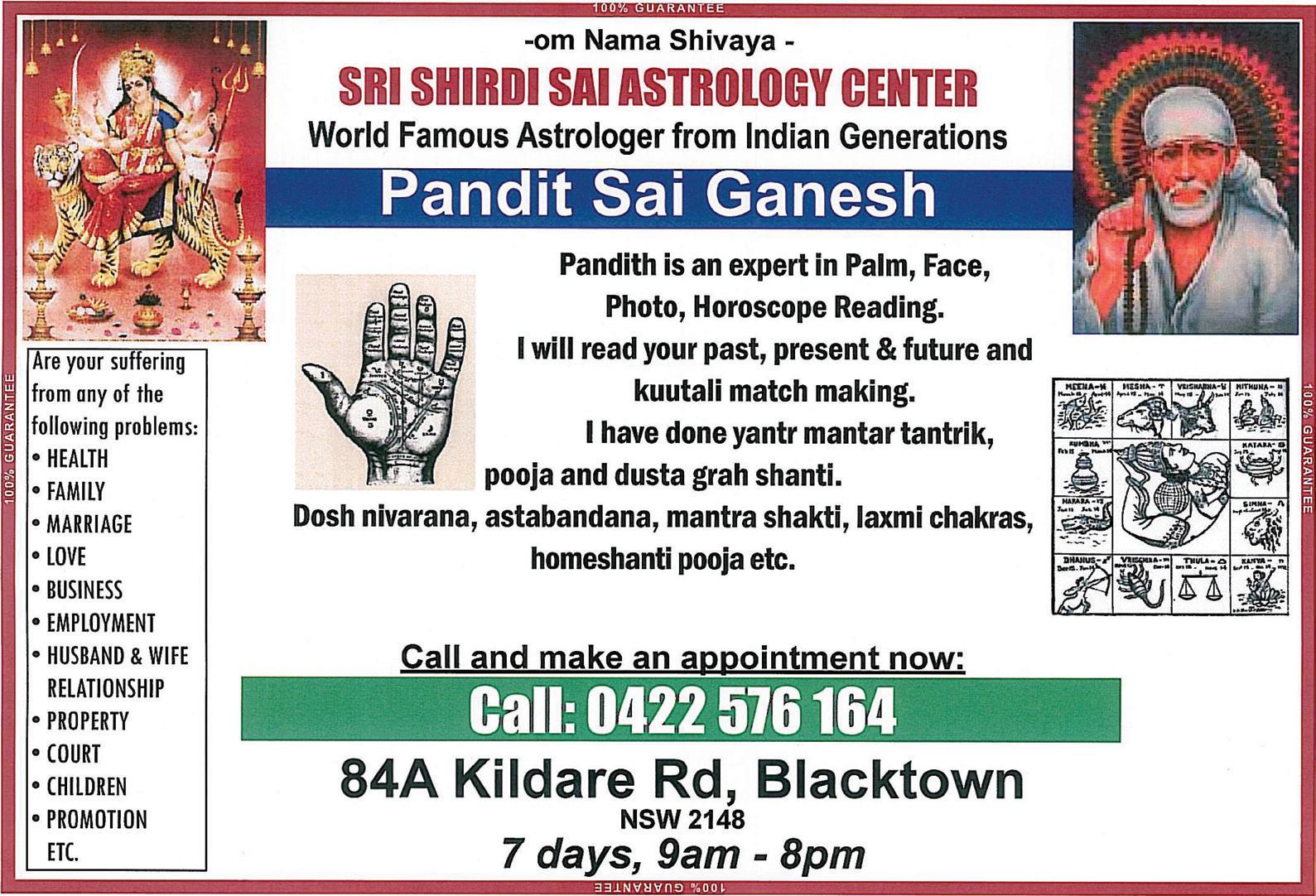


52 <> SEPTEMBER (2) 2011 INDIAN LINK MARRIAGE WORK BUSINESS EMPLOYMENT HUSBAND & WIFE RELATIONSHIP PROPERTY COURT CHILDREN PROMOTION ETC Call and make an appointment now: Call: 02 8604 9320 0422 576 164 0412 350382 Email: adipavankalyan@gmail.com 84A Kildare Rd, Blacktown NSW 2148 7 days, 9am - 8pm

SEPTEMBER (2) 2011 <> 53 NATIONAL EDITION
How to keep your hair safe
BY MINAL KHONA

These days, most people colour their hair. The unfortunate ones like us do so to hide the greys, and the fashionable ones do it to add to their glam quotient. But hair still needs to be protected regardless of the reason why it is coloured.
Ever noticed how, if you have been colouring your hair for a long time, it tends to look dull and flat, it loses its bounce and can even feel heavy? That is because coloured hair needs protection and TLC to keep it looking as good as colour-free hair. Especially since colouring is not exactly a cheap proposition.
Here are some dos and don’ts to keep in mind when you colour your hair, whether at home or at the salon.
Stay out of the sun
Just as the UV rays damage the skin, they can also rob the hair of its natural sheen and make it dry and brittle. If you must go to the beach or to the pool (chlorine in the pool and salt in the sea water are equally damaging) make sure you cover your hair as the oxidation process which takes place when coloured hair comes in contact with chlorinated or salt water can be damaging. Wet your hair before you enter the pool. You can also look for leave-in conditioners that protect the hair and prevent moisture loss.
Always
use complementing products
If you are using a certain brand of hair colour, you should look at the shampoo and conditioner for coloured hair from the same brand. Most leading brands do have a range to complete the package.
Extra TLC works wonders
A hot oil massage or a hair protein treatment can give your hair the extra nourishment it needs. These treatments are usually available at most of the reputed salons. Ask your hairdresser to recommend one suited to your hair type.

Two much is too much
If you are one of those people who spend most of their money and time in the salon, then this tip is for you. If you colour your hair regularly and want to have highlights of another colour or even a perm, do not indulge in all of this at one go. Give your hair a break between treatments. A month to six weeks between a colour job and a perm is ideal.
Choose the right colour
Always choose a colour that is best suited to your complexion. All those bleached blonde looks are out, and warm browns work best with our Indian complexions.
you best and then decide.
_ Do not shampoo with very hot water. It drains the colour off the hair. Use lukewarm to moderately hot water.

_ Cover your hair with a hat or a scarf if you are going to be outdoors all day.
Comb hair when semidry. Wet hair breaks faster. Do a patch test to check if your scalp is allergic to colour. Apply a bit to a small patch of hair and if your scalp gets itchy, avoid colouring or try another brand.
I have noticed that women on the pill tend to get an itchy and burning sensation when they colour their hair. If that happens, stop colouring immediately.
Don’t blow-dry your hair often. This applies to all hair types – coloured or non-coloured. It makes the hair drier. Avoid hairsprays that are going to make your hair stiff as sticks. Choose ones that have a moisturising effect or spray only enough to gently style hair into place. Never spray so much that you can’t run your own hands through your hair. If colouring your hair at home go for the ammonia-free, ready-to-use brands you. They come with the developer and an after-rinse conditioner too, so they are handy and convenient. Only, seek advice from your hairdresser before you choose the colour.
Ask a family member or a friend to help you colour the hair on the back of your head.
If you wish to highlight your hair, to avoid disasters, go to a salon. Also, once again, check if your face is really suited to highlights.
_ To retain the hair’s gloss, massage your hair with a mixture of olive oil and eggs – it will give a good bounce and sheen to the hair.
54 <> SEPTEMBER INDIAN LINK
colour BEAUTY www.indianlink.com.au
If you are using a certain brand of hair colour, you should look at the shampoo and conditioner for coloured hair from the same brand
Most salons have a book with colours, so talk to your hairdresser about the family of colours that will suit you best and then decide




SEPTEMBER (2) 2011 <> 55 NATIONAL EDITION Pallavi Sinha Pradip Pandya 0413 049 989 Hemal Joshi 0433 328 687
The language of love

l e o u v
BY RANI JHALA
I was in the first year of my Bachelor of Arts, when the student body of the university organised a multicultural fundraiser. The president of the student body sent out a bulletin asking for volunteers for a Hindi play. Three of my close friends who were also of Indian heritage joined up. They insisted I sign up too with the words, “Look, we will help you, no one will know. It has worked so far hasn’t it?”
Unable to get out of the situation, I signed up too, and the four of us marched to the main hall together, for our first meeting.
As we entered the room I felt as if I had entered an alien word. There was a lot of noise, but none of it made sense to me. My heart began to race. As I turned to leave the room, in true Bollywood style, I bumped into a ‘true blue Aussie’, with blue eyes, sun bleached blond hair and tanned skin that matched my own. I had stepped on his toes really hard too!
“I’m sorry!” I blurted out an apology.
“Koi baat nahi, apka ye jakham to kismet walo ko hi milti hai,” he replied holding his heart as if in pain.
I just gaped at him, thinking, “Just my luck to bump into a man who speaks an alien tongue!” But then I gave it one more shot.
I pointed to his feet and mimed that I was sorry for stepping on his toes, and gave him my “Forgive me, I’m sorry!” smile.
“Is muskan ke liye to mera doosra pau bhi hazir hai,” he said, with another smile.
By that time the student body had begun to round everyone up and I somehow got pulled into the room. I found myself seated between my friend Reema and ‘Blondie’, a name that my mind had already given him. Ten minutes later I found myself placed in the role of the love interest of the male character, an Aussie who had made an ashram in India his home. Ironically, my ‘Blondie’ was that love interest.
“I think you better tell them that you are in the wrong group. This is a Hindi play,” I said, articulating each word slowly in the hope that talking slower would make it easier for him to understand.
Blondie merely smiled and then gave me another one of his incomprehensible dialogues, “To aap yaha kya kar rahi hai?”
“Oh dear, we are in a mess aren’t we?” I said, and without waiting a moment longer, I pointed out to the producer that the man next to me was in the wrong room and did not speak the language.
“Peter? He can teach the best of us! He is majoring in Hindi and is actually the person who has written the play. He is also an English professor,” replied the grinning producer.
If I was surprised, everyone else was astonished. And then rage took over as I whispered, “What do you write? Tragic flops?”
“Actually successful romantic comedies,” he
replied with a grin. I learnt later that two of his manuscripts had been converted into Bollywood movies. At that moment though, I re-joined the play thinking that I would show ‘Blondie’ that if he could learn Hindi, I could learn it better and faster.
Luckily we had a two-week break before the rehearsals began, and I employed my three friends to teach me.
One would have thought that the language of my ancestors would have been easy to learn, but it was the most stressful endeavour I had ever taken on. The genders, the matras, the script – all combined and succeeded in making a total mess of me. When rehearsals were about to begin, I caught up with the producer and withdrew my name.
As I walked out of the room, the scenario of our past meeting was repeated and I stepped on Blondie’s other foot.
“I’m sorry!” I apologised again.
“Don’t worry, this pain is received by the fortunate,” he said, translating his very first sentence from our unique first meeting.
“Is this line from your play?” I joked with a smirk.
“For this smile, even my second leg is at your service,” he translated again with a gentle smile.
And then with an impish grin he added, “So, what are you doing here?” Another smile followed as he continued, “Now that ends my translations.”
“You made a fool of me, and that was not very nice. I came here to withdraw my name from the play,” I replied, cringing at the thought how I had made a fool of myself.
“I thought most Indians taught their children their mother-tongue,” Blondie asked interestedly.
“My parents came from different parts of India and spoke different dialects. The common language between them was English. I consider myself an Aussie and did not want to learn Hindi, nor did I

think that it would be needed,” I replied defiantly.
“And when you visit India, is it not needed them?” he asked.
“Most people in India speak English now, and I manage with actions when needed,” I replied. Curiosity got the better of me and I asked, “And you, why did you learn an alien language?”
“My father was Indian, and my mother insisted and both she and I learn his language. She said it was the heritage that I had inherited and one that I should embrace,” he replied.
I stood in silence for many moments. What could I say to one who had accepted what I had rejected?
“I can teach you,” he added tentatively.
“I’ve tried for the past two weeks, and failed miserably. Hindi is not for me,” I said despairingly.
“Ah, you must have made the same mistake I made when I started learning the language. You must have spoken it from your tongue, and not your heart,” he replied.
“And how do you learn a language with your heart?”
“You put on a CD, close your eyes, and listen to the song. Then you get the lyrics and match the words. That’s how I started to learn the language. It works, believe me,” Blondie said earnestly. I went back into the room and signed on to be in the play again, but I took on a smaller role instead, with fewer lines that I could memorise and utter with my Aussie accent.
By the time the play was staged, Blondie and I had begun dating. And he would make me sit through these weird Bollywood movies as he translated the dialogues, or he would put on the subtitles and spend the evening correcting their translations.
Peter also introduced me to a lady who ran a Hindi school and I enrolled as her oldest student. I became a source of entertainment as I struggled to pronounce what the little kids in my class mastered with ease. But those two years were worth it, for I did learn the basics of the language and began to truly enjoy the wonderful literature that was available.
But it became the language of the heart when Peter asked me to marry him and I accepted in the language that had brought us together - Hindi.
56 <> SEPTEMBER (2) 2011 INDIAN LINK
FICTION www.indianlink.com.au
For an Aussie bred Indian, learning the language of her forefathers proves to be more rewarding than expected
At that moment though, I rejoined the play thinking that I would show ‘Blondie’ that if he could learn Hindi, I could learn it better and faster.
One would have thought that the language of my ancestors would have been easy to learn, but it was the most stressful endeavour I had ever taken on.
e
We beat the best with no less — TAI offers best Airfares and Packages to suite all budgets.
We Specialise in: Competitive airfares to India, Indian Sub-continent, Fiji, Middle East, Asia, Europe, South America, North America & Africa. TAI— offers Special Round the World Fares and packages to suite both individual and group travel. TAI is focused on Tailor made and prepackaged tours. Are you looking for air tickets from India our partnered offices within India can organize any travel or tours within India and prepaid tickets.
Office
Phone: +61 2 9631-0206
Fax: +61 2 9635-3829
Email: sales@travelairinternational.com
Address: Shop 6 / 3, Aldgate St
Prospect Shopping Village
Cnr of Blacktown Road and Aldgate St
TOURS TO INDIA
while you are visiting family or friends why not getaway and do a private tour. half day tours starting from $35 Per Person
Full Day Tours starting from $90 Per Person
Call us today take a pick from our range of city tours. Call 9633-2045 and find out today
Think
Travel Air International—Branch


Liverpool Office
Phone: +61 2 9734-9333
Fax: +61 2 9734-9322

Email: sales.liv@travelairinternational.com
Address: 50 Railway Street, Liverpool NSW 2170
SEPTEMBER (2) 2011 <> 57 NATIONAL EDITION
Travel Air International now offers language support, Languages: English, Hindi, Tamil, Punjabi, Arabic www.travelairinternational.com Travel
Prospect NSW 2148
Matrimonials

Seeking Grooms
Sikh divorcee, 56yo, slim, caring, Australian citizen residing in Sydney area, non smoker, in professional government job, well established, seeks Indian man above 50, non smoker, social drinker, settled in Australia, for view to permanent relationship and marriage. Please reply with details and photos to sikhgal123@hotmail.com
Seeking suitable match for Hindu girl, 34 years, Chartered Accountant (non-veg), living in Australia over 25 years, with eastern and western family values. Please email with all details on ganesh2011v@gmail.com
Seeking a suitable match, currently pharmacist in UK (but would prefer to settle down in Australia). Born May 1979 UK (citizen), Australia (permanent resident). 5ft 7”, slim, vegetarian. Hindu Punjabi Khatri. Father retired, mother working part-time in govt job, one brother (all in UK) and one sister (married and settled in Australia). Contact redvanilla101@hotmail.com
Looking for an intelligent, handsome, Sikh boy for my younger daughter 25-year-old, 5’6”, slim, fair, beautiful girl, working in Insurance industry with Finance background, on high income. We have been settled in Sydney for past 35 years. My elder daughter is happily married here in Sydney. Please respond with your details and photo to 24advertiser@gmail.com
Seeking professional qualified match for affectionate homely Punjabi girl. She

has done law (advocate) from Delhi, India. Parents settled in India. Aunty in Sydney. 25/165 of Indian origin. Boys upto 30 years required (family settled in Sydney preferred). Interested send bio data along with recent photograph via email – rakeshmehta_bkc@ hotmail.com


Seeking suitable Punjabi Brahmin match for 1972 born (looks younger), divorced, issueless registered nurse India. Groom preferably between the age of 3540, Hindu vegetarian, non smoker, non drinker. Only serious persons contact on nitishsharma_18@yahoo.com
Parents of Sikh Khatri girl invite alliance for their beautiful, slim daughter, 31 /5’-1”, Australian citizen, never married. Working as Senior Risk Analyst with esteemed finance giant. Family settled in Sydney. Seeking professional, well-educated match with good family background. Caste no bar. Contact: 02 0411 513 703 or email: roopan09@yahoo.com
Seeking Brides
Alliance invited for a 29-year-old wellsettled Hindu boy. Fair, handsome, 5’8”, CPA, working in Brisbane, Australian citizen. Looking for well-educated, working, Hindu Punjabi girl with family values, in Australia. Contact 0422 039 269, or email manjuloona@yahoo.co.in
Well settled Hindu family inviting alliance for tall, handsome Australian citizen, 37/5-10’, innocent divorcee.
Excellent salary package, own house in Sydney. Seeking qualified, beautiful girl from well cultured Hindu families well settled in Australia or India. Please send details with recent pictures to propose@live.com.au

Seeking a suitable girl for good looking clean shaven Ramgarhia boy, 27, 5-7, well-educated, Dip in Mechanical from Thapar Institute, B.Tech Mechanical from Manchester Metropolitan Uni U.K. Currently working as Design and Maintenance Engineer in India. Sister Australian citizen settled in Sydney. Please contact 0412 254 015 or email aussydney@ ymail.com
Suitable match for 1975 born, clean shaven Sikh Khatri boy, 5’ 9”, M.P.M, M.C.M (from India). Recently finished Masters in I.T from Australia. Boy is temporary resident and currently preparing to file for P.R ASAP. Has full-time job in service industry with decent income. Staying with elder brother, and parents (who are on 1 year visitor visa) in Sydney. Girl should be tall, well educated, with pleasing personality and must be from Sikh background. Early marriage, and serious proposals please. Phone 02 9476 4570, or email: jas_ghai01@ hotmail.com
58 <> SEPTEMBER (2) 2011 INDIAN LINK
read it in heard it on radio Tell them you FREE Vol. 18 No. 11 (2) • August (2) 2011 www.indianlink.com.au •FORTNIGHTLY SYDNEY Level 24/44 Market St, Sydney 2000 GPO Box 108, Sydney 2001 Ph: 18000 15 8 4 email: info@indianlink.com.au Sydney Melbourne • Adelaide • Brisbane Perth Canberra India hearts in our IndependenceDayfairs2011 24/7 on the net www.indianlink.com.au Indian Link Radio



Films about terrorism Top ten
Films about terrorism
BY SHRADDHA ARJUN

In the wake of recent events relating to terrorist attacks, there have been several films made in several languages in India and globally. The 10th anniversary of 9/11, the 26/11 attack, the recent blasts in Delhi just to name a few, have been making headlines all over the world.
It is almost impossible to reason with a terrorist and to anticipate a terrorist attack, in which a sense of helplessness, utter chaos and
fear prevails. The scenario where the predator can go to the extent of killing himself to instigate pain and terror is unfathomable in the minds of people. While the psyche of a terrorist seems to be a mystery for many, it’s an interesting topic to explore. In my opinion however, there are several stories about human courage and spirit that surface amidst all the mayhem. These are stories of survivors that are worth telling. Here’s a look at some unforgettable films made about terrorists partly based on facts but mostly fiction, but interesting nevertheless.

There are different approaches to the same topic. While some of these films were made
well before the “war on terror” or even before the 9/11 incident, they are unfortunately still relevant to the current circumstances. There have been several other films such as Fanna, Mumbai Meri Jaan, New York, Kurbaan and My Name Is Khan that talk about terrorism as a phenomenon that exists the world over, and is not confined to just the Indian subcontinent. It’s shocking to even enumerate the number of films made the world over about this issue. If films are a reflection of society, it’s quite disheartening to be a part of a world filled with hatred and fear. One can only hope against hope that terrorism comes to a miraculous end, the way it does in our movies.
10
This is as dramatic as Bollywood gets with a story about terrorists. A sudden explosion in a calm and serene lake in Kashmir establishes the backdrop and the story in a crux. A very unlikely choice of film for Hrithik Roshan, a relatively new actor at that time. After his very successful debut in Kaho Na Pyaar Hai, no one had expected him to jump straight into a negative role. An illustrious cast (Preity Zinta, Sanjay Dutt, Jackie Shroff and Sonali Kulkarni) joined him, under the direction of Vidhu Vinod Chopra. First screened at the Stockholm International Film Festival, it received several accolades and awards. The protagonist Altaaf (Hrithik Roshan) a conniving member of a terrorist group, gradually and willfully decides to put his agenda of revenge aside to prevent a terrorist mission. The songs of the film were instant hits; however, the film itself received only a lukewarm response from the audiences.
5
Roja (1992)
First in Mani Ratnam’s trilogy of films based on terrorism, this film was originally made in Tamil and later dubbed in Hindi. It achieved resounding success at the box office and was critically acclaimed as well, winning three national awards and being nominated for Best Film at the Moscow Film Festival. The film is about Rishi Kumar (Arvind Swamy), a cryptologist working for the Indian government. Work takes him to Kashmir where he is kidnapped by terrorists whose agenda is to separate Kashmir from India. Roja (Madhu) Rishi’s bride, is faced with the unnerving task of rescuing her husband. The film also touches upon several issues and arguments about terrorism and the causes behind it. The high point in the film is when Rishi and Roja convince the head of the terrorist group Liaqat (Pankaj Kapoor) that his war is immoral. As a result of which, Liaqat lets Rishi go and the film ends on a happy note. AR Rahman’s first, this film’s music was very successful and its soundtrack is among the 10 Best Soundtracks of all time listed by Time magazine.
Fiza (2000) 8 9

Sarfarosh (1999)
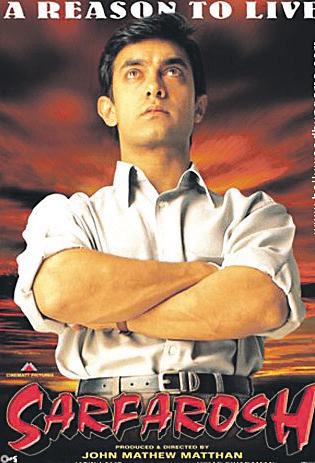
This film is a hot favourite for several reasons amongst the many Bollywood films made on the subject. It had powerpacked performances by Aamir Khan and Naseeruddin Shah. The songs were well received with a ghazal (Hosh walon ko) by Jagjit Singh that stole the hearts of many. There were insights into the infiltration of terrorists within the country, and also about a corrupt few in the defense forces and the police department aiding terrorist activities. Naseeruddin Shah plays a famed Pakistani vocalist Gulfam Hassan. Events unfold to reveal that Gulfam happens to be the mastermind behind the intrusion of arms into India. The film explores the role of an IPS officer and that of the police department who counter terrorism. This film also presents a different approach to the way the issue is tackled. It establishes the fact that Islam and terrorism are not necessarily related to each other; and also the fact that a Muslim can be as sincere and patriotic as any other Indian policeman, if not more. The film, released at the time of the Kargil conflict, did moderately well at the box-office.

This critically acclaimed film, like other critically acclaimed films, did not do well at the box-office. Karishma Kapoor and Jaya Bachchan were given Best Actress and Best Supporting Actress awards respectively for their roles at almost all the film award functions in India. This was one of the 14 Hindi movies selected by the Film Society of Lincoln Centre to be screened as a part of the section called “Muslim Cultures of Bombay Cinema” in May 2010. The performances were undoubtedly extraordinary and the plot itself had several unexpected twists. It represented the Muslim community’s juxtaposing sentiments about terrorism and jihad. It also explored the effects of a communal riot on an individual (based on the Bombay riots of 1993). The most dramatic scene in the movie is the climax, wherein the protagonist Fiza (Karishma Kapoor) decides to kill her own brother as a last resort to giving him an honourable end.
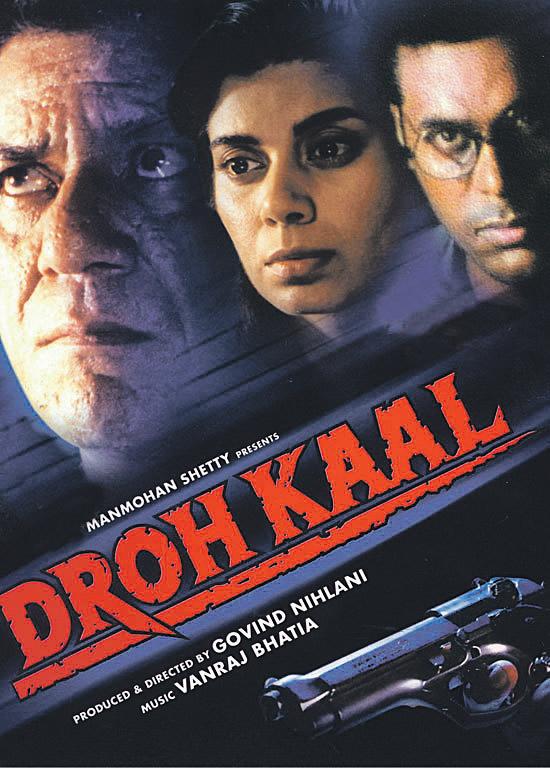
ENTERTAINMENT
It’s a subject that pervades our daily life, and some movies have managed to capture the essence of the different messages that stem from terrorism
Mission Kashmir (2000)
Kaal/ 1
Droh
This film is perhaps the best film on terrorism ever made in India. Directed and produced by Govind Nihilani, it assesses the emotional and psychological trauma that sincere officers go through while fighting against terrorists. The film had an aweinspiring cast that included Om Puri, Naseeruddin Shah, Mita Vashisht, Amrish Puri and Manoj Bajpai. It won Nihilani the Best Director award at the Damascus International Film Festival. The film was then remade in Tamil titled Kuruthi Punnal, and was directed by PC Shriram and produced by Kamal Hassan. It had no songs, and upon its release, it met with very strong criticism. The Tamil version took the action sequences one notch

above the original and set a benchmark for action films to be made later in the film industry. It was sent as India’s official entry for the 68th Academy Awards for the Best Foreign Film Category. The film has a very slow and steady pace that is very engaging. It has its spine-chilling moments like when the terrorists take over the residence of the protagonist, forcing him to oblige to their demands. The film does not end on a positive or a happy note. It takes a very realistic and pessimistic approach wherein the lead actors get killed and the issue of terrorism is only temporarily resolved. It hints at the possibility of resurgence of terrorism, depicting it as an ongoing phenomenon.

KannathiL Muthamittal (2002)

A Wednesday (2008)
The Terrorist (1998) 4
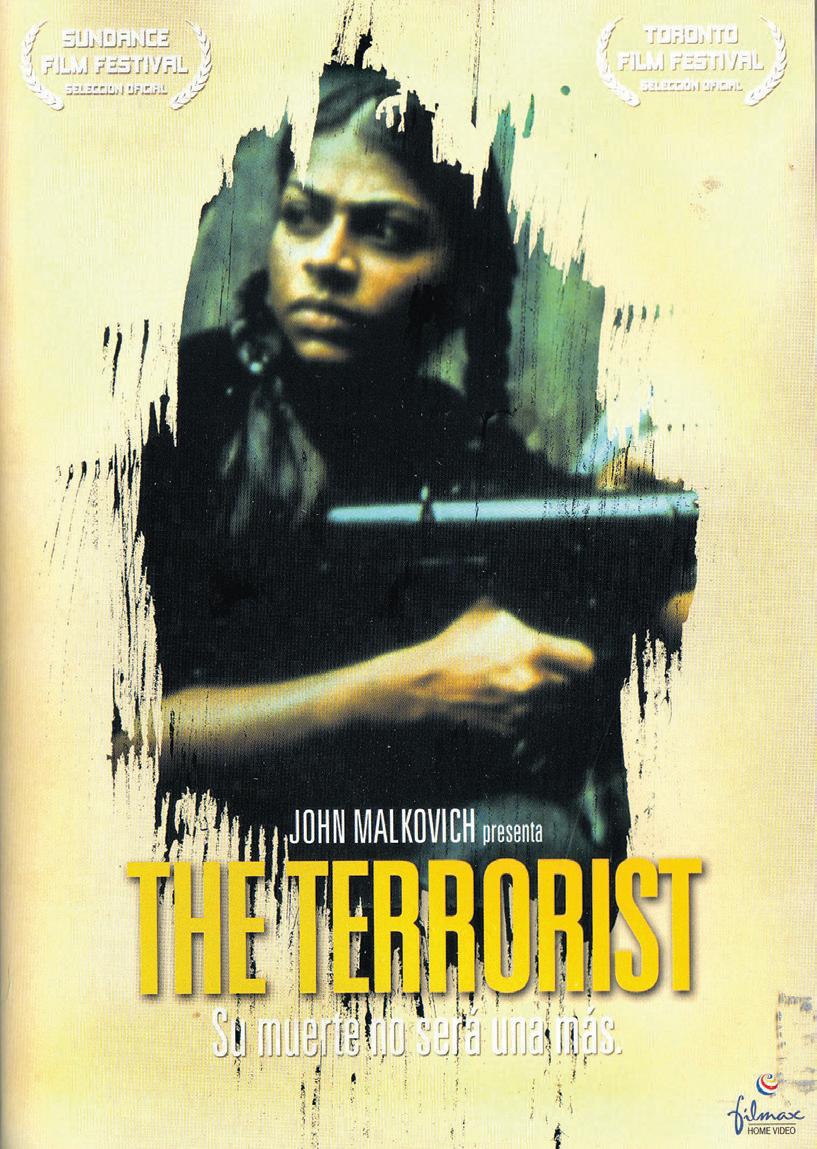

A lesser known, yet one of the better films ever made by an Indian director about terrorism, this film was made by the expert cinematographer Santosh Sivan. It was largely inspired by the events that led to the bombing and assassination of Rajiv Gandhi, former PM of India. The film portrays the life of a 19-yearold woman Malli (Ayesha Dharkar) who carries out the assassination.
Made on a shoestring budget of $50,000 and filmed within 15 days, The Terrorist won several international awards at film festivals including the Poznan Goat at the Ale Kino Film Festival and Jury prize at the Sarajevo Film Festival in 2000. The film delves into the life of LTTE members and how their minds are conditioned to carry out daunting activities and assassinations. Roger Ebert quoted in a review, “Every time I see the film, I feel a great sadness, that a human imagination could be so limited that it sees its own extinction as a victory.” (Great Movies, Roger Ebert)
This is the third and most recent in the trilogy of films about terrorism amongst the films made by Mani Ratnam. Premiered at the 2002 Toronto Film festival, it was India’s official entry to 2004 Cannes Film Festival. It went on to win six National Awards, six Filmfare Awards and Best Film Awards at six international film festivals. With a formidable cast including Nandita Das, Prakash Raj, R Madhavan and Simran, the film tackles various issues starting from the Sri Lankan civil war to the issue of adoption. It also represents the plight of refugees and the trauma one is put through under war-like circumstances. It is about the desire of a Sri Lankan Tamil child adopted by Indian parents, to meet her biological parents. The child’s biological mother (Nandita Das) once a displaced Sri Lankan refugee, turns out to be a LTTE member carrying out terrorist activities. The film is shot in beautiful locales across the southern coastline of India and Sri Lanka. The music of the film is an eclectic mix of quintessential Rahman with Sinhalese and Sri Lankan undertones.
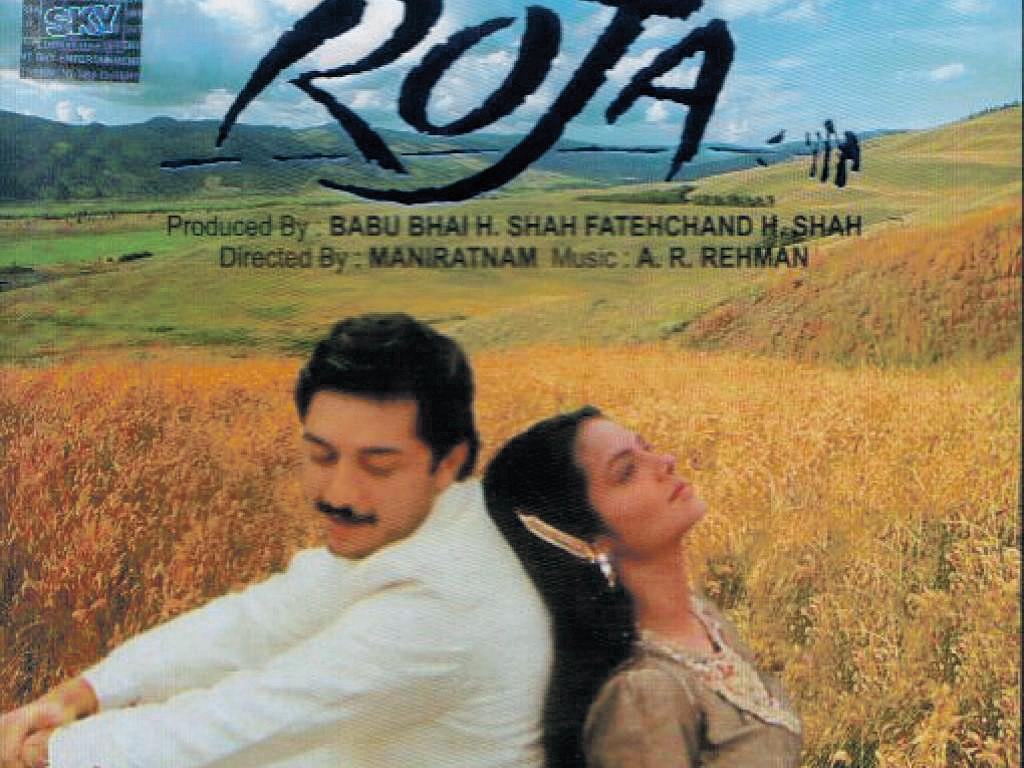

Dil Se (1998) 7
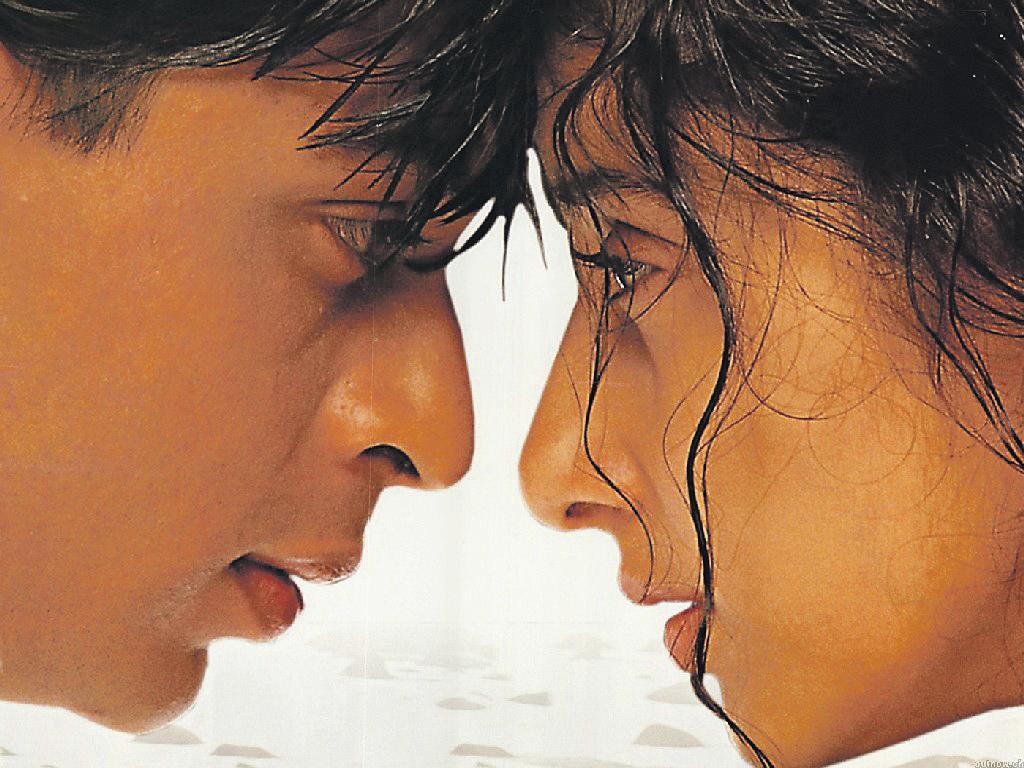
Ace director Mani Ratnam is no stranger to this topic, but this was his first venture into the Hindi film industry. The film was beautifully shot at picturesque locations, with songs that were resounding hits. It was a visual treat. The love triangle between Shahrukh Khan, Manisha Koirala and Preity Zinta was set against the backdrop of terrorism. Only this time it wasn’t about the jihadi terrorist groups, but about extremists from the north-east of India. Dil Se several layers to it, which blend into each other beautifully. It talks about the underlying issues that lead ordinary people to becoming terrorists. It breaks the clichéd image of a terrorist as a bearded, heartless, inhuman individual. The film has an unexpected ending wherein Amar (Shahrukh Khan) frantically tries to stop Meghna (Manisha Koirala) from detonating a bomb; they end up embracing each other causing the explosion to kill both of them. This film is a journey through seven shades of love as defined in ancient Arabic literature – attraction, infatuation, love, reverence, worship, obsession and finally, death. The film won two national awards, six Filmfare Awards and a special mention at Berlin Film Festival.
Maachis (1996) 6
Directed by the Academy Award winning poet/lyricist Gulzar, Maachis is a film about what brutality can drive an ordinary individual to do. It explores the time in 1984 following the assassination of Indira Gandhi, former PM of India, at the hands of her Sikh bodyguards. A wave of hatred and communal violence broke out against Sikhs. As a result of this, many people joined extremists groups as a form of revolt against the oppression they faced. The film does not justify or advocate the concept of terrorism, only presenting the facts for the audiences to analyse. With award-winning performances by Tabu, Kulbhushan Kharbanda and Om Puri, the film received the National Award in 1997 with the Silver Lotus Award for Tabu as Best Actress in the same year.
An interesting perspective about the phenomenon of terrorism, this film presents the point of view of an ordinary citizen who is indirectly affected by terrorism, and decides to take matters in his own hands as he feels that the Government has failed to do so. Naseerudin Shah plays the role of a menacing commoner who threatens to detonate bombs at police headquarters and other locations to have his conditions met by the police. It talks about the frustration of the common man in India whose safety is no longer guaranteed, and how he lives a life engulfed by fear. The film was a sleeper hit and despite its low hype, touched the right chord with the audience. Somehow, A Wednesday seemed to represent their sentiment and voices on the silver screen. The film was later made in Tamil titled Unnaipol Oruvan with Kamal Hassan and Mohanlal playing the roles essayed by Naseerudin Shah and Anupam Kher in the original. The film won Starscreen Awards and two Filmfare Awards, and was nominated at the 2009 Asia Pacific Screen Awards.

SEPTEMBER (2) 2011 <> 61 NATIONAL EDITION www.indianlink.com.au
3 2
Kaal/ Kuruthi Punnal (1994)
Cine Talk
Another shaadi saga
Film:Mere Brother Ki Dulhan

Starring:Imran Khan, Ali Zafar and Katrina Kaif
Written&Directedby: Ali Abbas Zafar
Somewhere in the vast spaces of mainstream Hindi cinema, the North Indian shaadi with its band baaja and, yes, baarati, seems to have made a permanent place in our cinema. Mere Brother Ki Dulhan (MBKD) is the third film in the last 8 months after the delightful Band Baaja Baarat and the surprising Tanu Weds Manu to weave a rom-com around the sights, sounds, scents, stress, chaos and satire of a big fat Hindu wedding.
Must say, the other two films got it right dead-on. MBKD flounders in its frisky fusion of a love triangle and plea for an arranged marriage.
Debutant director Ali Abbas Zafar knows the subtexts in his script well enough to conceal the rather glaring discrepancies in the storytelling. The narration quite frequently relies on jump cuts, retro music and other external ploys to make the goingson appear more involving than they really are. The recurrent use of R.D. Burman’s Piya to ab to aaja has no relevance after a point. It just becomes a tiresome inclusion.
The three main characters, played by three watchable stars one of them from across the border, manage to take the plot’s improbabilities into the province of the palatable. But the situational humour doesn’t quite have the delightfully disarming naturalness of Band Baaja Baraat
But the characters exude a contagious warmth, more in their individual capacity than in combinations. For a film about love, warmth, togetherness and family
Besides one memorable sequence towards the beginning in front of the Taj Mahal (a recurring cultural and sociological symbol in the film) when they share cold chai, there is little to suggest any serious bonding between Katrina Kaif and Imran Khan…or for that matter, between the two brothers played by Ali Zafar and Imran Khan.
Zafar who delighted in the satirical mode of Tere Bin Laden, returns with yet another performance that knows how over-the-top to go without toppling over. Yup, Zafar gets it pitchperfect all the way. The same cannot be said of the film which occasionally slips into becoming a stretch.
What really redeems the film’s blind spots is Katrina Kaif who brings a very
settles into a comfortably arranged marriage with the rakish NRI Ali Zafar. Fun, as it turns out, leading to falling in love with her brother-in-law-tobe. The turn of events may surprise the characters. We remain largely detached from the synthesis of celebration and drama.
“What will I tell everyone? That I fell in love with my bhabhi?” the embarrassed and horrified brother-inlaw tells his untamable babhi-to-be That’s Imran Khan, playing the sweettempered benign do-gooder once again. Khan stays in his comfort zone while Katrina comes out of it to give herself and the audience the time of her life.
There is nothing seriously amiss in
on is that element of unpredictability during the time of a wedding that Band Baaja Baarat and Tanu Weds Manu managed to capture, probably because the couple at the helm was supported by any number of splendid supporting stars.
Here the supporting actors are serviceable. Parikshat Sahnni and Kanwaljeet as the couple’s fathers try to be comic and filmy. They just looked jaded.
By the time the Brother walks away with the Dulhan we really have nothing we would like to say to them, except, what took them so long?
Subhash K. Jha

ART COMPETITION
62 <> SEPTEMBER (2) 2011 INDIAN LINK
ENTERTAINMENT www.indianlink.com.au
Get set for DIWALI!! Calling all kids 10 years and under. Create an art work on the theme of DIWALI. Use poster colours, paints, crayons, colour pencils or craft paper. Send in your work, on plain white A4 paper, to: Indian Link, GPO Box 108, Sydney 2001. Last date for submission 10 Oct 2011. The winning entry will be designed into Indian Link’s Diwali cards for the year 2011. For more details, ring the Indian Link office on 02 9279-2004, or email info@indianlink.com.au
?
DIWALI

SEPTEMBER (2) 2011 <> 63 NATIONAL EDITION
BUZZThe
Priming up for Paris
Bollywood’s buzzing with anticipation as international celeb Paris Hilton arrives in Mumbai for a three day trip soon, to unveil her Fall-Winter designs. The heady heiress of the Hilton fortunes will be visiting India for the first time, and I won’t be surprised if she makes the trips more frequent. I also wonder how many of Bollywood’s best are lining up to sign her up for their upcoming flicks? Perhaps an item number? Watch out Kat & Co., it won’t be the first time Ms. Hilton’s taken a city by storm!
Sayali’s okay with sexy
Sayali Bhagat, former Miss India and actress took a dig at actresses refusing to sport bikinis, particularly in Dhoom 3 , adding she would gladly wear one for a role.


“I have no inhibitions about looking sexy. I am quite comfortable with my body. I want to wear bikinis. Sayali Bhagat in a bikini would definitely add value to any film,” she said recently.
The life and times of Dia Mirza
She’s enjoyed stints as a beauty queen and an actress, she’s currently in the avatar of producer, and is looking to explore other aspects of cinema. Direction would be her next destination, she says.
The former Miss India has been on the Bollywood scene since 2001 with Rehnaa Hai Terre Dil Mein, and has worked in Tumsa Nahin Dekha, Deewaanapan, Parineeta, Dus and Lage Raho Munnabhai.
But now with Love Breakups Zindagi, which she coproduced with Zayed Khan and Sahil Sangha, it may be the turning point of her career.
“I think today I am at a whole new phase of my life and there is a lot that I have to look forward to. What I do believe in doing right now is doing everything with a lot of conviction and understanding,” says Dia, who plays main lead in her debut production venture with Zayed.
And direction is the next possibility, reveals the 29-year-old actress, who already has a couple of ‘simple and meaningful’ stories that will tell the story of the heart and of a resurrection. Well, all we can do is wait and hope that Dia’s production venture is successful enough to hoist her into direction. Just do it, Dia!
Sayali claims that she works out regularly and has one of the hottest bodies in B-town. Seems like the luscious lass is fed up of playing the good girl on screen. She’s managed to change that though, as Sayali plays a tomboy in Tinu Verma’s This Weekend and in one song, she actually sports an orange bikini. But no such luck in Halla Bol, Jail or even Ghost , Sayali’s upcoming releases. Sayali has replaced Ameesha Patel in tennis star Leader Paes’s debut project Rajdhani Express . Perhaps Leander will take the hint and get Sayali to strip to the bare essentials. Bet her fans have their fingers crossed….
Back to Bollywood!
Madhuri Dixit is cruising on cloud nine, as she heads back home for good, shifting base with her family from Denver in the US. The choli ke peeche sensation finally succumbed to the lure of the big screen and the flood of offers that came her way at her recent comeback a few months ago. Madhuri took a 12-year break from Bollywood after she married, to bring up her kids and be housewife to Shriram Nene, a cardiovascular surgeon based in the US. But now, relocation will mean back to Bollywood, which is itching to work with the prolific actress, and if the buzz is to be believed, offers have already been coming in, fast and furious!
Post-marriage, Madhuri featured only in one film Aaja Nachle in 2007, but it looks like we’ll be seeing much more of Madhuri in the near future. Goodbye Mrs Nene, welcome back Ms. Dixit!
Big B full of generosity
He may be a mega-superstar, but Amitabh Bachchan’s heart is certainly in the right place. A 27-year-old widow from Vidarbha who appeared on Kaun Banega Crorepati hosted by the Big B, has been gifted Rs 1 lakh by the actor who was moved by her plight. He promised Aparna Malikar Rs 50,000 to take care of the education needs of her two minor daughters, but
ABHILASHA SENGUPTA brings us up-to-date on what’s hot and happening in Bollywood
has upped the till to Rs 100,000 in a generous move. It was a pleasant surprise for Aparna, who received a demand draft for Rs 1 lakh, a personal gift from the star. In the letter addressed to Aparna and delivered by courier, Amitabh wrote in Hindi: “Aparnaji, despite all the hardships, you have displayed great courage, this is really commendable. I welcome your views on the education for your children. Here is a small gift from me. Please accept it.” Aparna is just one of the thousands of farm widows in the Vidarbha region of eastern Maharashtra.
It’s ironic that Amitabh Bachchan says he quit politics as people questioned his “harmless social service”. The Big B decided to enter politics in 1984, contesting the Lok Sabha election from Allahabad on a Congress ticket. He recounts his vivid experience of visiting villages and observing the poverty, want and yet pride in them, which made a profound impression on him.
“In those two years that I spent in Parliament I realized that the system on its own would never be able to take care of those that suffer. So with limited means, I began my own individual charity,” he stated on his blog. Amitabh began his personal commitment to help with medical vans which serviced hundreds of villages. “But politics soon took over and attacks on its veracity and intent were made questionable. Hurt and disgusted with the attitude of those that opposed this harmless social service, I gave it up and stopped,” he said. Fortunately it seems like the Big B hasn’t quite given up on charitable works, bless him!
Saif: Strong and sexy! But for how long? That’s the question! Saif Ali Khan, who has been dating Kareena Kapoor for as long as we can remember, says men like him, who are
GUESS WHO
INDIAN LINK
ENTERTAINMENT
?
(Find the answer under Caption Contest)
Will small screen success translate to the big screen?
considered sexy and strong, never take styling tips from their girlfriends.
“I never take dressing or styling tips from Kareena as I, being a strong and sexy man, know how to dress perfectly and look good,” Saif said recently. Now I’m not sure how Kareena would feel about this, but I’ll bet the headstrong actress doesn’t take fashion tips from her beau either, being sultry and sexy in her own right.
Saif refused to comment on his plans to settle down with Bebo any time soon, but he’s already chosen his wedding outfit. “Since I belong to Bhopal, I will definitely wear an achkan ,” Saif said, probably preparing himself for the inevitable. And will he continue strong and sexy after marriage? Well, only time will tell!

Gautam Rajadhyaksha: A tribute
One of India’s most prolific photographers Guatam Rajadhyaksha passed away recently of a massive heart attack. Bollywood diva Madhuri Dixit who was close to him claimed that he left behind unfinished business and so many memories.

“I can’t believe he’s gone! He was still so young and vibrant. The last time we spoke he was so excited about the school he was starting in Pune. Now he has left behind so much unfinished business, and so many memories,” Madhuri said recently.
Gautam had a particular soft spot for both Madhuri and actress Kajol. “He always said, ‘I’ve two daughters Madhuri and Kajol’. And when I got married, and later Kajol, he felt he was giving away his daughters. He was such a gentle soul, never said anything hurtful. And what a wonderful artiste,” said the visibly shocked actress.
“We shot some of my most beautiful pictures. And I’ll be proud of them forever. You know, in those days there were no artificial gimmicks and touch-ups to beautify the pictures and certainly no photoshop. Gautam shot in natural light. He was so kind. He would always say I looked good from any angle,” she added.
Rajadhyaksha, 61, was one of the most sought after glamour photographers in the film industry, having worked on portraits of almost all the leading stars. Apart from that, he was also associated with films like Hum Saath Saath Hain, Hu Tu Tu, Kuch Kuch Hota Hai and Hum Aapke Hain Kaun special stills-photographer. His talent and personality will be sorely missed, but he leaves behind a rich legacy. RIP, Gautam Rajadhyaksha. Sonam’s cool about Mausam
Sonam Kapoor isn’t worried, despite her new film experiencing delays in release. She feels it gives her extra time to promote her “first true love story”.
The young actress admits to have worked very hard in this
directorial debut of eminent actor Mausam features Sonam as a Kashmiri girl who falls in love with a Punjabi boy, Shahid
Although Sonam debuted with opposite Ranbir Kapoor, she describes Mausam as her first true love
“I have never done a perfect love story. The film is about two people who want to be together. Here both of them love each other. I have never done a love story where both of them love each other,” said the actress who Delhi-6, I Hate Thank You . And like her dad Anil Kapoor, this feisty 26-year-old hopes to make it mega big in Bollywood. Sonam may have a long way to go, but that journey’s already well under way….good luck to her!
Ours is a sexually repressed society: Randeep Hooda
Actor Randeep Hooda’s forthcoming movie Saheb Biwi Aur Gangster has some steamy scenes and the actor says such bold portrayals are acceptable among viewers who are trying to open up.
“Because we have been a sexually repressed society, we are opening a bit more and we have come to accept a few things now,” said Randeep recently.
“In this film, we have shown extramarital affairs but those things do happen in real life and are spoken about. Boldness in our movie is very topical. We don’t have bad language. There are some intimate scenes but they make sense because they are so emotionally and passionately driven that they seem to be a part of the film very seamlessly. So it’s not done to titillate anybody,” he added.
Mahie Gill and Jimmy Shergill join Randeep in the cast of the movie which is about love, betrayal and ambition revolving around the three central Randeep, who has moved from the Once Upon A Time to that of a gangster in Saheb Biwi Aur Gangster character as an innocent man who falls madly in love with a married woman. The actor’s had a bit of a struggle to get where he is today, but directors and production houses are now looking at him as an actor who can carry bigger parts and a longer screen presence. A management graduate from Australia, Randeep’s stint with movies started Monsoon Wedding , followed by Darna Zaroori Hai, D Company and Ru . Let’s hope Randeep manages to break some norms.
between Hema Malini and daughter Esha?

Send
Last issue Caption Contest winning entry
What’s Abhishek Bachchan saying to make Sameera Reddy laugh?

Sameera: Your jacket looks a bit loose, Abhi… Abhishek: I’m wearing loose clothes these days. They call it ‘sympathetic pregnancy’.
Nikita Khanna St.Marys NSW
Nikita wins a double pass to new Hindi film


Mere Brother Ki Dulhan
QUIZZ
1. Who am I? I have two brothers named Amar and Akbar.
2. Who said this in what film? “Bade bade desho main, aisi choti choti baatein hoti rehti hain”.
3. Aishwarya Rai Bachchan is to Paro as________ is to Chandramukhi.
4. Who said this in what film? “Dosti ki hai, nibhani toh padegi hi”.
5. Who said this in what film? “K-k-ki-Kiran”.
SEPTEMBER (2) 2011 <> 65 NATIONAL EDITION
www.indianlink.com.au CAPTION CONTEST Answer to GUESS WHO? Prachi Desai Answers to QUIZZ: 4.DixitMadhuri3.JayengeLeDulhaniaDilwaleinKhanRukhShah2.GonzalesAnthony1. Bhagyashree DarrinKhanRukhShah5.KiyaPyaarMainen
in your responses to info@indianlink.com.au and win a surprise prize
SAIF
MADHURI SAYALI AMITABH
Dear Auntyji
It has just occurred to me and my friend that there is an inverse relationship between the star power of the parent, and that of their progeny, when it comes to Bollywood. Do you think we are on to something?
Auntyji says
Well, my dear fellow, you are definitely onto something here. If you look at the statistics, there is definitely a correlation between the career success of the original Bollywood stars and their children. For example, look at Hema Malini. She was the ultimate dream girl, the uber babe, the saucy siren from the south who entranced an entire nation and not just Dharmendra with her good looks and dancing skills. Hers was an epic career. Meanwhile, her daughter Esha looks like the mutant hybrid child with throwback genes - and who proves in each of her movies that two good looking people don’t always have good looking children. Esha cannot act, sing, or even look good to save her life. Her career is the inverse of that of her mother. Look at Amitabh. He was a megastar who united a nation in prayer when he was injured. His career success is unparalleled. Meanwhile, Abhishek, although talented, struggles to find his niche. Rajesh Khanna - success, Twinkle Khanna - not so successful. Rishi Kapoor - success - Ranbir Kapoor - success and him are still not yet friends. Jeetendra - success, Tusshar, meh. Then you have the other spectrum of stars with average careers whose kids have gone on to mega success. Tanuja - the plainest of the plain janes - yet look at what Kajol has achieved. Babita - who achieved mediocre success, has two daughters who have conquered Bollywood. Rakesh Roshan and Hrithik. The list goes on and on. The morale of the story is this. The universe always runs in balance. What is given in abundance in one generation is withheld in the next. It is the way of the world. I think this is a topic that needs to be addressed further - so interesting it is. So your friend and you are definitely on to something here. I think the topic deserves my further attention.
Do you have a question for Auntyji?


Send it in to GPO Box 108 Sydney 2001 or email it to info@indianlink.com.au
Dear Auntyji

My grandma has the dubious honour of being the family encyclopaedia. She is 67 years old and is widowed, so does not have much else to do in her life other than to sit around and be waited on hand and foot by my mother and aunts. Now, fortunately for me, I happen to be her favourite grandchild. But I know she wreaks havoc in the minds of all her family members because she remembers every single conversation that happened where she was slighted, and she reminds everyone constantly of these moments. She has interesting stories to tell, but often, in the middle of all these stories, she will bring up something that was said to her which caused her offence, even though none was intended. Of course, the person who made the remark would cringe and be embarrassed, but Nani has no qualms carrying on with the story after harping for a minute about the remark and how offensive it was to her. There is a manipulative side to her - but she used to be very beautiful in her youth - and for some reason, instead of becoming a nice person, she just morphed into a bit of a shrew. This happened after my Nana died. The reason I know she likes me is because I look just like her in her youth, and she constantly reminds me about how all my mannerisms and demeanour is just like hers. Fortunately for me, I have enough self awareness to realise that she can be manipulative, and I don’t want to be like that. But most importantly, I hate how she makes my mum and my aunts and my cousins feel. She causes them sadness and unhappiness sometimes, and I think she can be a better human being and would be loved more if she lost that ability to constantly remind people of their less-stellar moments. What can I do, Auntyji? I have some power in the situation, because I am quite aware that I can never do any wrong in Nani’s eyes. How do I use my power for good, so to speak?
Auntyji says
Oh, I do like self aware people who can see a wrong and have a desire to correct it. This situation is quite simple and for you, very easy. Lucky for you, you are the apple of your Nani’s eye, and so you have an exalted position and you must use this position of power to redress the imbalance in your family dynamics. So the answer is simple. The next time Naniji starts telling one of her interesting stories and pauses momentarily to digress on the slight, you must jump in immediately and gently remind Naniji that this slight must be forgotten and that the hearers feel bad but please continue with your story, Nani. Nani of course will be surprised, and will probably continue with the rest of the story. However, if she really is a shrew, this could backfire on you and she could turn on you and tell you what she thinks of you - but this is unlikely, because for her, this will be like looking up and spitting. If she does go down this road, you must gently remind her that no one likes to be reminded of things which cause them pain. She will probably counter that it was the truth therefore must be spoken. In this instance, you can just look at her with a mixture of love and sadness in your eyes and let her continue, and then bring this up again the next time she retells a slight. Ultimately, she will get the message. Of course, if she fails to get the message, then you can have a quiet word with her, and tell her how much it pains you when she brings up stories from the past that hurts your family. Who knows what is motivating your Nani to behave in this intolerable manner. But the important thing here is for you to address this issue. Having a Nani is a wonderful thing - and it’s now your duty to ensure that yours becomes the family treasure that she deserves to be.

66 <> SEPTEMBER (2) 2011 INDIAN LINK
BACKCHAT
www.indianlink.com.au
power
Restaurant for Sale Close to Surry Hills area 100 seater, fully licenced, 20 year lease Alcohol delivery licence Please call Jayson on 0420 378 735 FREE LEGAL ADVICE For FREE CONSULTANCY on Family Law, Police charges, Criminal matters, Immigration (MARA 0002497), Compensation and Vehicle Accident Matters. We are proud to announce that on every Saturday to assist the community we provide free legal advice between 10AM -3PM DEHSABZI LAWYERS Level 4, 91 George Street, Parramatta Contact 02 96355566, 0419492478
Nani ki kahani Is star
hereditary?
Ask Auntyji

SEPTEMBER (2) 2011 <> 67 NATIONAL EDITION
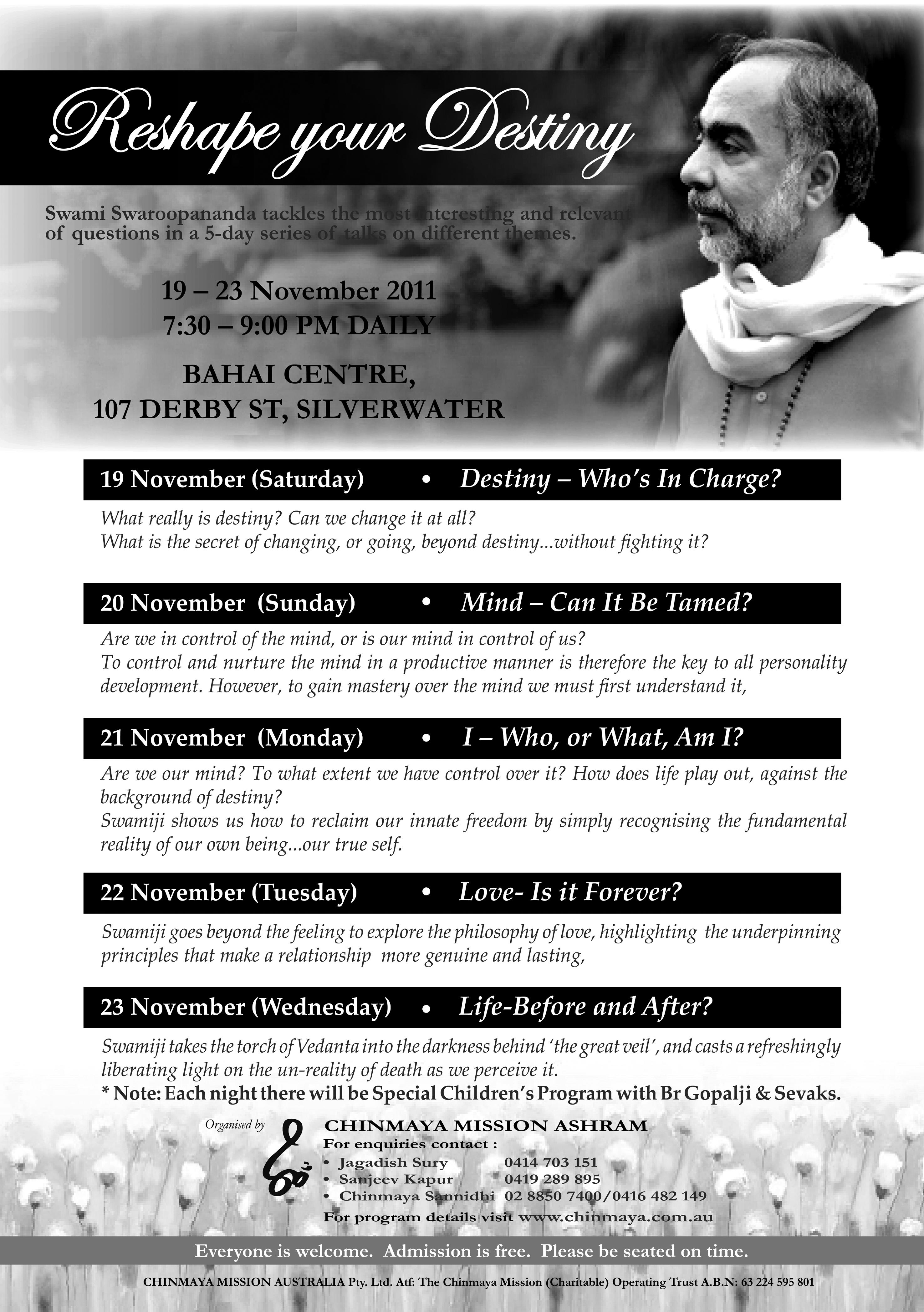
68 <> SEPTEMBER (2) 2011 INDIAN LINK
Wednesday till Sunday 6pm till late



SEPTEMBER (2) 2011 <> 69 NATIONAL EDITION

70 <> SEPTEMBER (2) 2011 INDIAN LINK

SEPTEMBER (2) 2011 <> 71 NATIONAL EDITION


72 <> SEPTEMBER (2) 2011 INDIAN LINK















































 BY PRIYANKA TATER
BY PRIYANKA TATER
















 BY SHRADDHA ARJUN
BY SHRADDHA ARJUN

















































































































































 BY MALLI IYER
BY MALLI IYER


 BY SANDIP HOR
BY SANDIP HOR








































































































